Art World
See Almost All of the 2024 Venice Biennale in More Than 100 Photos
How is Adriano Pedrosa's 'Foreigners Everywhere?' Judge for yourself.
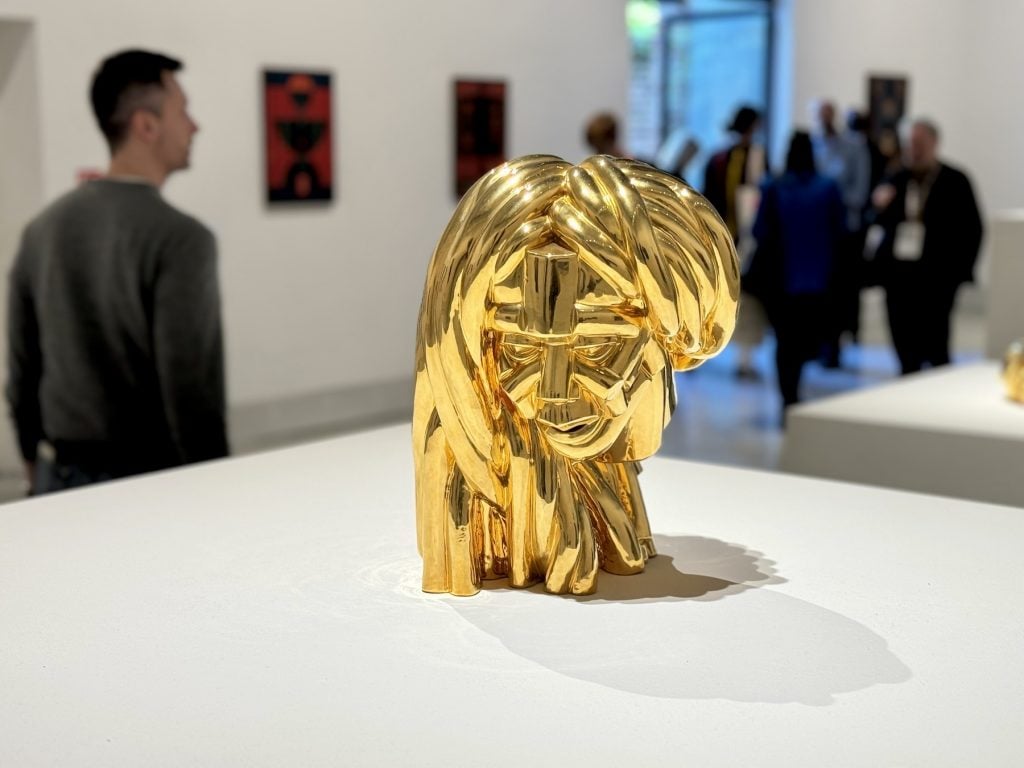
It’s amazing how fast it all happens. After months and months of preparation and build up, thousands of art professionals converge for the Venice Biennale over the course of a frenzied VIP week. They swarm the Biennale’s main sites, form an impression (usually in between a swirl of other social events, competing attractions, and side missions)—and then, like a flash mob dispersing, they sweep away just as quickly.
It’s a form of viewing encouraged by the biennial format—with their huge casts of artists, these vast international festivals encourage mania. But it is also a form of viewing that is notably out of sync with how any art show, let alone one filled with big and challenging ideas, might be best appreciated.
Helmed by Brazilian curator Adriano Pedrosa under the title “Foreigners Everywhere,” the 60th edition of the closely watched survey has, as ever, a lot to untangle. It’s worth carefully thinking over what it all means. Below, I’ve put together some photos to give a sense of what it all feels like (also, honestly, to help organize my own thinking as I finish a bigger review).
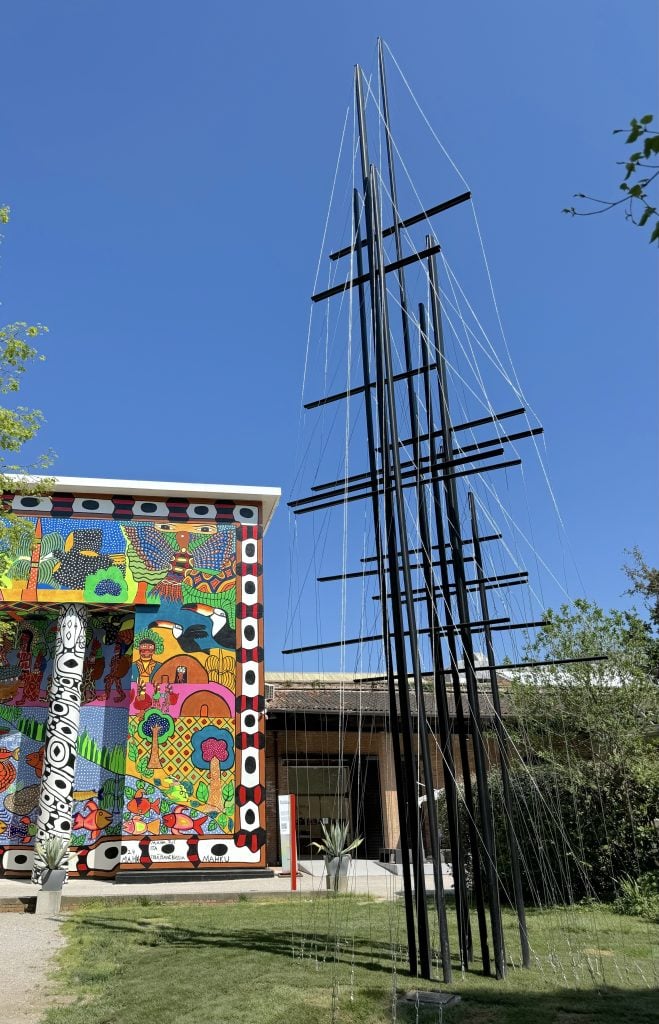
Mariana Telleria, God Is an Immigrant (2017/2023). Photo by Ben Davis.
For most visitors, the show starts in the Giardini: the Central Pavilion.
Arriving, Pedrosa has struck an inviting note with his decision to put a soaring work by Argentinian artist Mariana Telleria out front, recreating a pro-immigrant monument from the Museo de la Inmigración in Buenos Aires. Even more spectacularly, he has given the facade over to a collective of Brazilian Indigenous artists known as MAHKU (Movimento dos Artistas Huni Kuin), who adorn the building with gorgeous, florescent tropical camouflage.
Within, the show overwhelmingly favors traditional two-dimensional media, principally painting and drawing, with most galleries pairing work by historic (meaning, dead) artists and contemporary fare. Usually, there’s an implicit theme to be decoded, like gay cruising, African diasporic artists in Italy, or female mysticism. There is also a run of galleries that center more confrontational work that flirts with documentary and lecture forms. An installation of Nil Yalter, Exile Is a Hard Job (1977-2024), sets this tone right as you enter, featuring video testimony from exiles that plays quietly.
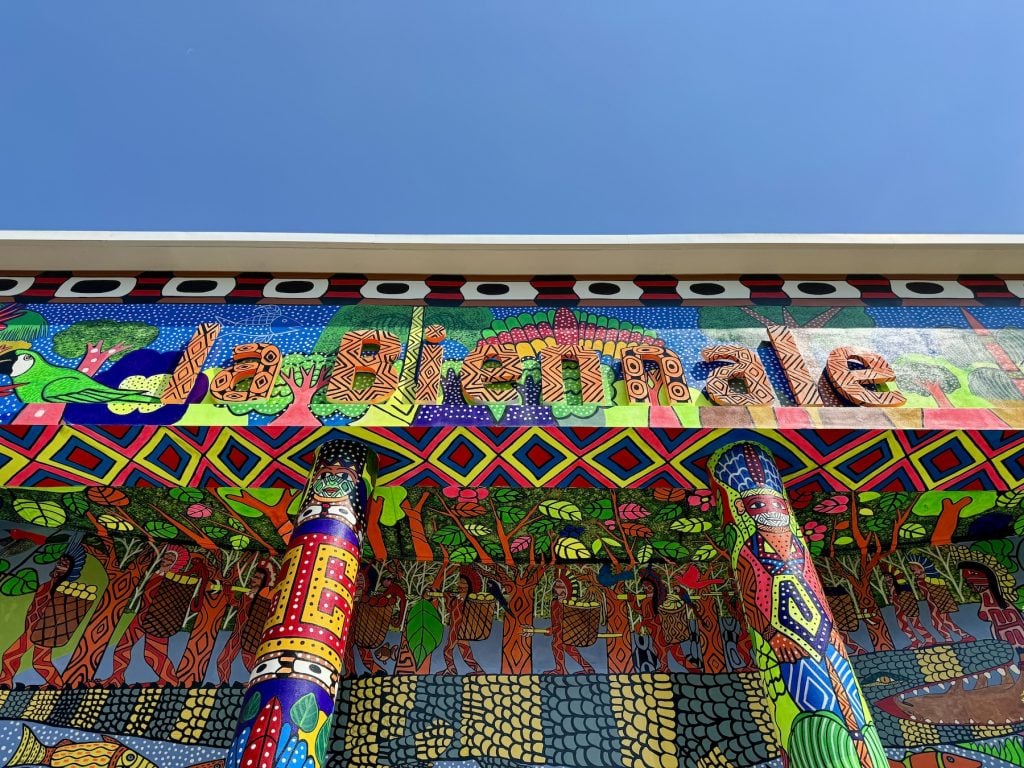
Facade of the Central Pavilion for the 60th Venice Biennale, restyled by MAHKU (Movimento dos Artistas Huni Kuin). Photo by Ben Davis.
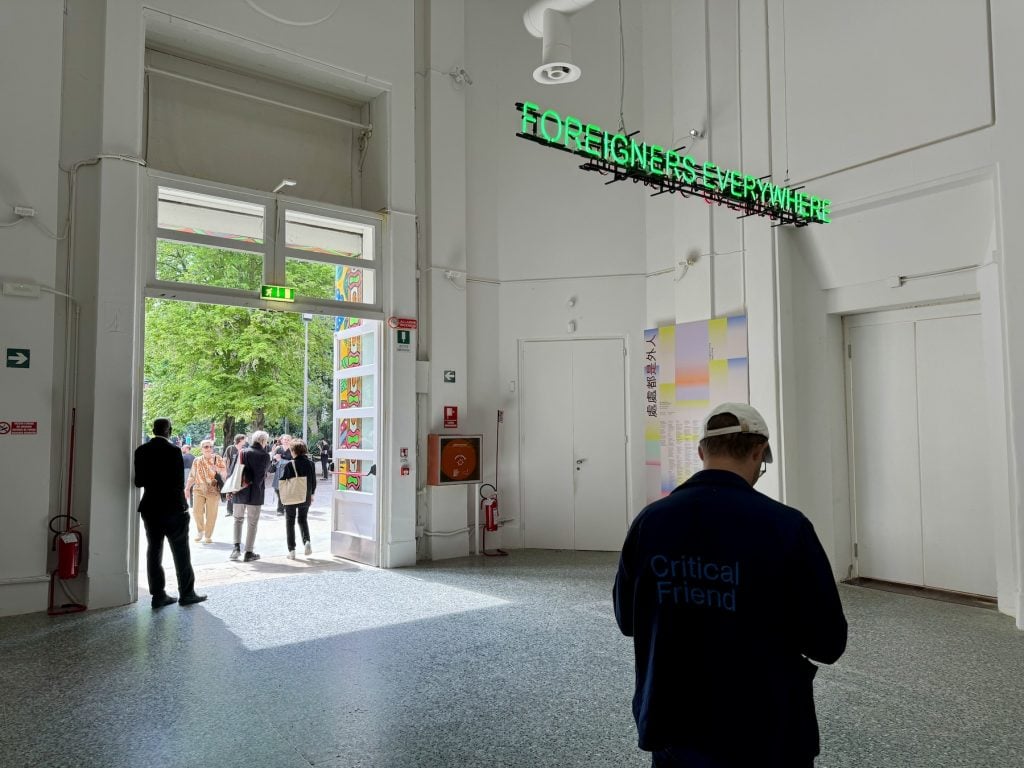
Neon work by Claire Fontaine. Photo by Ben Davis.
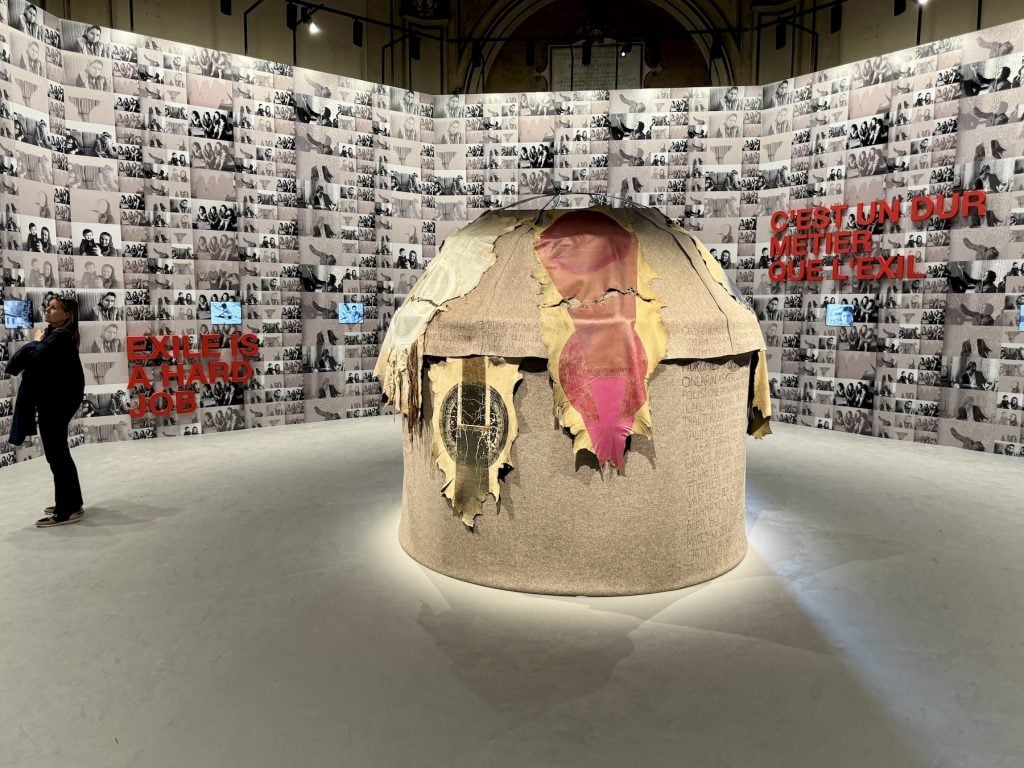
Works by Nil Yalter. Photo by Ben Davis.
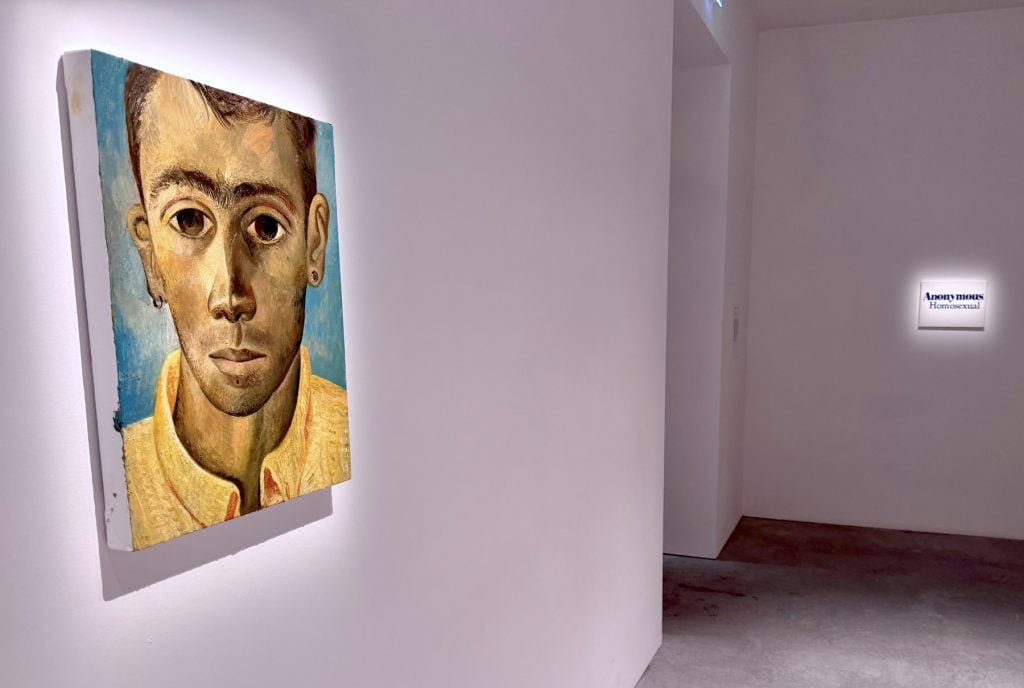
Louis Fratino, Alessandro in a Seersucker Shirt (2024) and Dean Sameshima, Anonymous Homosexual (2020). Photo by Ben Davis.

Dean Sameshima, being alone (2022). Photo by Ben Davis.
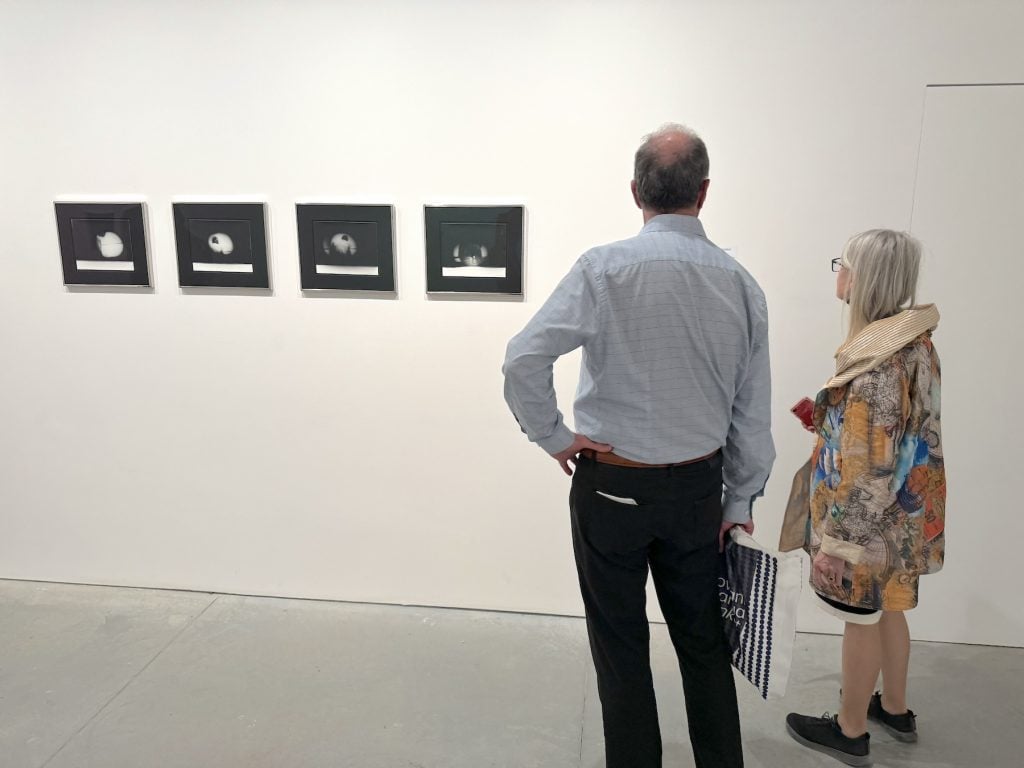
Miguel Ángel Rojas, El Negro (1979). Photo by Ben Davis.
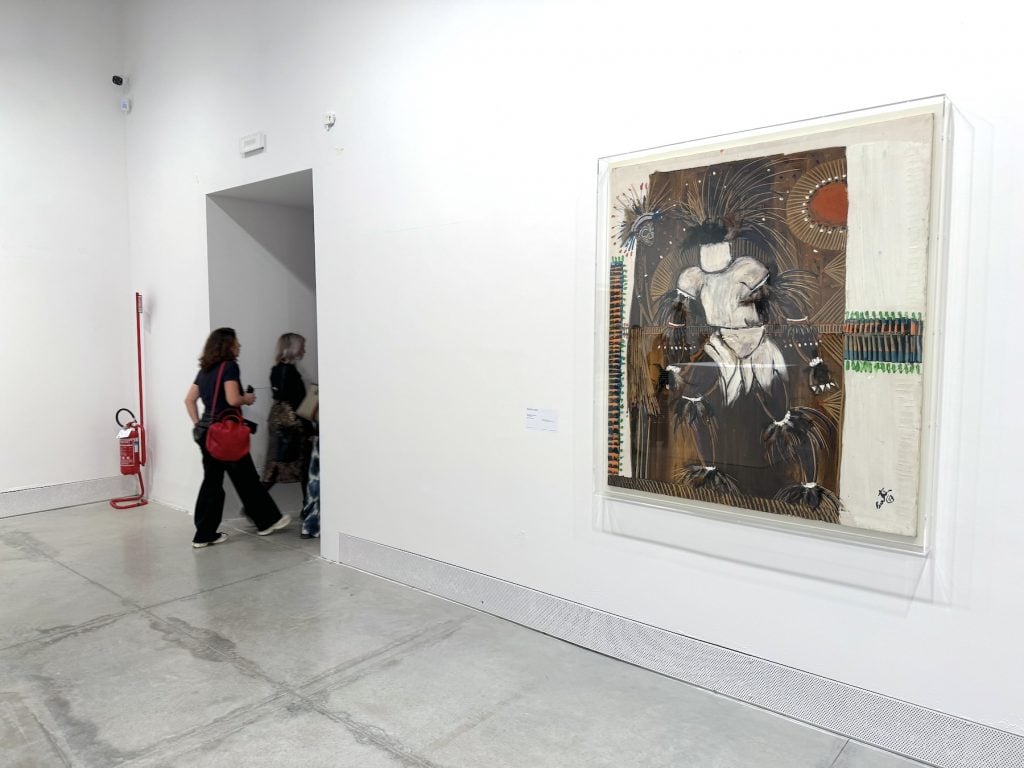
Bertina Lopes, Rais Antica 2 – Una historia verdadera (1972). Photo by Ben Davis.
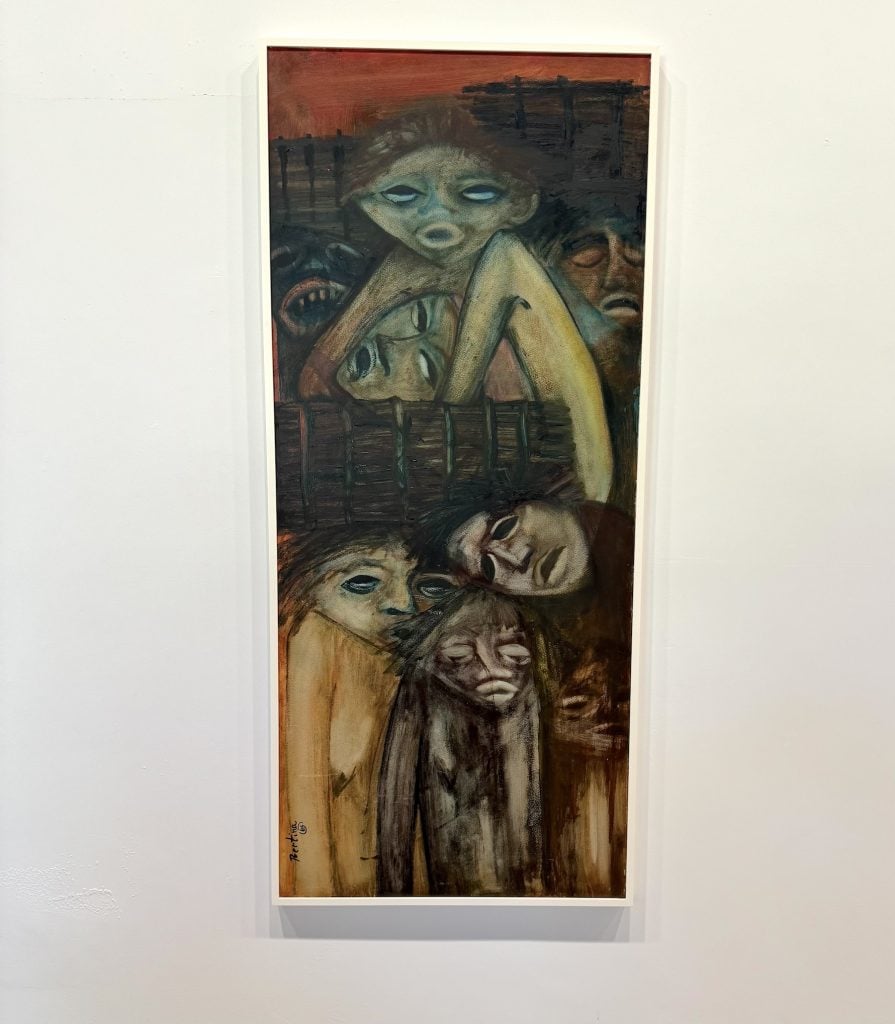
Bertina Lopes, Rais Antica 2 – Una historia verdadera (1972). Photo by Ben Davis.
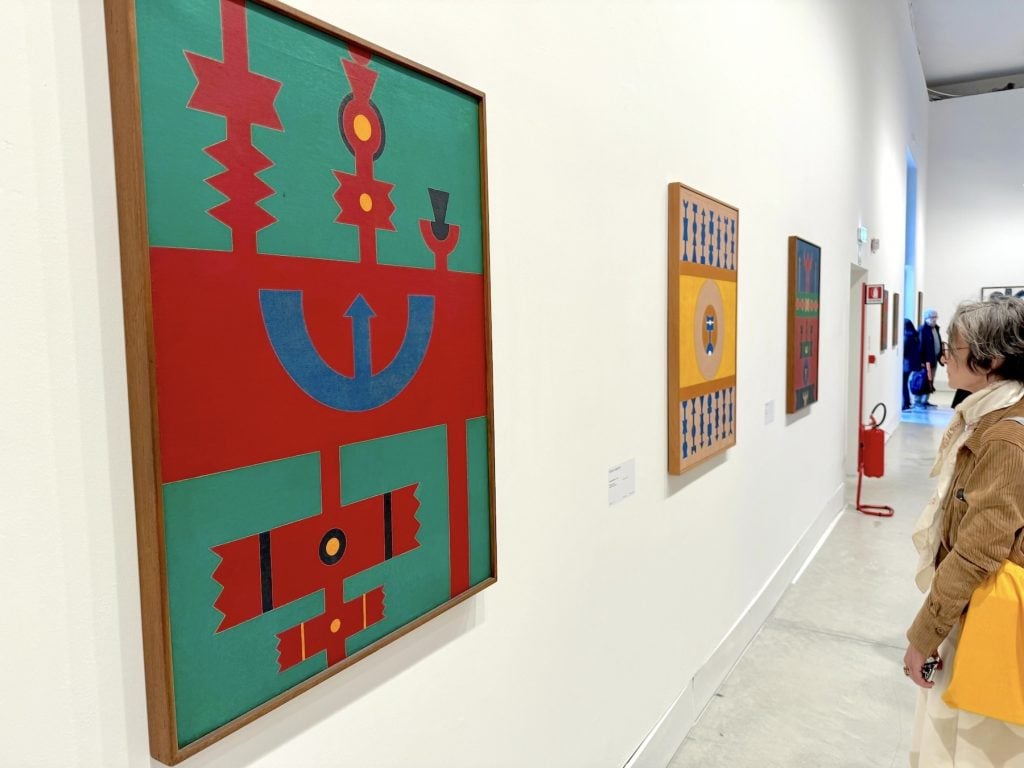
Paintings by Rubem Valentim. Photo by Ben Davis.
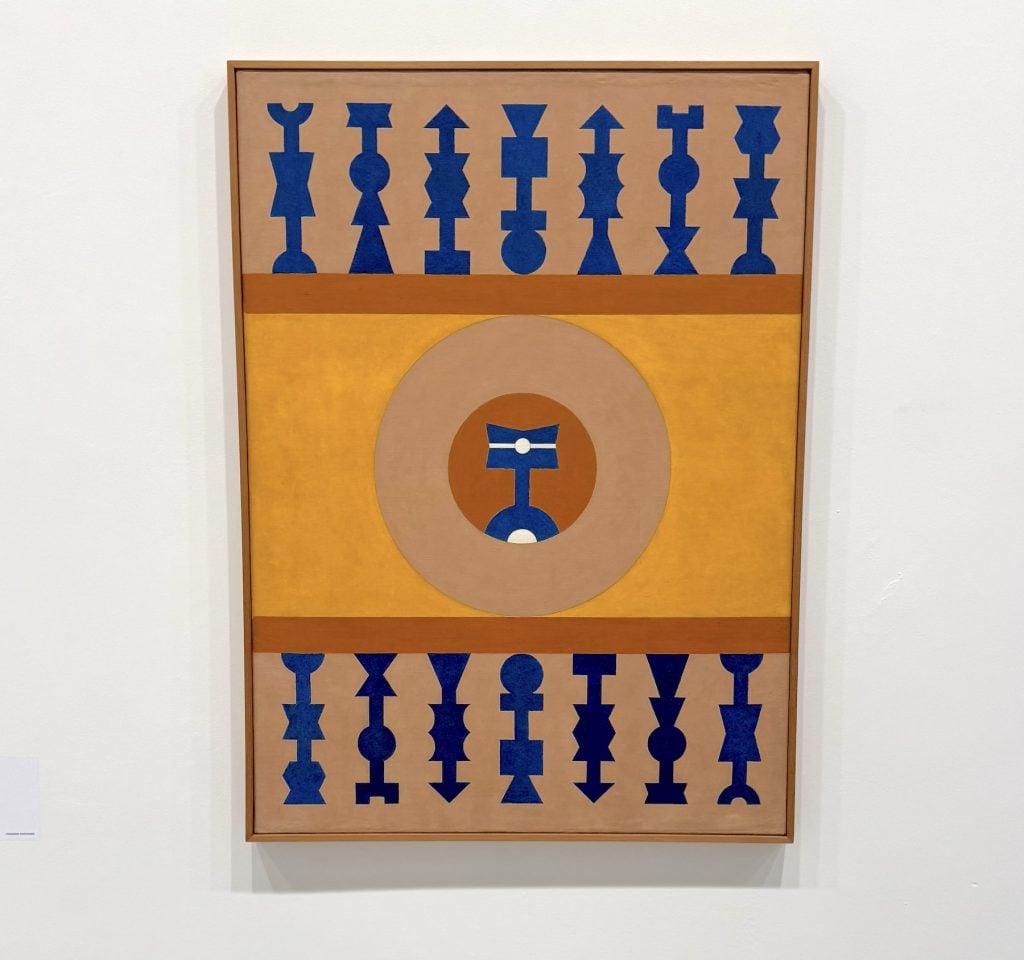
Rubem Valentim, Composição Bahia n. 1 (1966). Photo by Ben Davis.
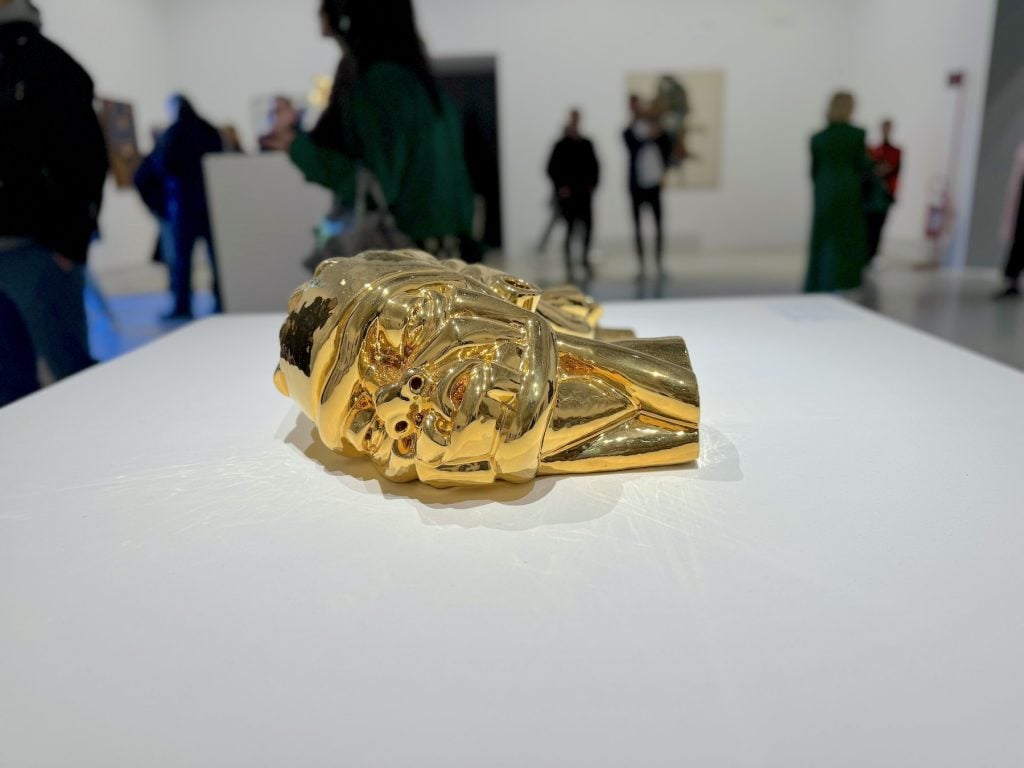
Victor Fotso Nyie, Veglia (2023). Photo by Ben Davis.
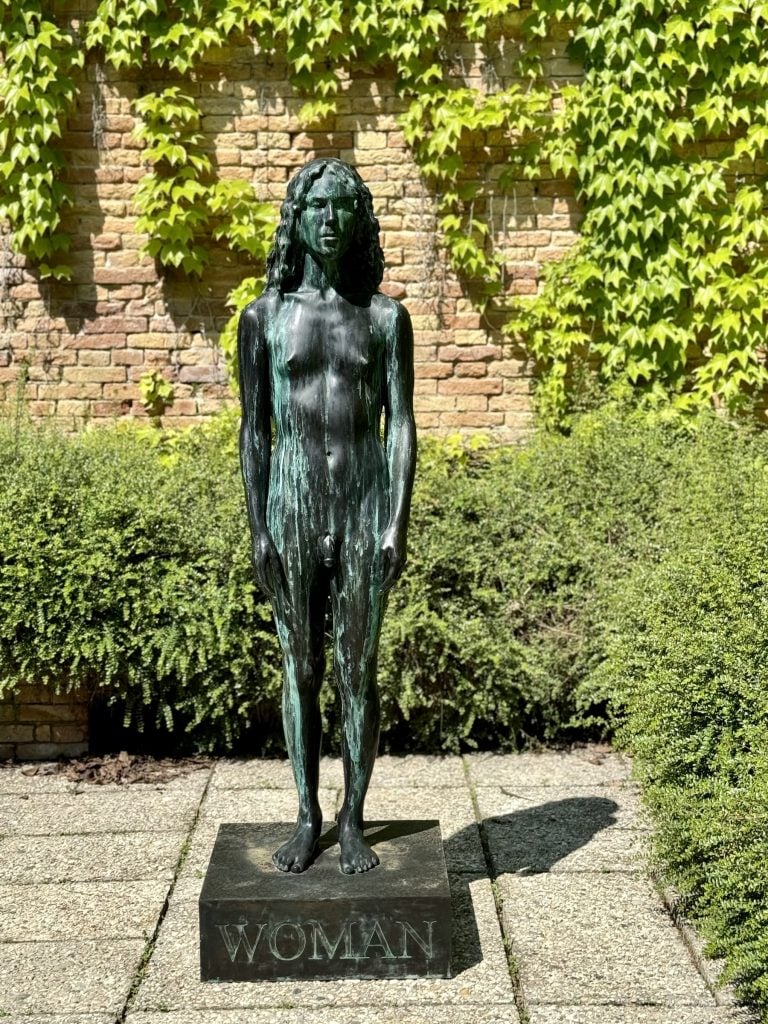
Puppies Puppies, A Sculpture for Trans Women… (2022). Photo by Ben Davis.
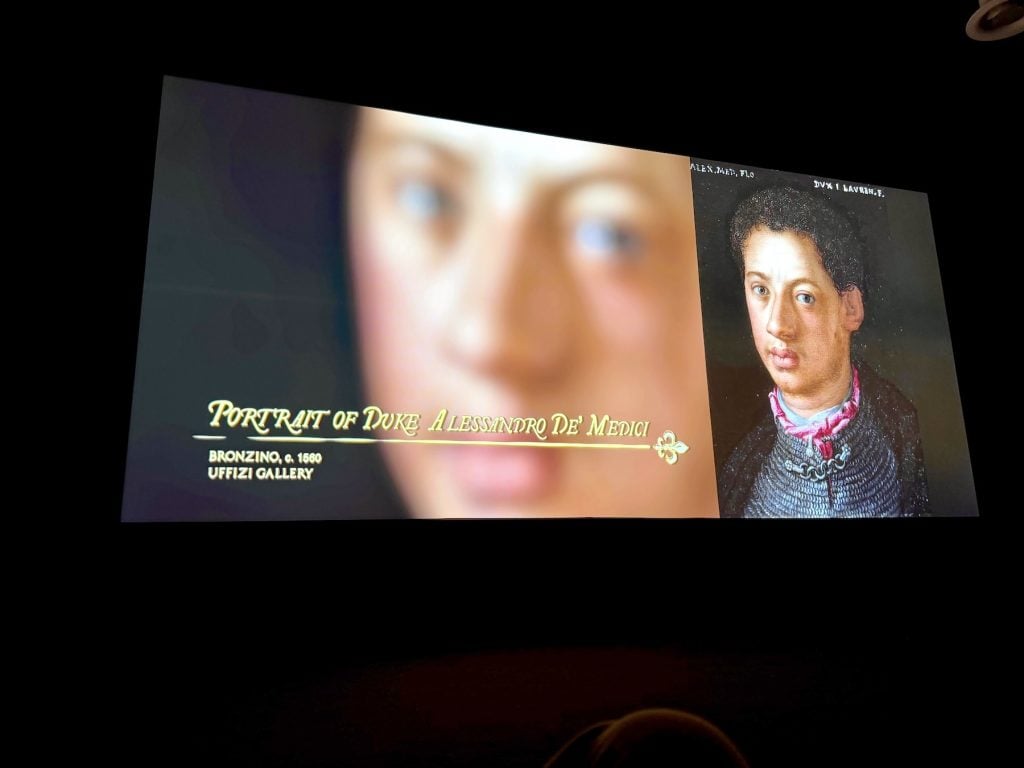
Fred Kuwornu, We Were Here: The Untold History of Black Africans in Renaissance Europe (2024). Photo by Ben Davis.
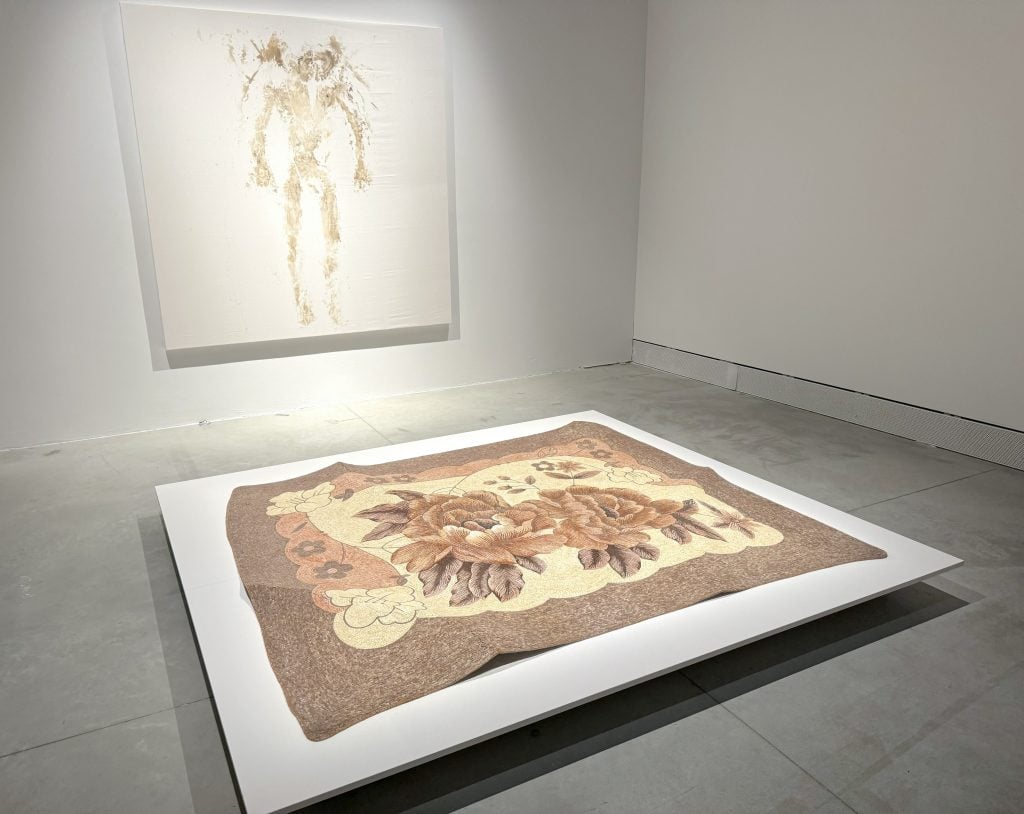
On the wall: Teresa Margolles, Tela venezuelana (2019), with Omar Mismar, Spring Cleaning (2022). Photo by Ben Davis.
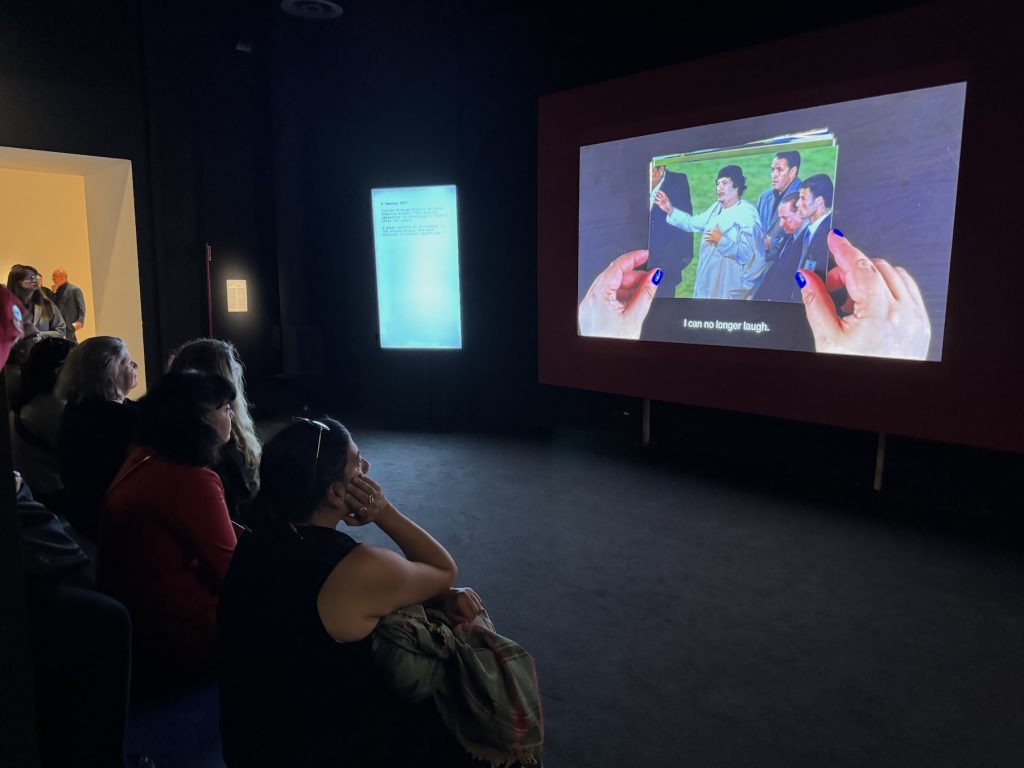
Alessandra Ferrini, Gaddafi in Rome: Anatomy of a Friendship (2024). Photo by Ben Davis.
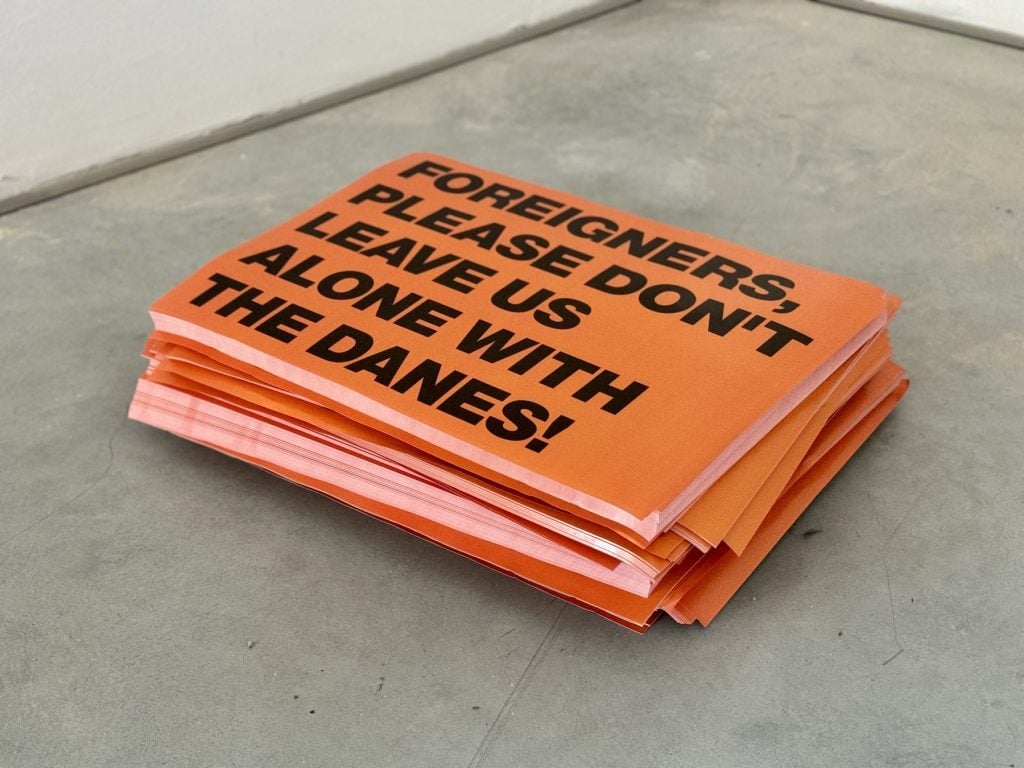
Superflex, Foreigners Please Don’t Leave Us Alone With the Danes! (2002). Photo by Ben Davis.
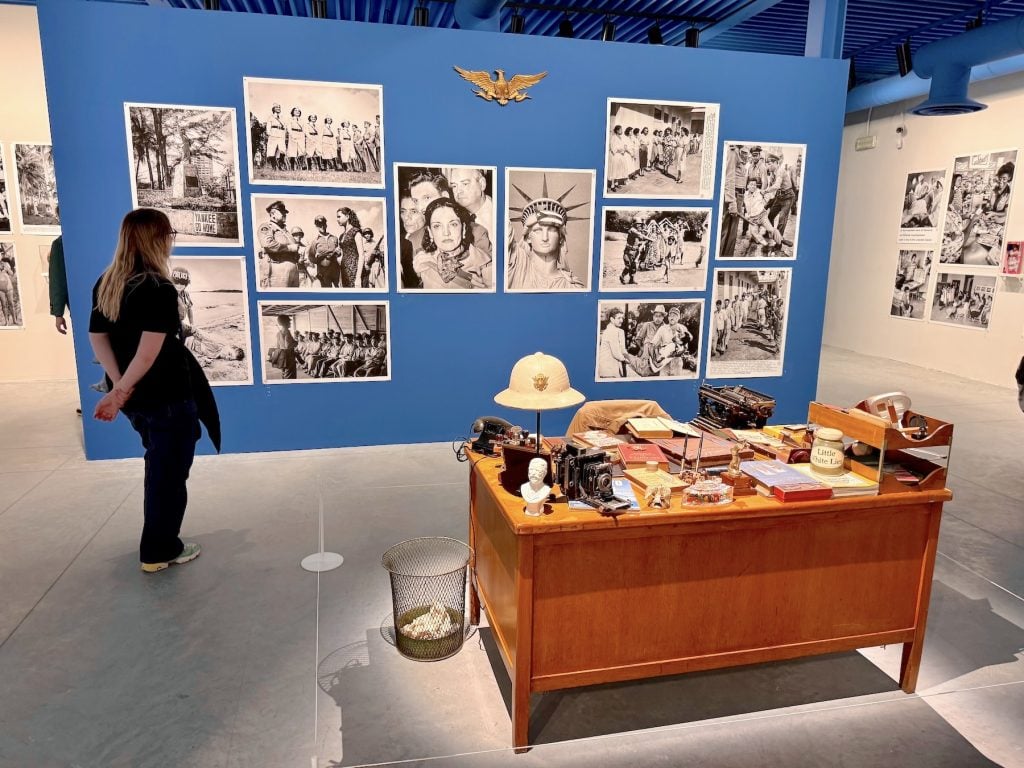
Pablo Delano, The Museum of the Old Colony. Photo by Ben Davis.
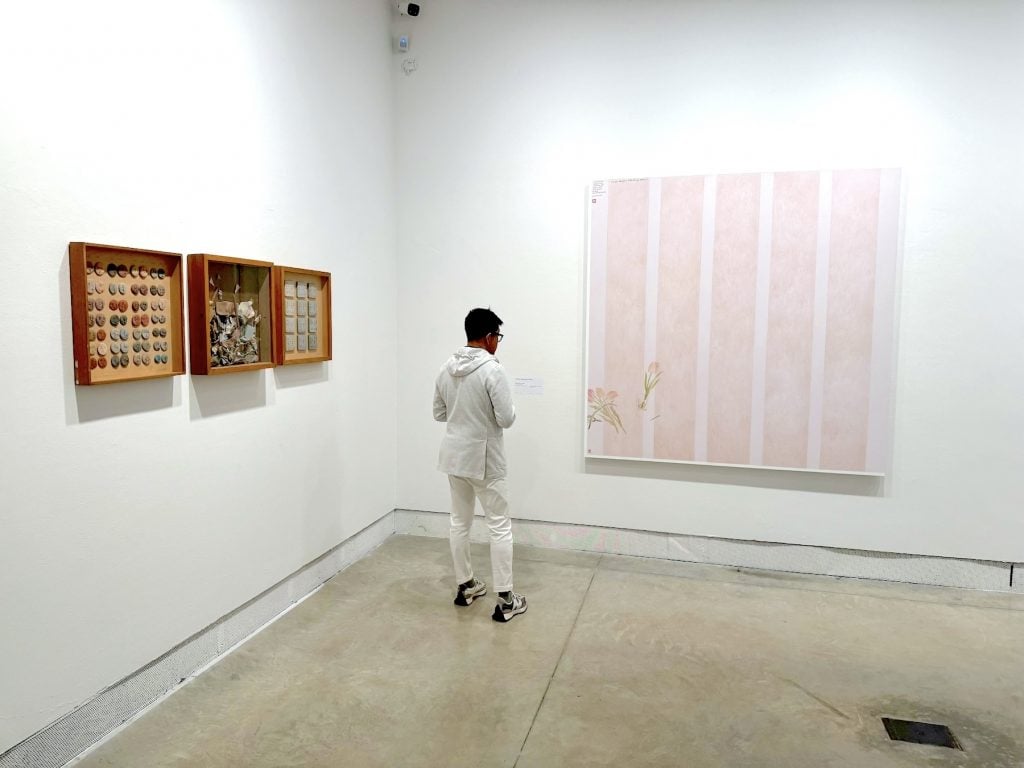
Various works by Nedda Guidi and Evelyn Taocheng Wang, Tulip in Whiskey and Imitation of Agnes Martin (2023). Photo by Ben Davis.
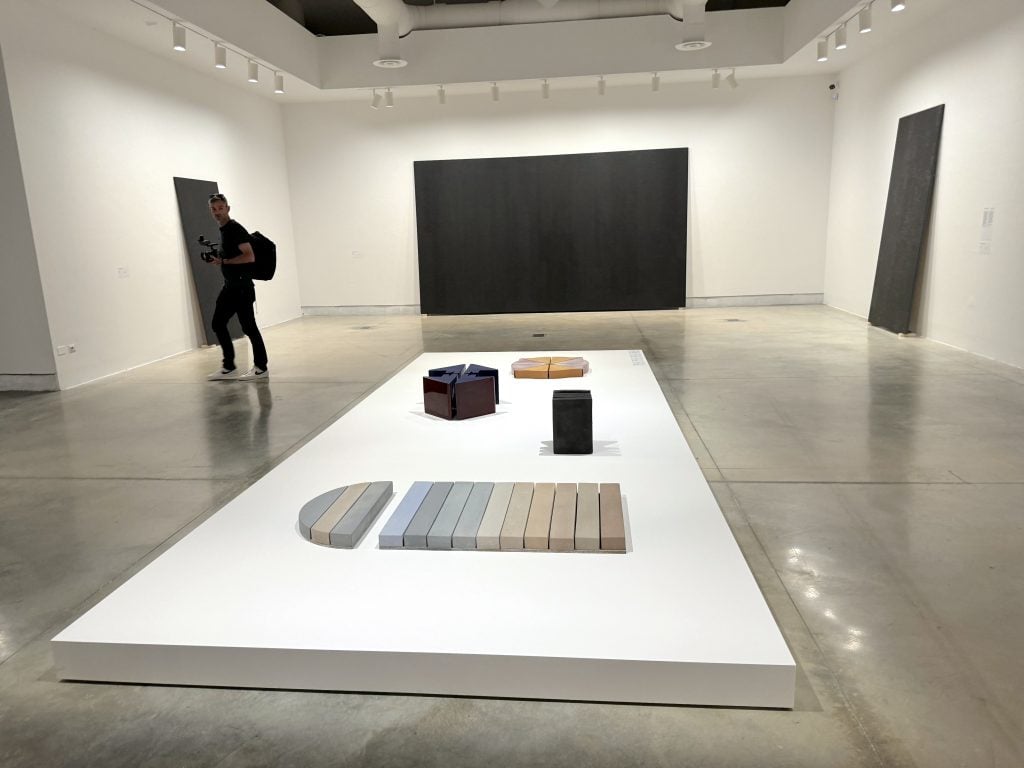
On the ground, various sculptures by Nedda Guidi, with paintings by Maria Taniguchi in the background. Photo by Ben Davis.
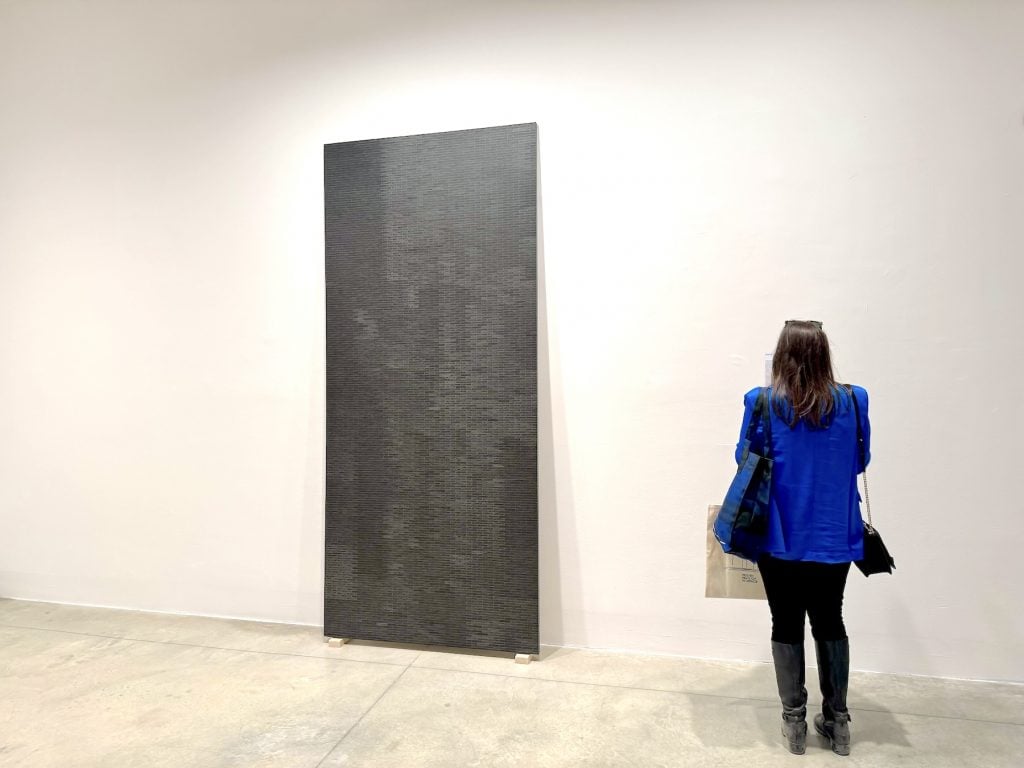
Maria Taniguchi, Untitled (2023). Photo by Ben Davis.
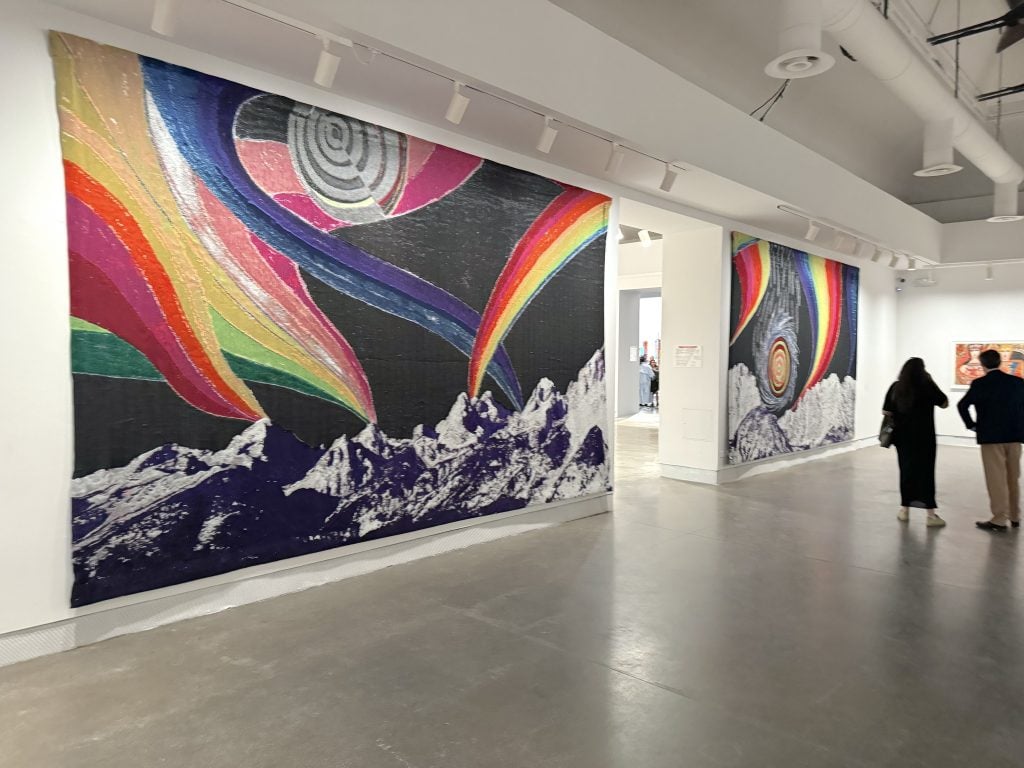
Two textile works by Liz Collins. Photo by Ben Davis.
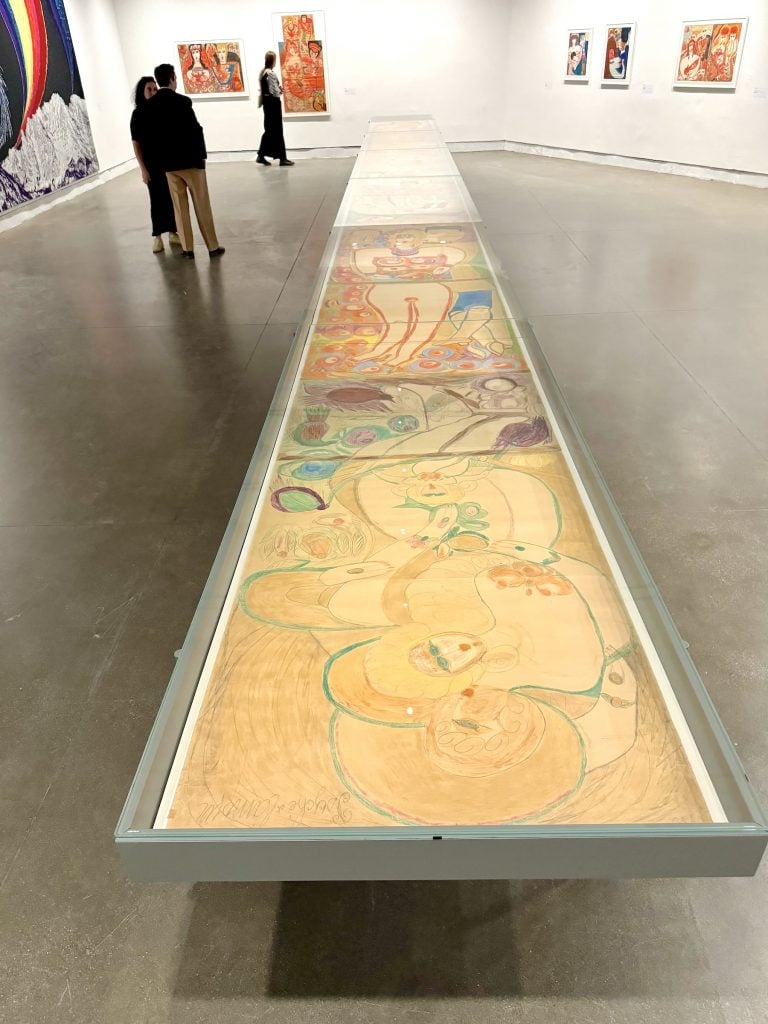
Aloïse, Theater Partition (1941–51). Photo by Ben Davis.
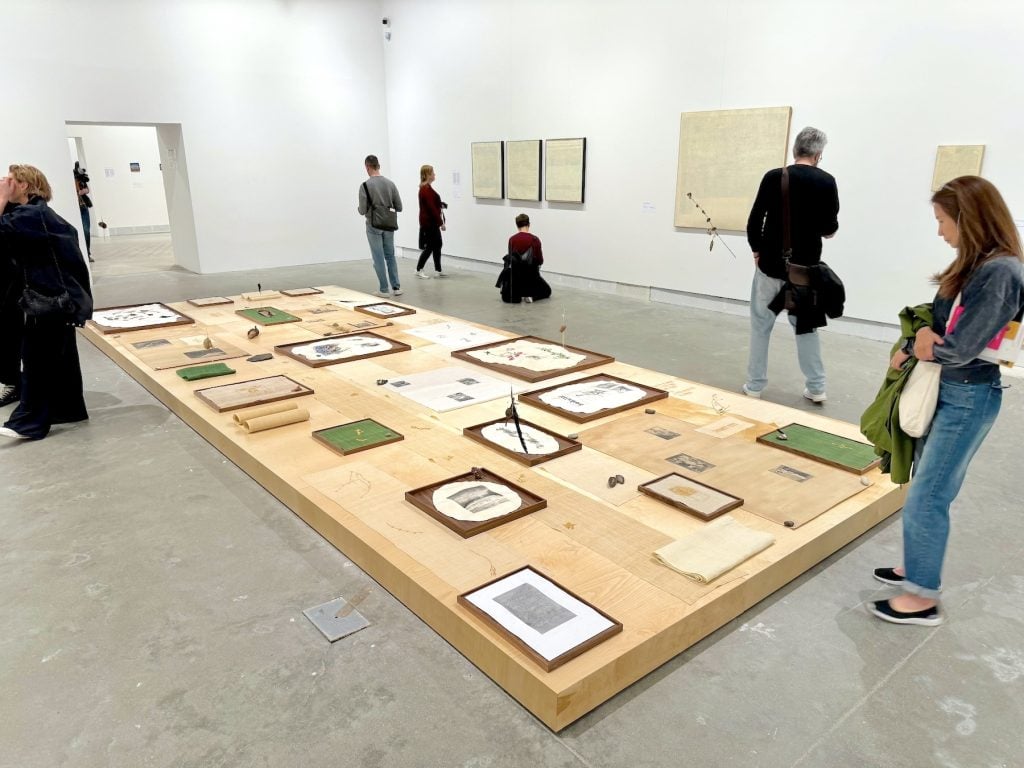
Kang Seung Lee, Untitled (Constellation), 2023, on the ground, with works by Romany Eveleigh on the wall behind. Photo by Ben Davis.
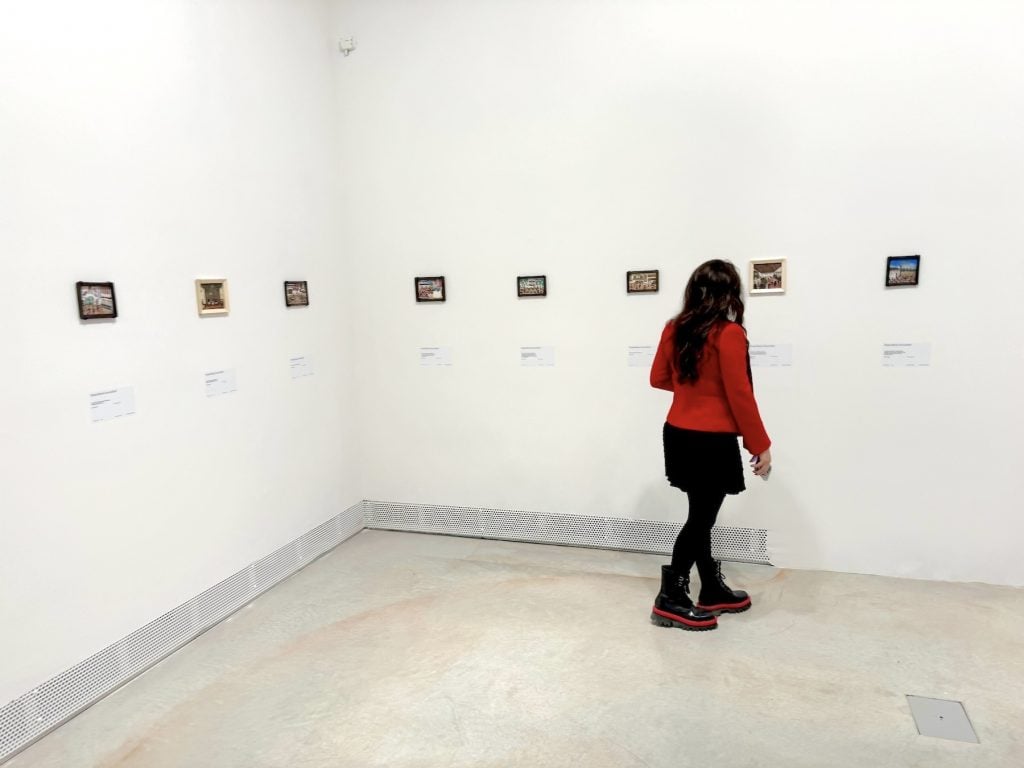
Various paintings by Rosa Elena Curruchich. Photo by Ben Davis.
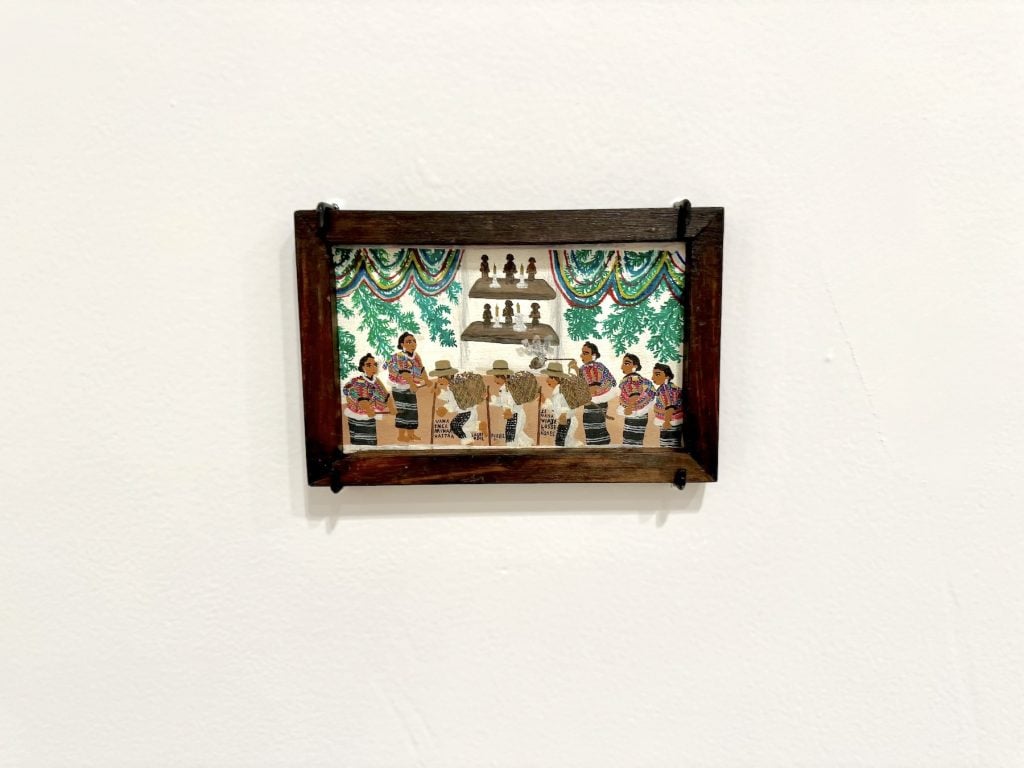
Rosa Elena Curruchich, They Are Going to Walk to the Other Side of the Village, The Gentlemen Are Going to Travel (1980). Photo by Ben Davis.
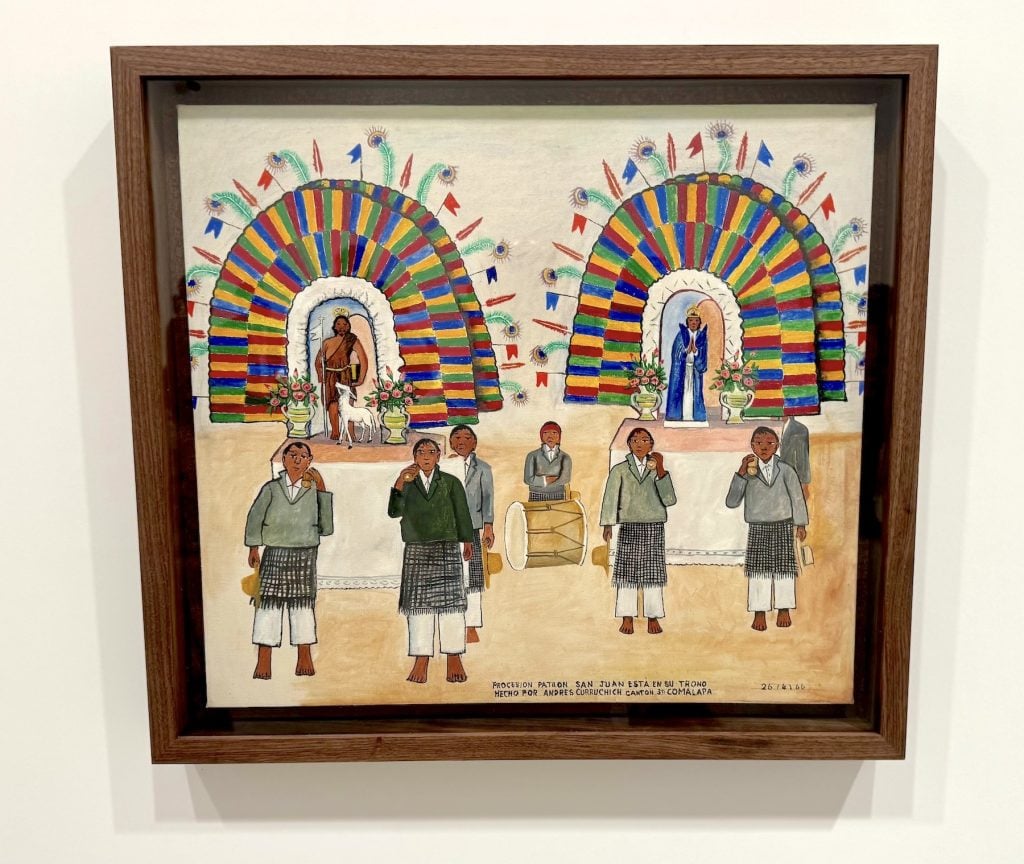
Andrés Curruchich, Procesión: Patron de San Juan esta en su trono (1966). Photo by Ben Davis.
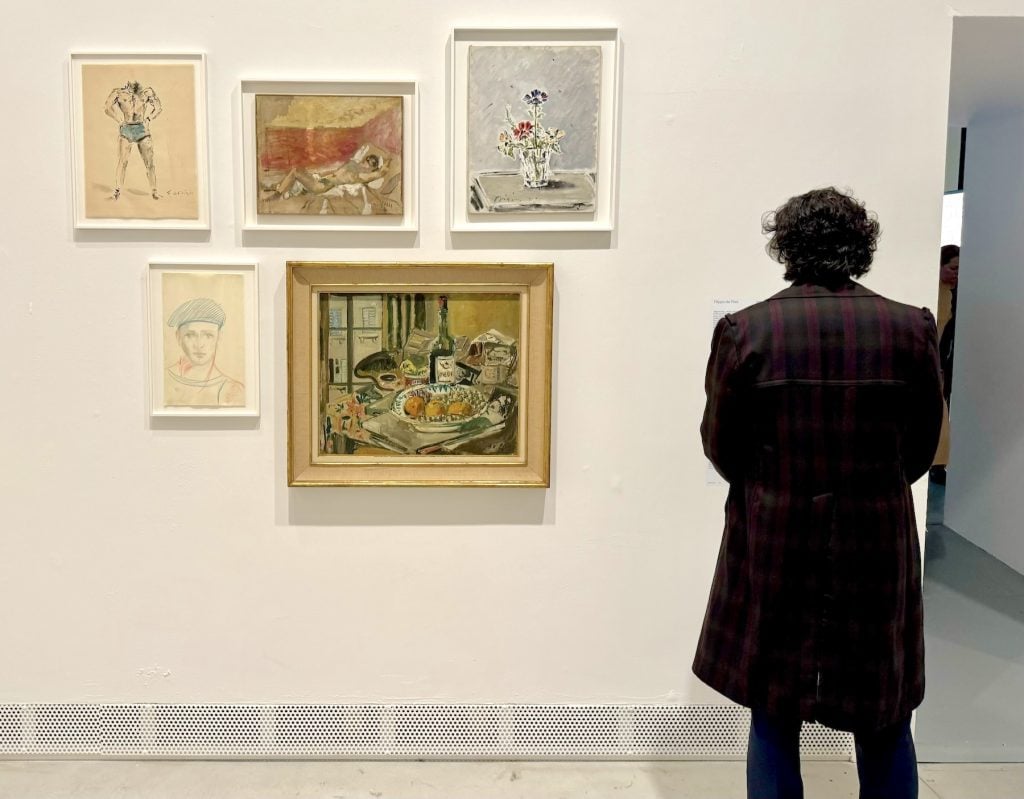
Various works by Filippo de Pisis. Photo by Ben Davis.
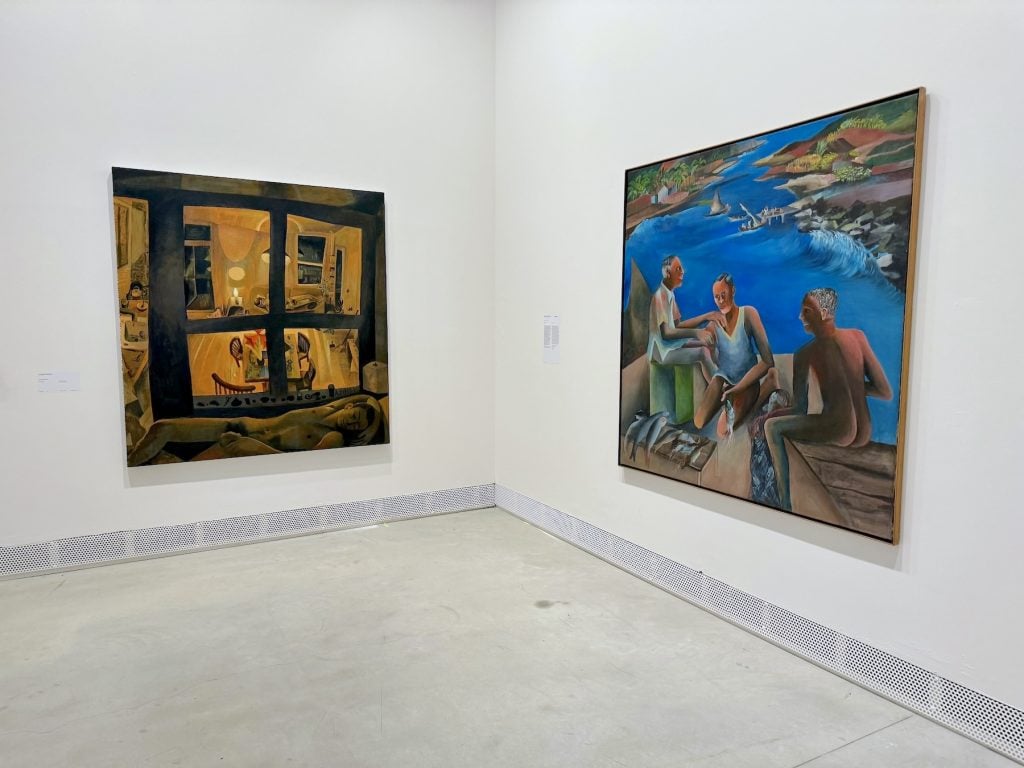
Louis Fratino, An Argument (2021) and Bhupen Khakhar, Fishermen in Goa (1985). Photo by Ben Davis.
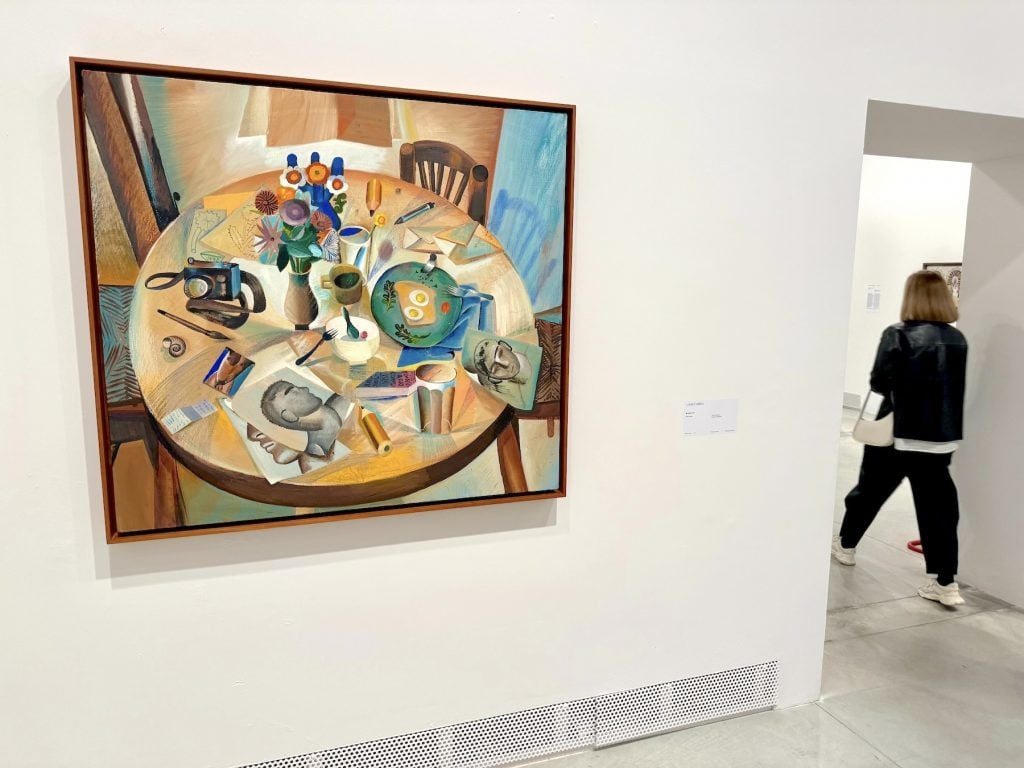
Louis Fratino, My Meal (2019). Photo by Ben Davis.
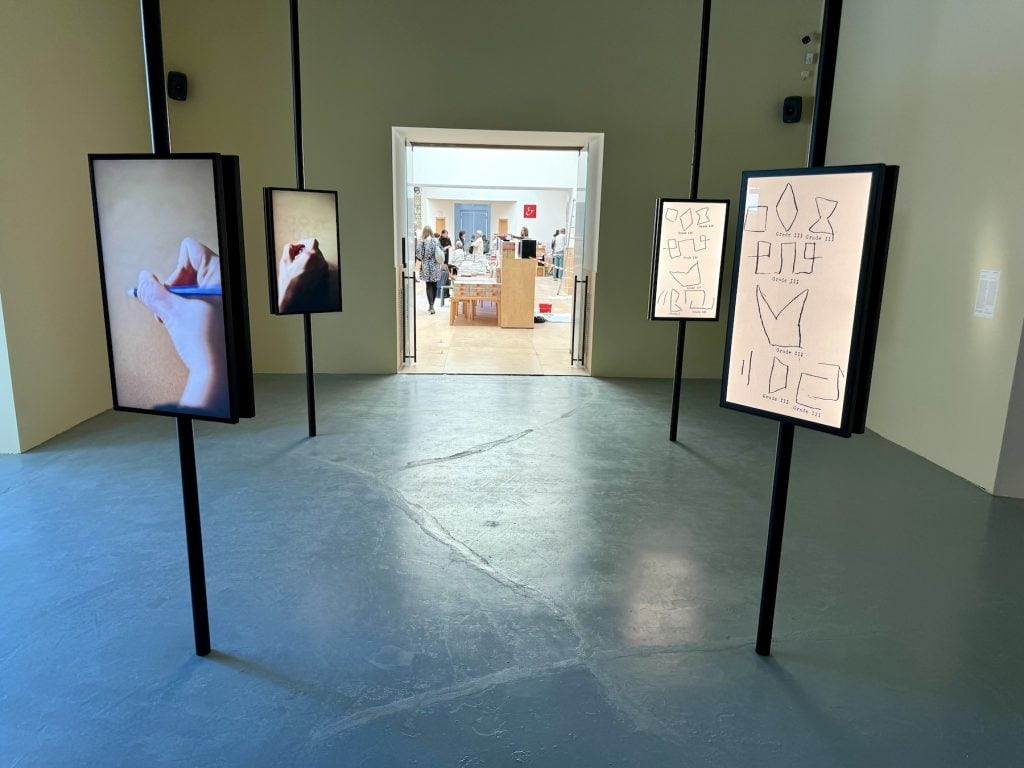
Joyce Joumaa, Memory Contours (2024). Photo by Ben Davis.
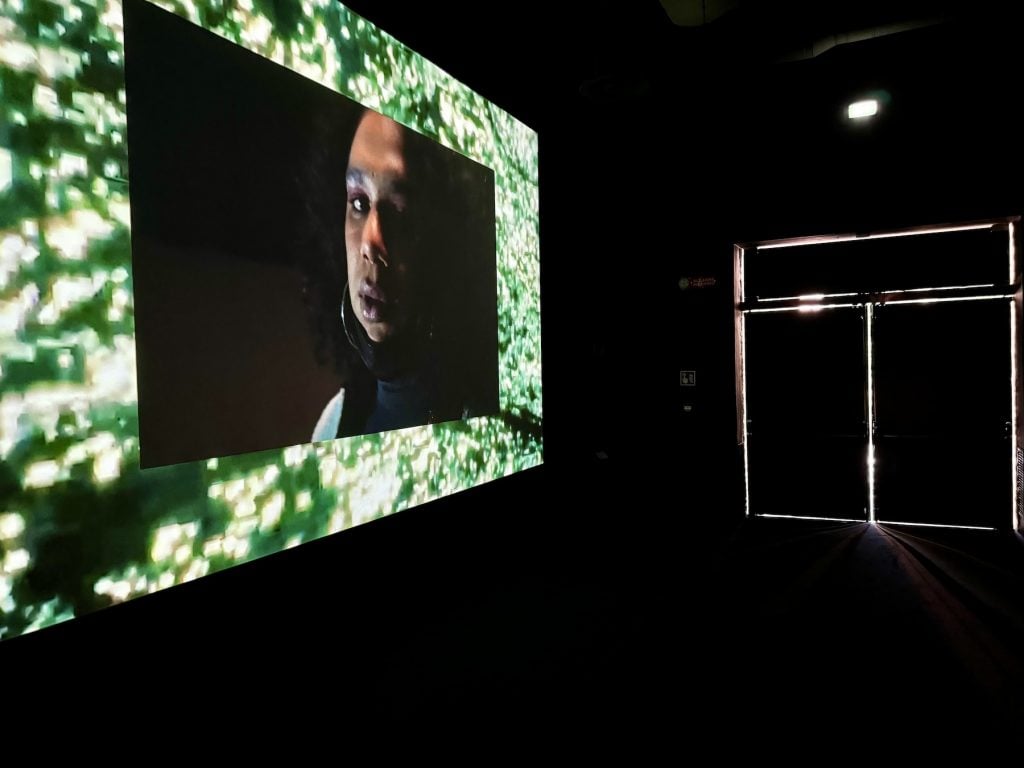
Manauara Clandestina, Building (2021–24). Photo by Ben Davis.
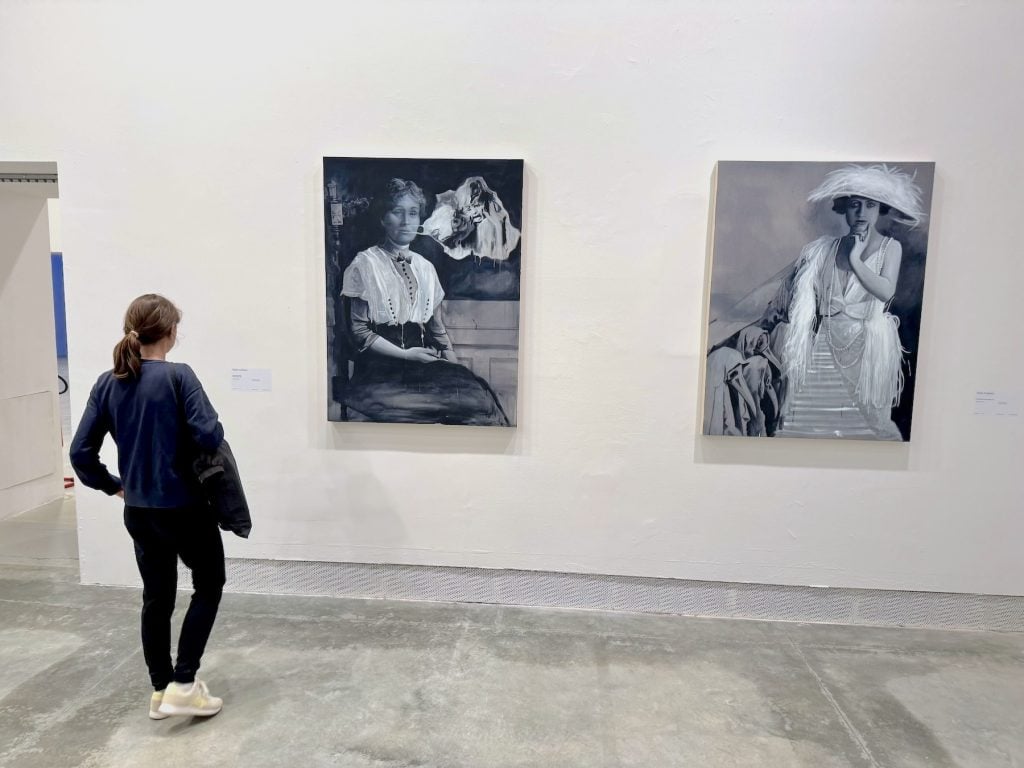
Two paintings by Giulia Andreani. Photo by Ben Davis.
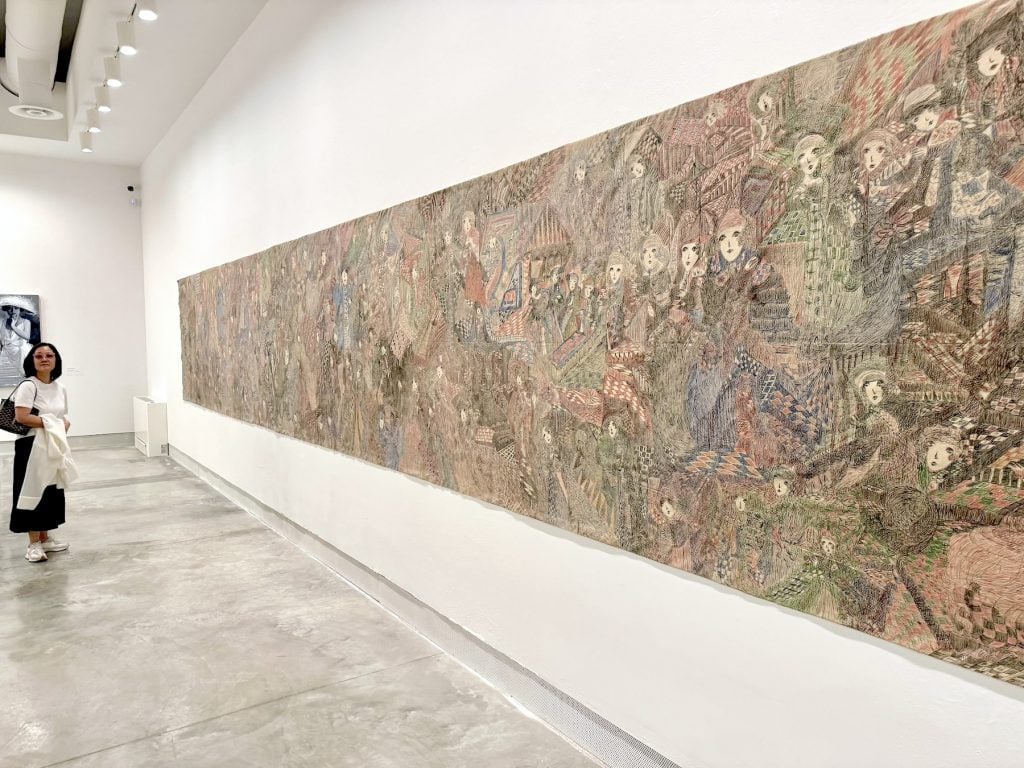
Madge Gill, Crucifixion of the Soul (1934). Photo by Ben Davis.
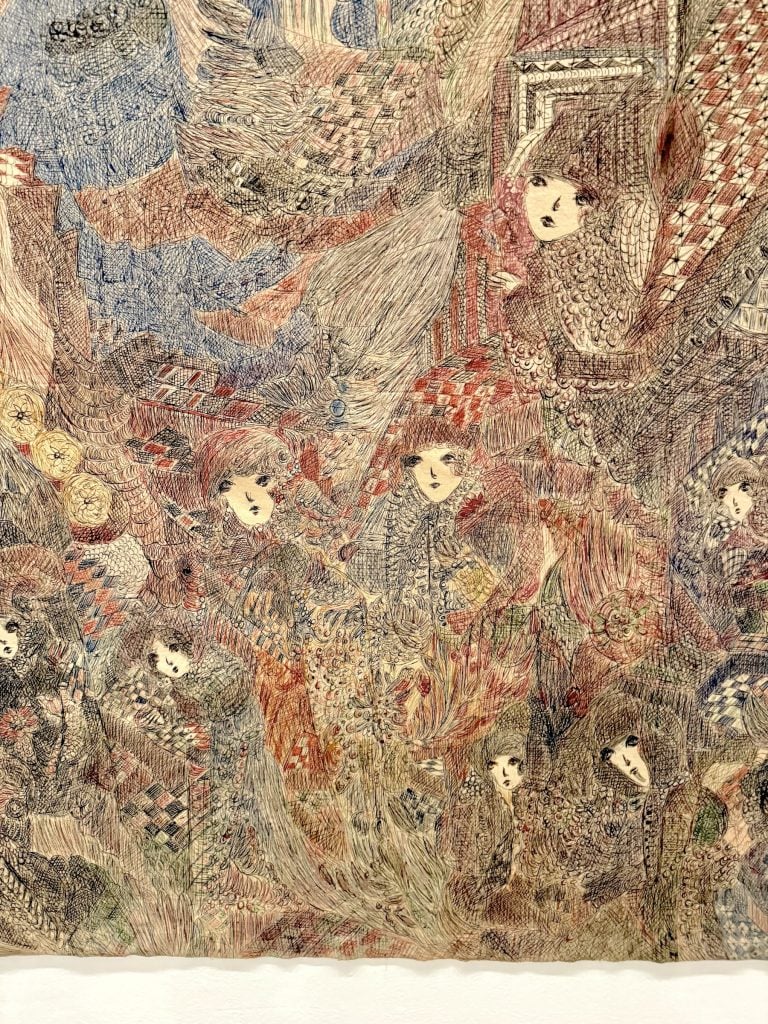
Detail of Madge Gill, Crucifixion of the Soul (1934). Photo by Ben Davis.
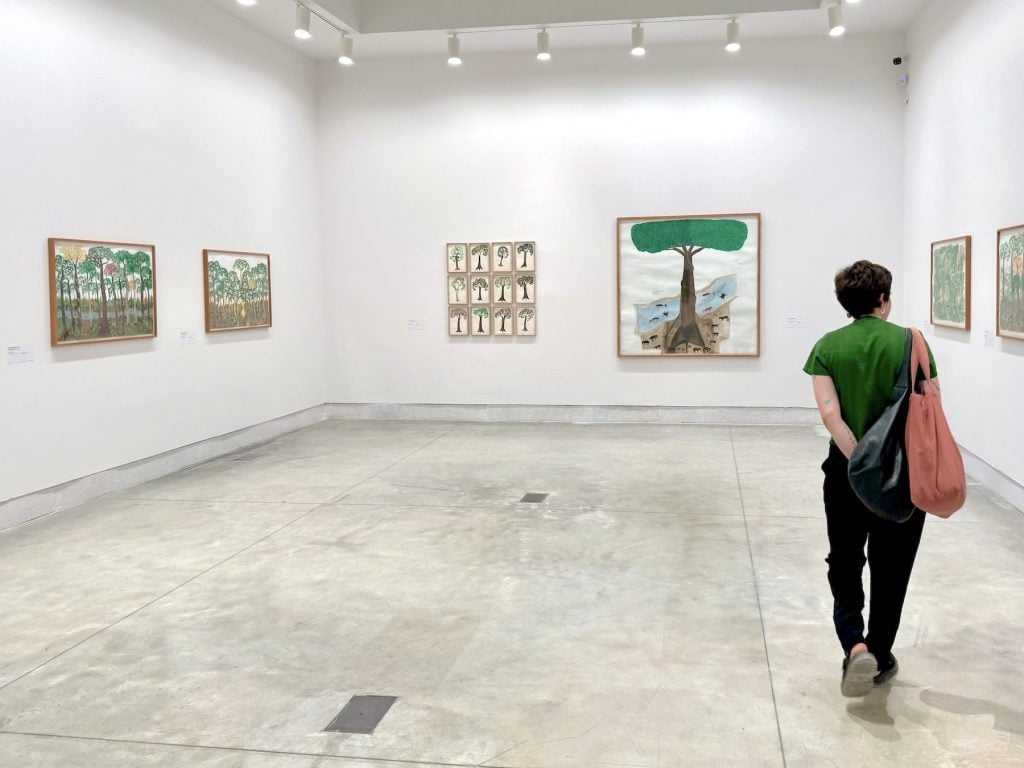
Works by Abel Rodríguez. Photo by Ben Davis.
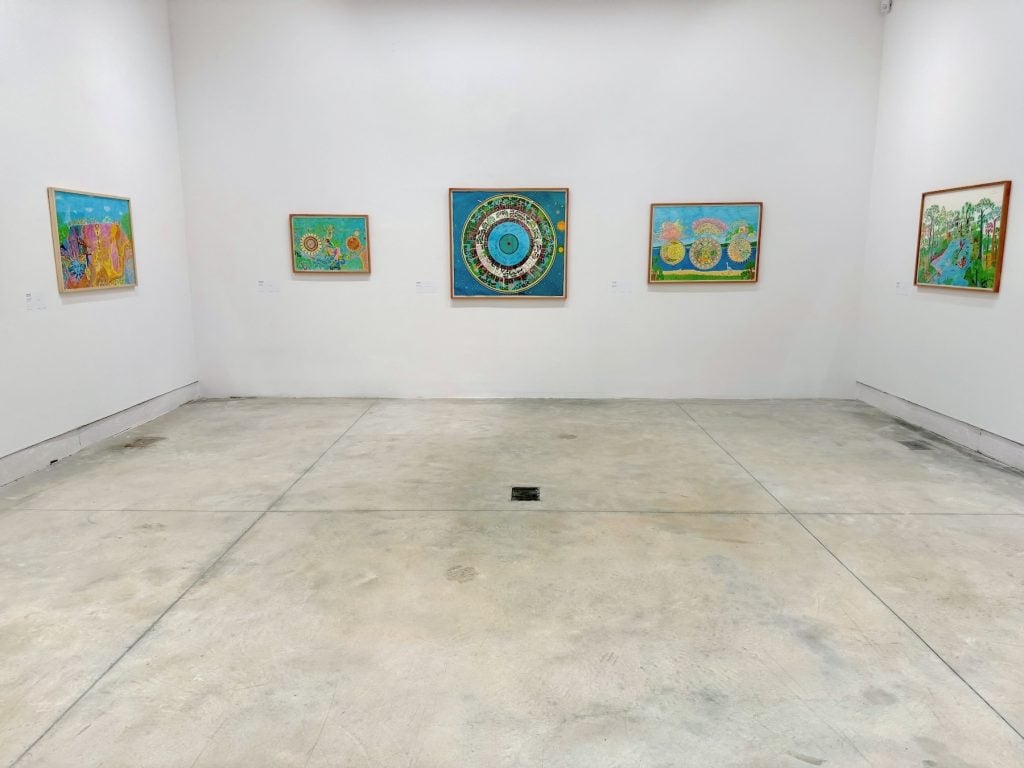
Various works by Aycoobo. Photo by Ben Davis.
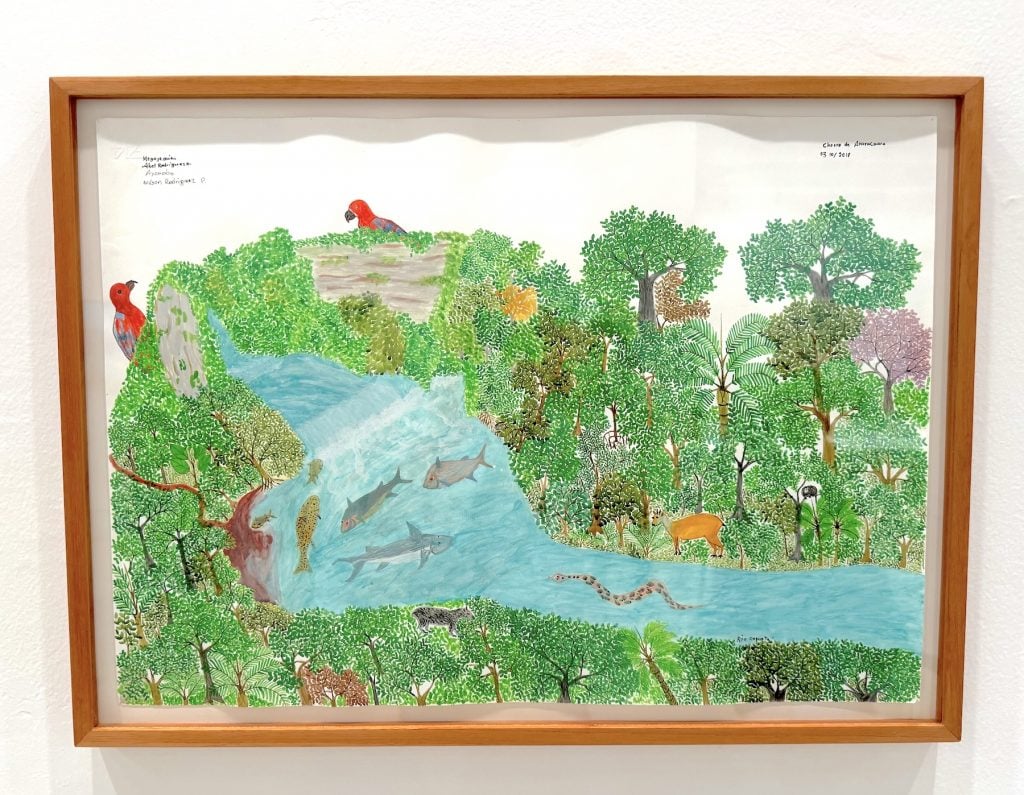
Abel Rodriguez and Aycoobo, Chorro de araracuara (2017). Photo by Ben Davis.
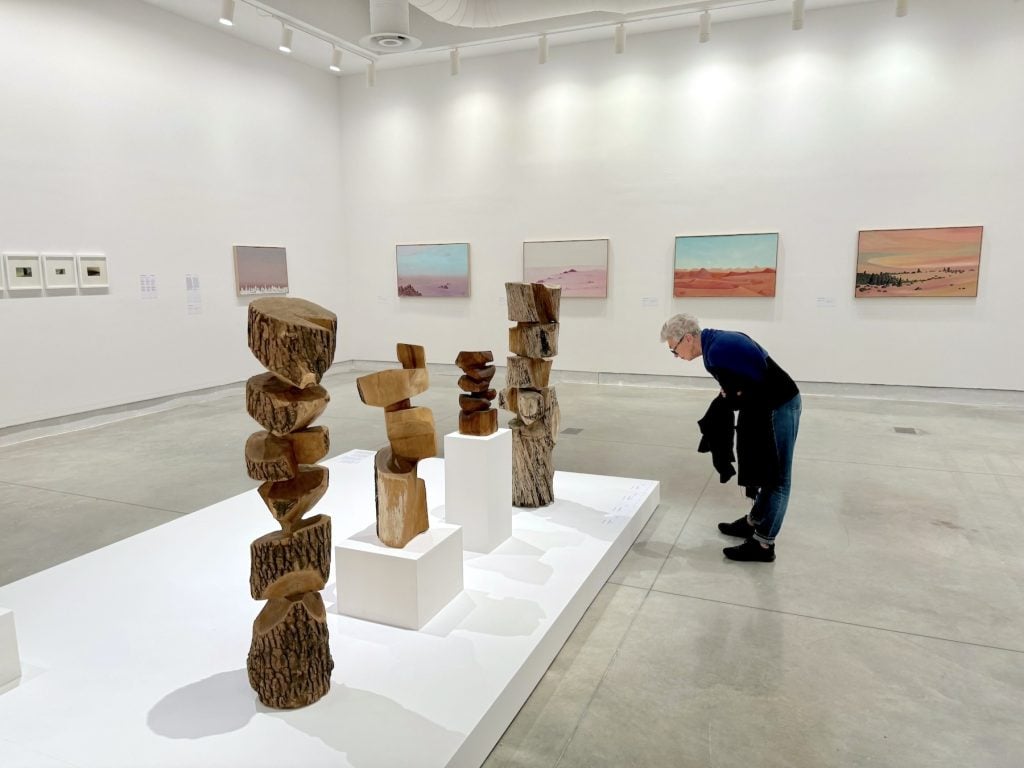
Sculptures by Kim Yun Shin and paintings by Aref el Rayess. Photo by Ben Davis.
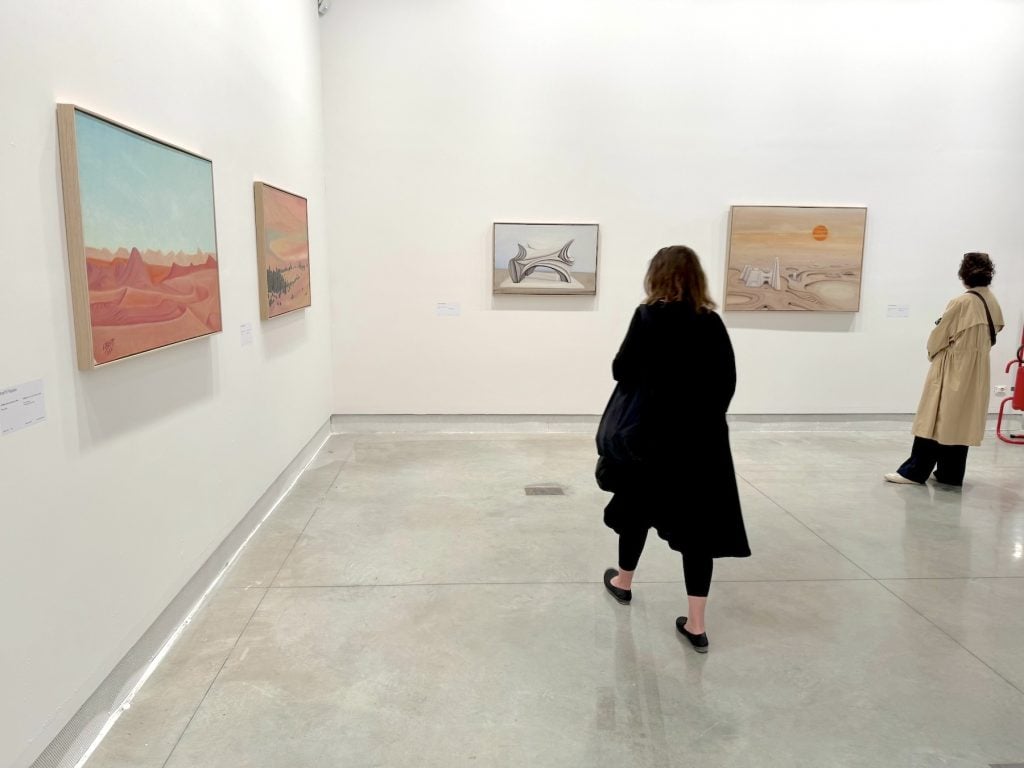
Paintings by Aref el Rayess. Photo by Ben Davis.
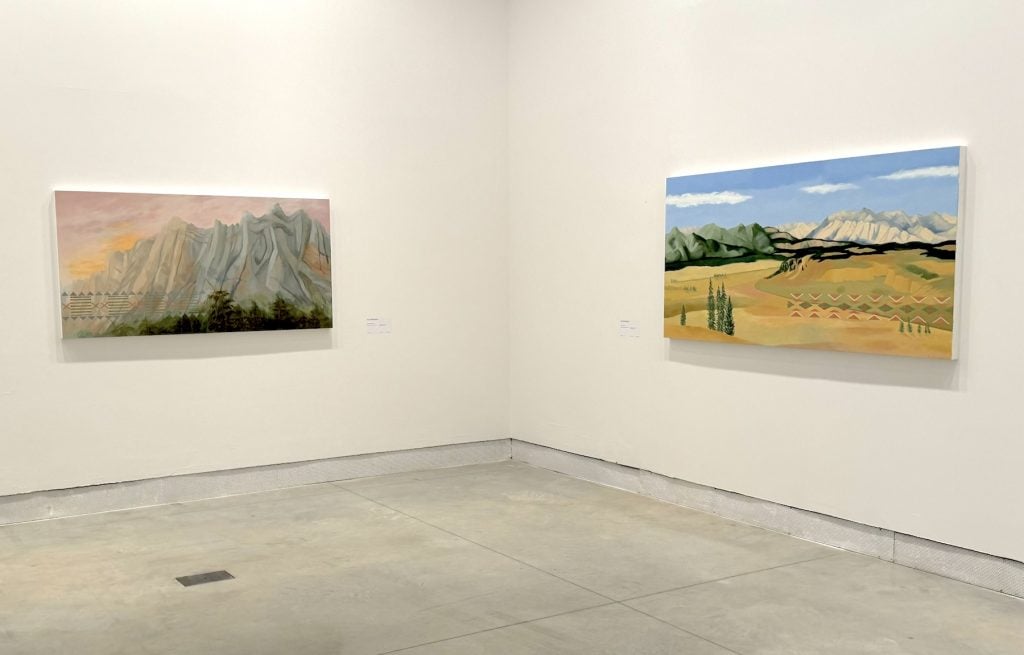
Paintings by Kay WalkingStick. Photo by Ben Davis.
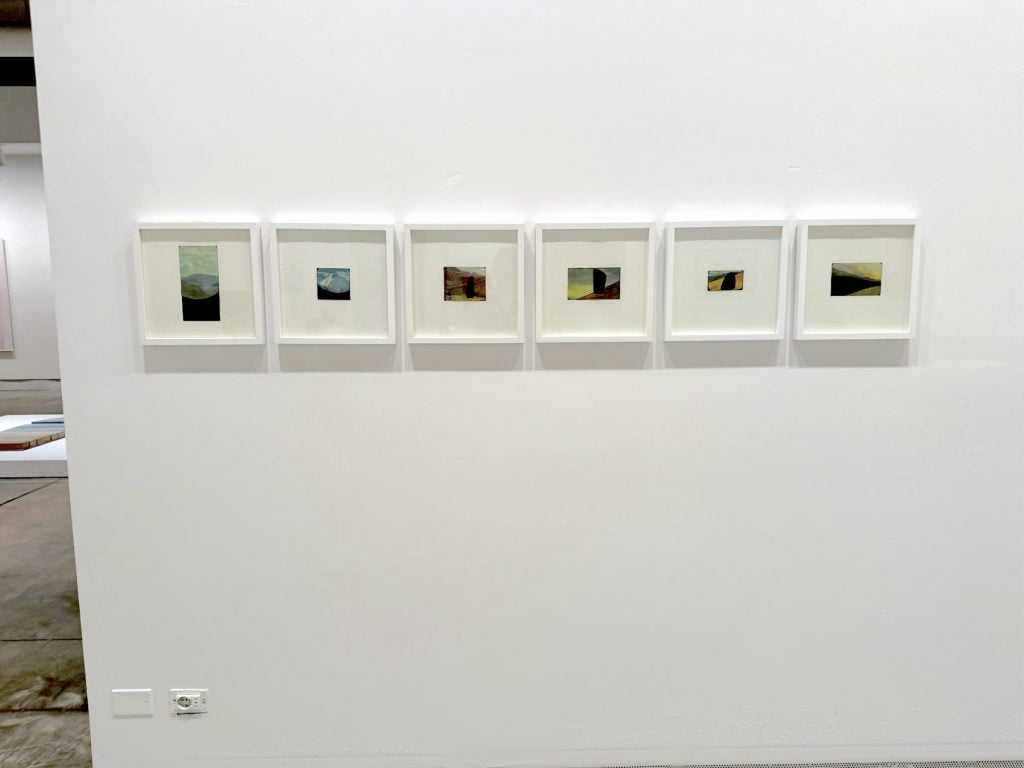
Various works by Leopold Strobl. Photo by Ben Davis.
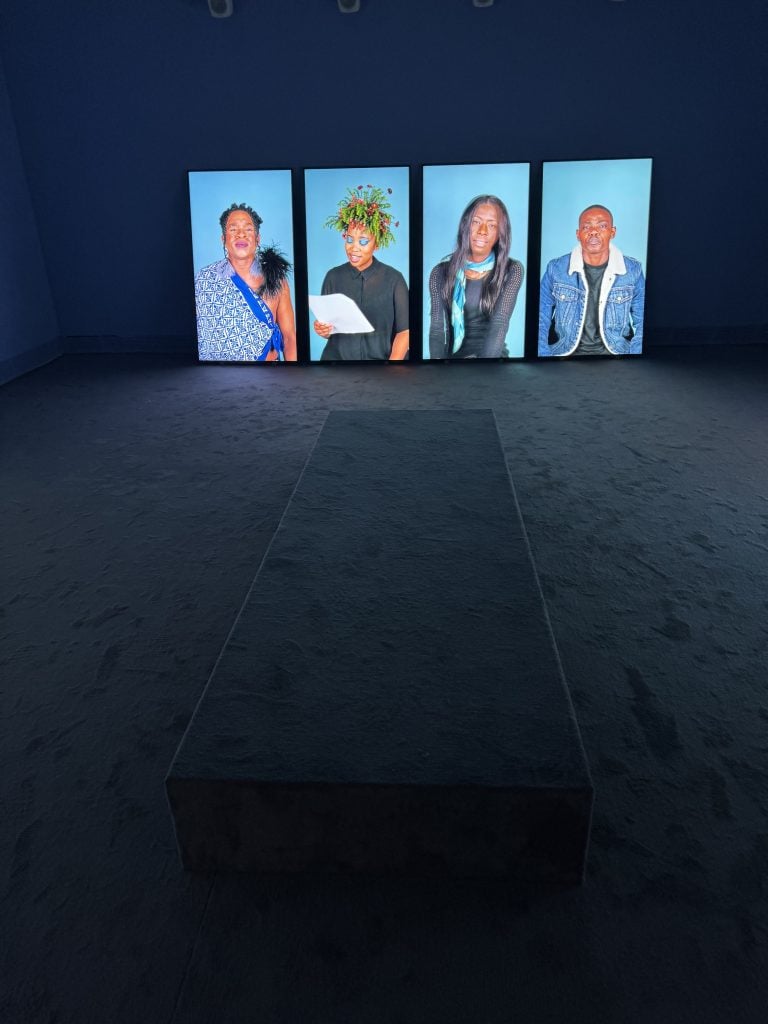
Gabrielle Goliath, Personal Accounts (2024). Photo by Ben Davis.
Among the most memorable sections of the Central Pavilion are what Pedrosa calls the “Nucleo Storico.”
These are densely hung galleries dedicated to examples of non-Western abstract painting and non-Western portraiture. Here, Pedrosa is packing a lot of history in—paying a debt, as he calls it—delivering a vast mass of work by global artists who were major influences in their home countries but who never got attention at past Venice Biennales.
I tend to think that these crowded rooms function better as a curatorial provocation than as a true introduction to complex global art histories—but they absolutely are a treat. Something like half of the 300-plus artists in “Foreigners Everywhere” are concentrated in these setpiece rooms. You could spend days in them.
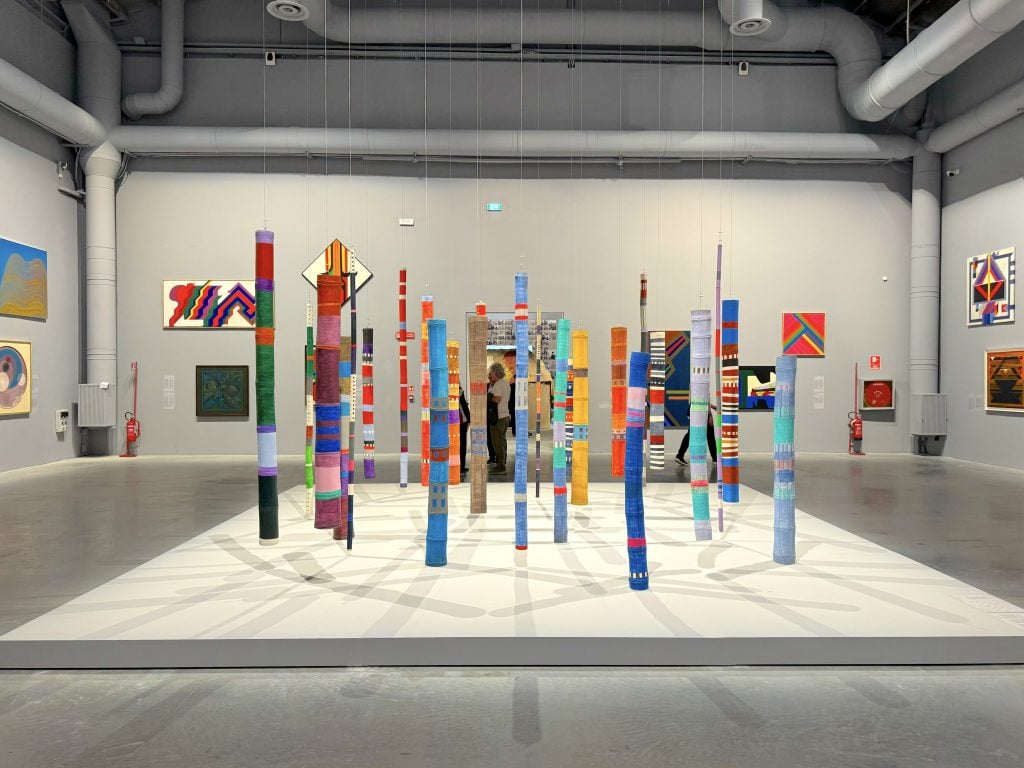
The “Nucleo Storico: Abstraction” gallery, with Ione Saldanha’s “Bambus” (1960–70) in the foreground. Photo by Ben Davis.
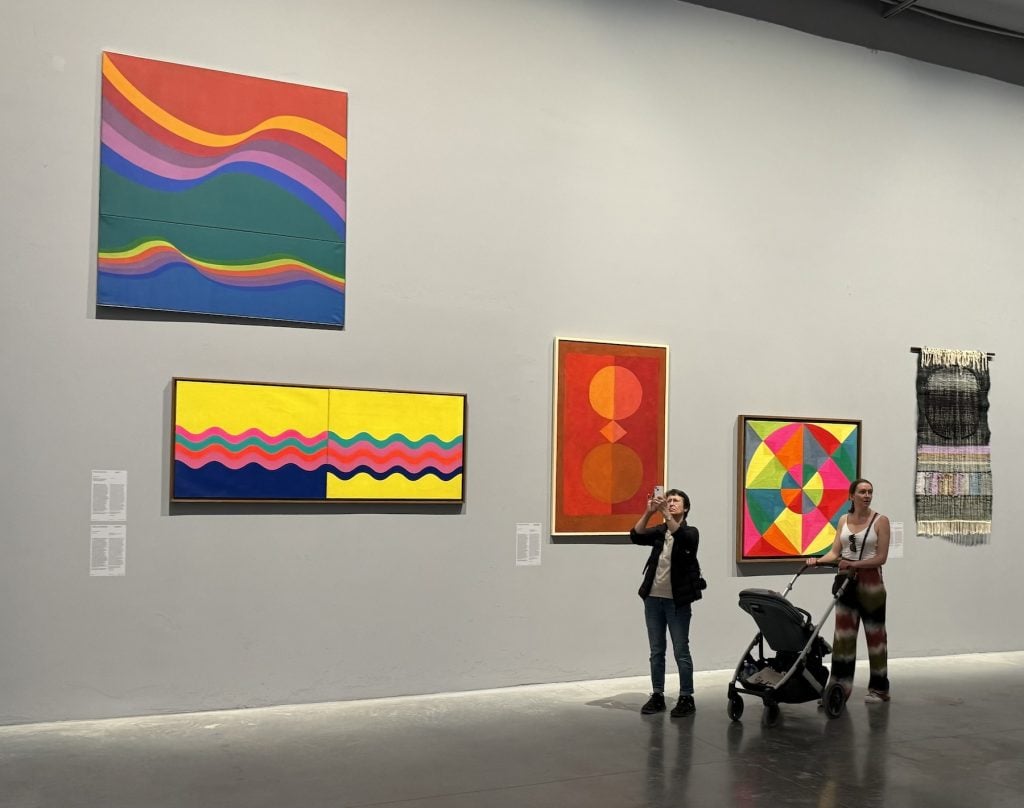
Installation view of “Nucleao Storico: Abstraction” room in “Foreigners Everywhere.” Photo by Ben Davis.
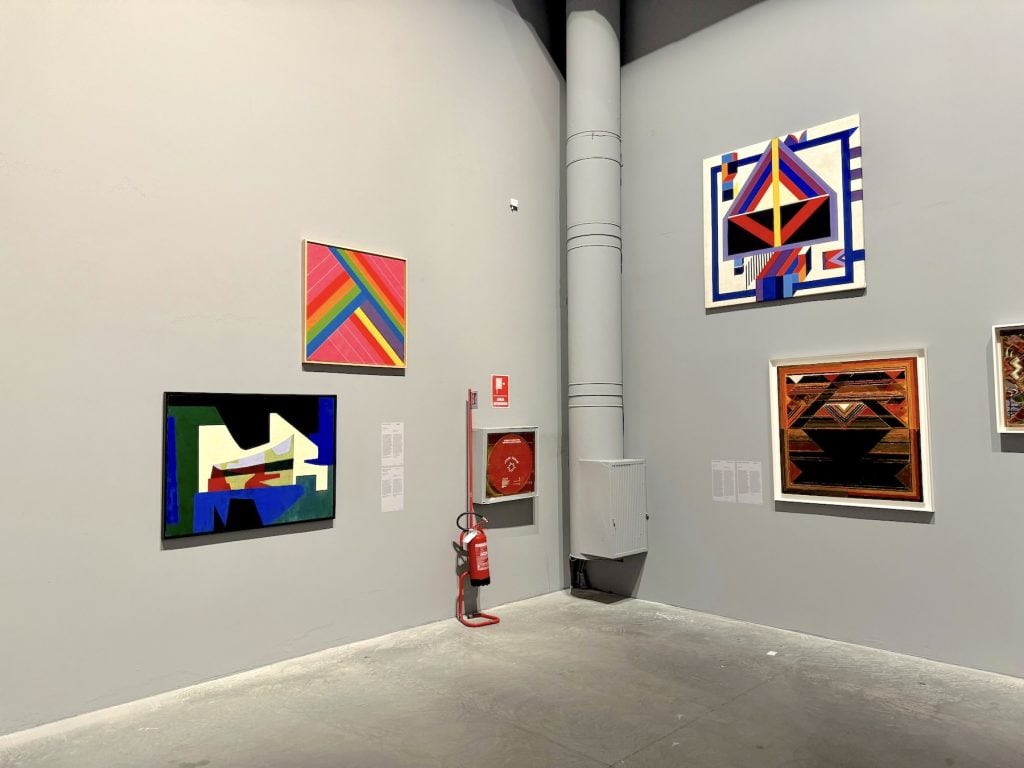
Various paintings in the “Nucleo Storico: Abstraction” section of “Foreigners Everywhere.” Photo by Ben Davis.
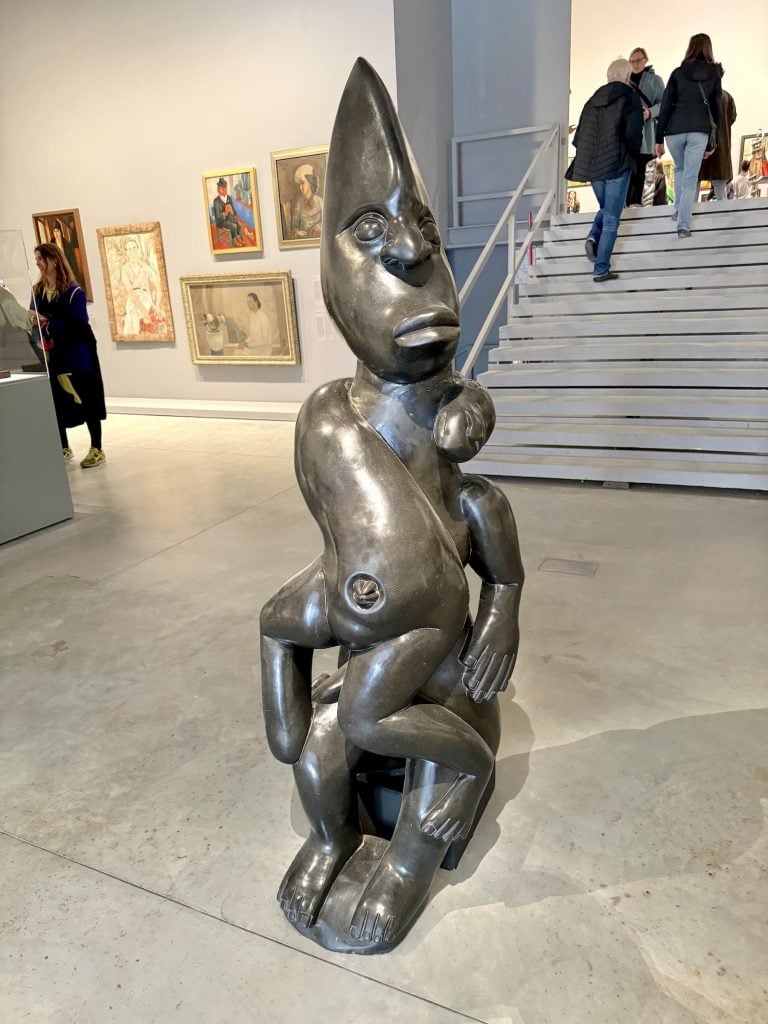
Josiah Manzi, Mfiti Woman and Snake (1990) in the “Nucleo Storico: Portraits” galleries. Photo by Ben Davis.
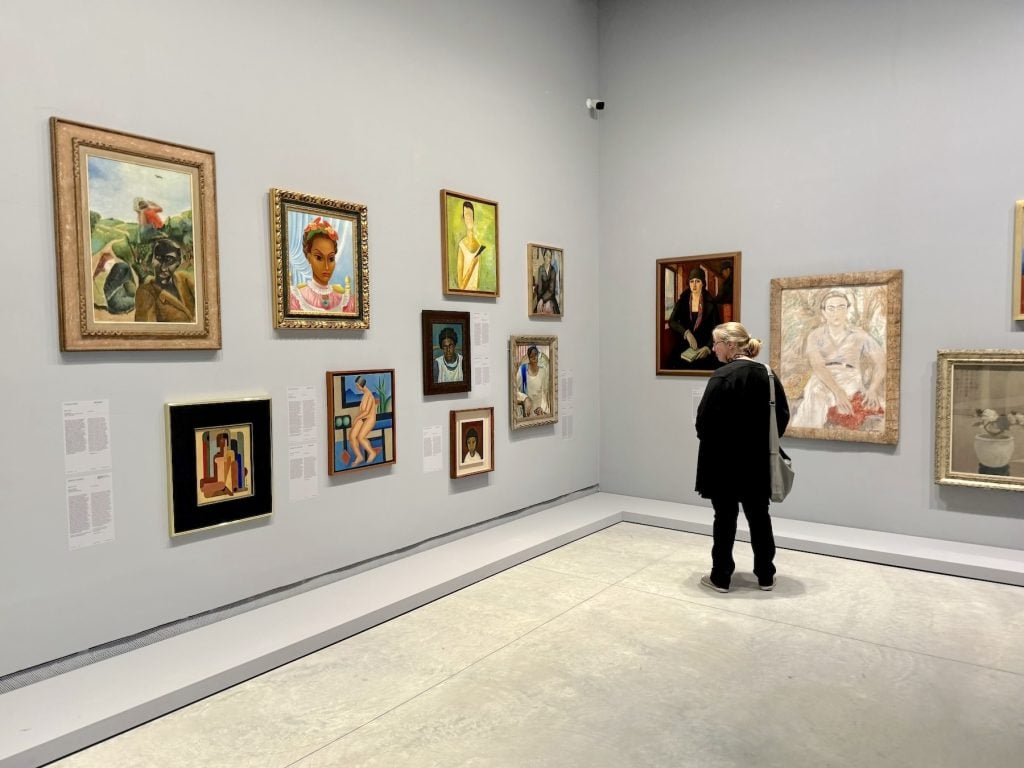
The “Nucleo Storico: Portraits” gallery. Photo by Ben Davis.
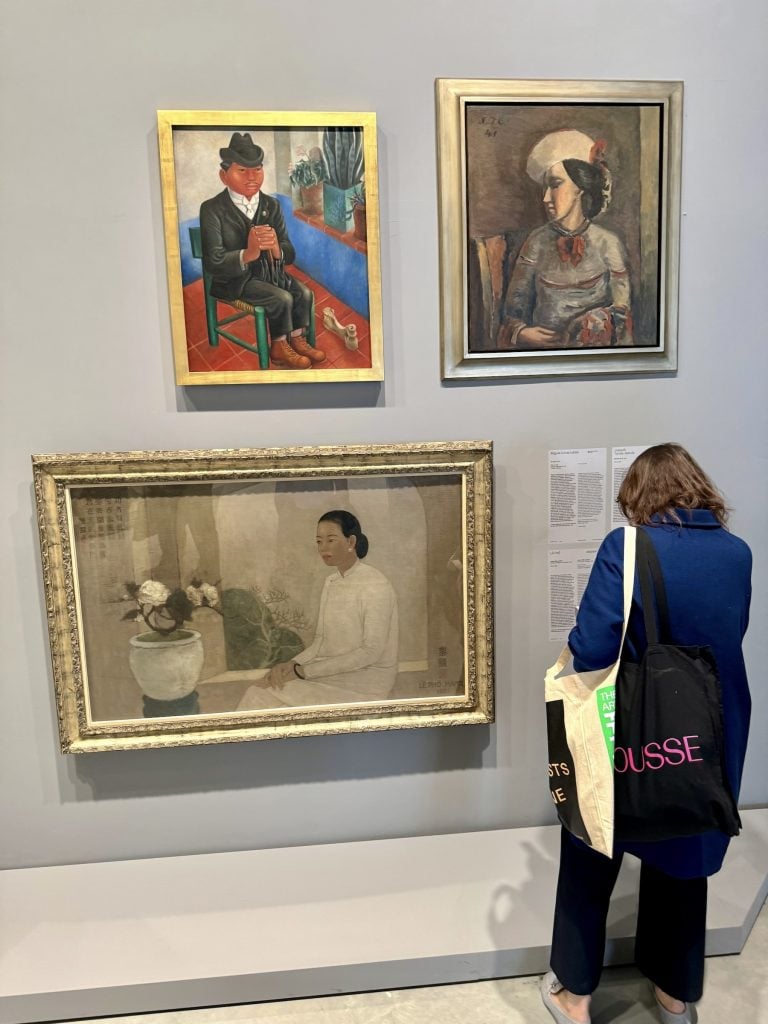
The “Nucleo Storico: Portraits” gallery. Photo by Ben Davis.
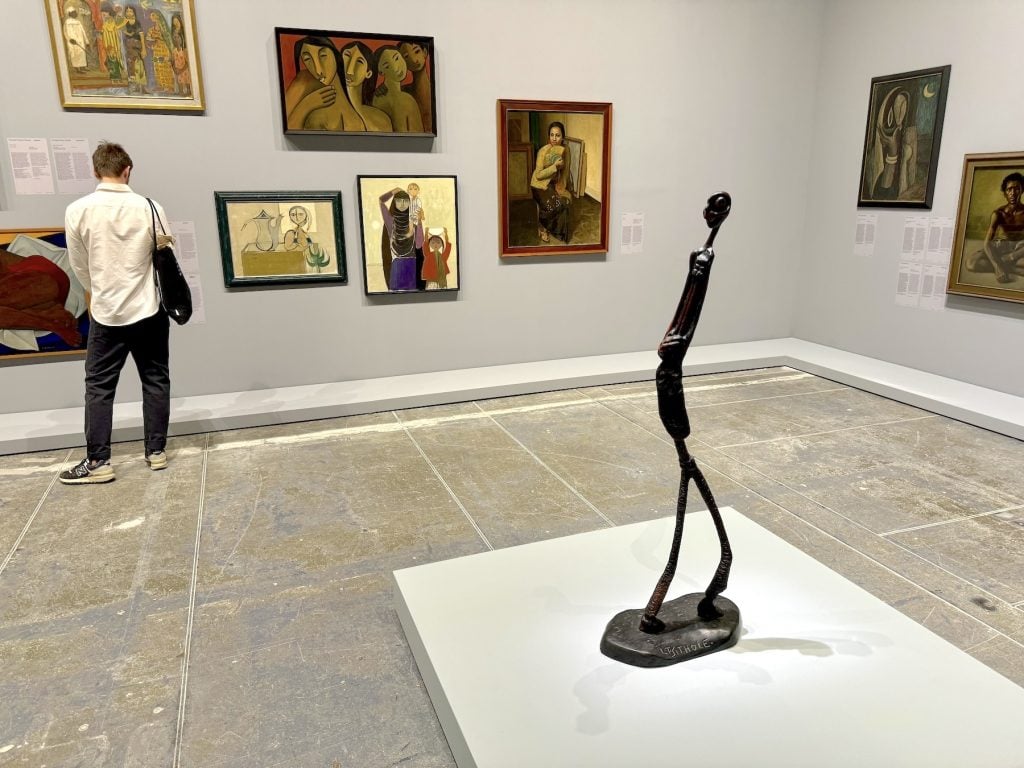
Lucas Sithole, The Guitarist (1988) in the “Nucleo Storico: Portraits” gallery. Photo by Ben Davis.
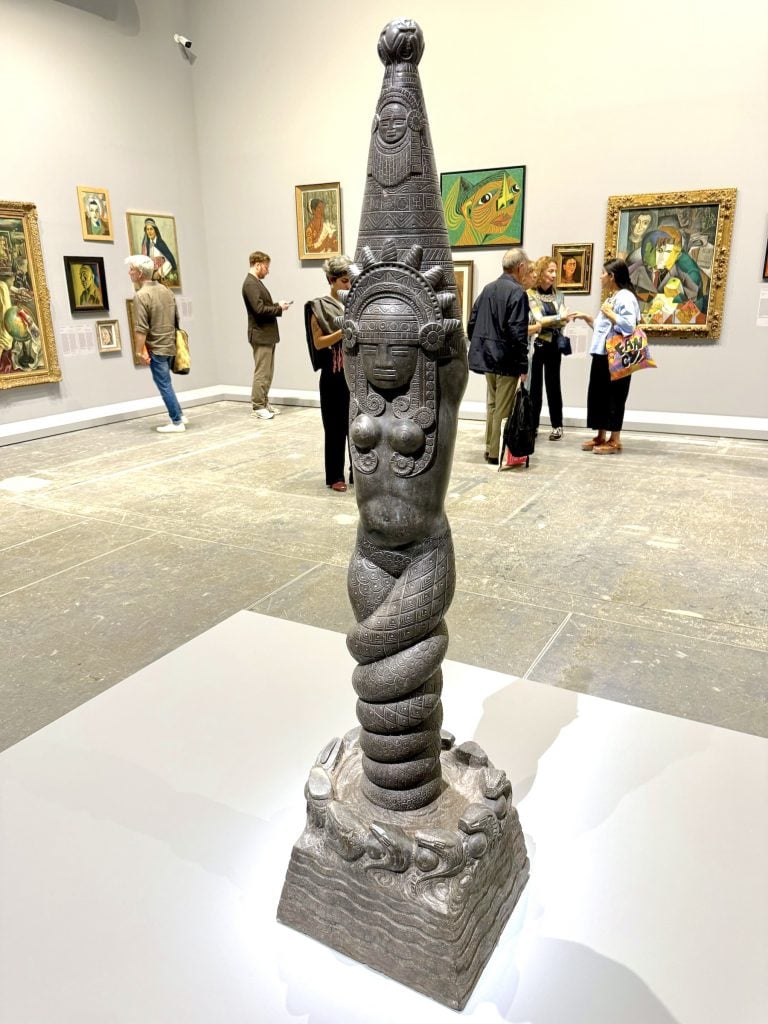
Rómulo Rozo, Bachué, diosa generatriz de los chibchas (1925). Photo by Ben Davis.
The other main venue for the Biennale is the Arsenale—a vast former shipbuilding space, turned into a seemingly endless, linear series of galleries.
For a show with a relatively unspectacular temperament, this is where the spectacle is, and the concerns of “Foreigners Everywhere” feel marginally more contemporary here. Textile works dominate in diverse forms, from skilled batik works, to multi-panel conceptual-art projects, to scenes stitched on burlap sacks by anonymous Chilean artists, lent from the Museo del Barrio collection. A large gallery dedicated to Bouchra Khalili’s The Mapping Journey Project (2008–11), featuring hanging screens playing the testimony of immigrants describing their journeys from Africa and the Middle East, echoes both the theme and key placement of Nil Yalter’s Exile Is a Hard Job in the Central Pavilion.
There’s also another “Nucleo Storico,” this one called “Italians Everywhere,” dedicated to a mixed bag of Italian artists who forged art careers beyond the borders of Italy. It delightfully imports architect Lina Bo Bardi’s scheme for displaying art from the São Paulo Museum of Art (where Pedrosa works). Paintings are shown on freestanding “glass easels,” labels on the reverse. It’s breathtakingly cool, though the “Italians Everywhere” room more reads as an excuse to honor Bo Bardi than anything else—and indeed, Bo Bardi was herself an Italian who forged her career abroad (she won a posthumous lifetime achievement award at the Venice Architecture Biennale just last year).
The Arsenale section kicks off with famed British artist Yinka Shonibare’s sculpture of an astronaut, reclaiming the space traveler as a metaphor for immigration. And yet, throughout “Foreigners Everywhere,” technology is mainly absent as a theme—until the very end when you hit a ghostly work by the artist WangShui, a mass of pulsing lights evoking a mysterious digital consciousness. It almost feels as if you are returning from a trip into the past via the show’s many, many reconsiderations of craft, history, and tradition into an unsettled technological present.
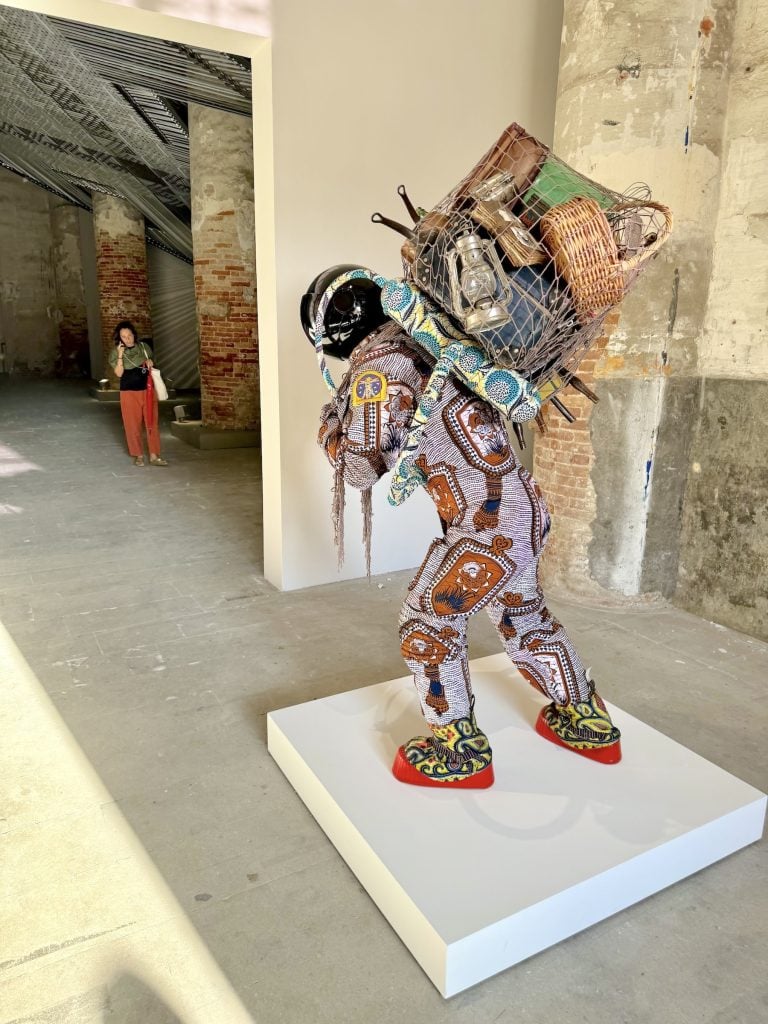
Yinka Shonibare, Refugee Astronaut VIII (2024). Photo by Ben Davis.
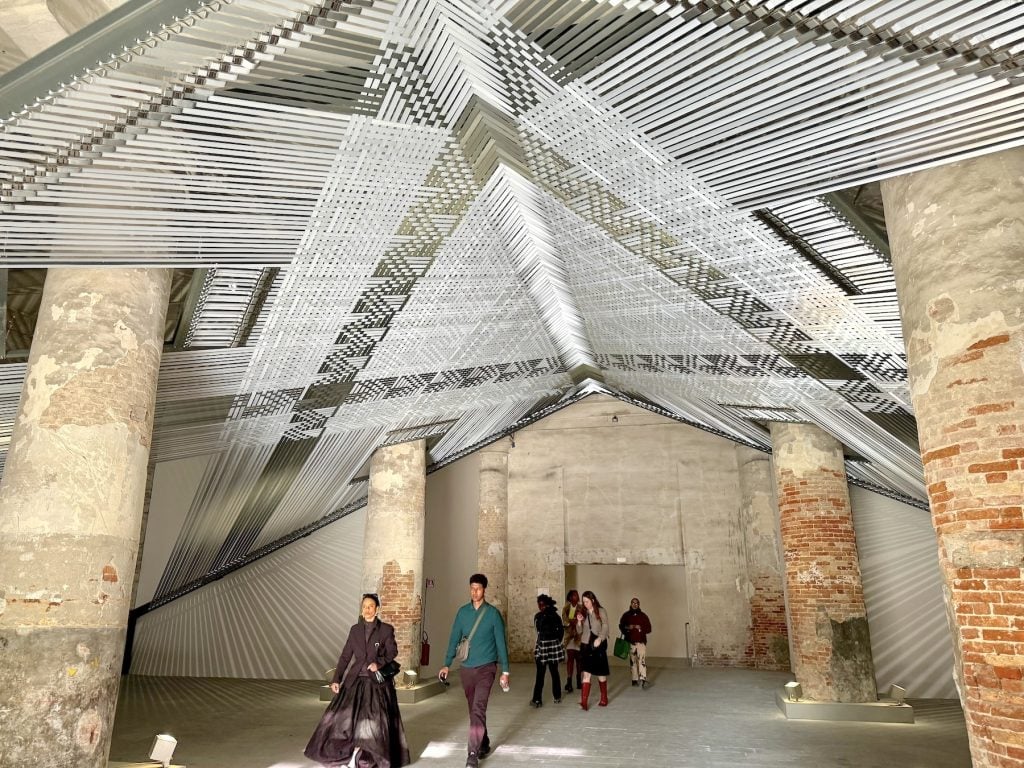
Mataaho Collective, Takapau (2022). Photo by Ben Davis.
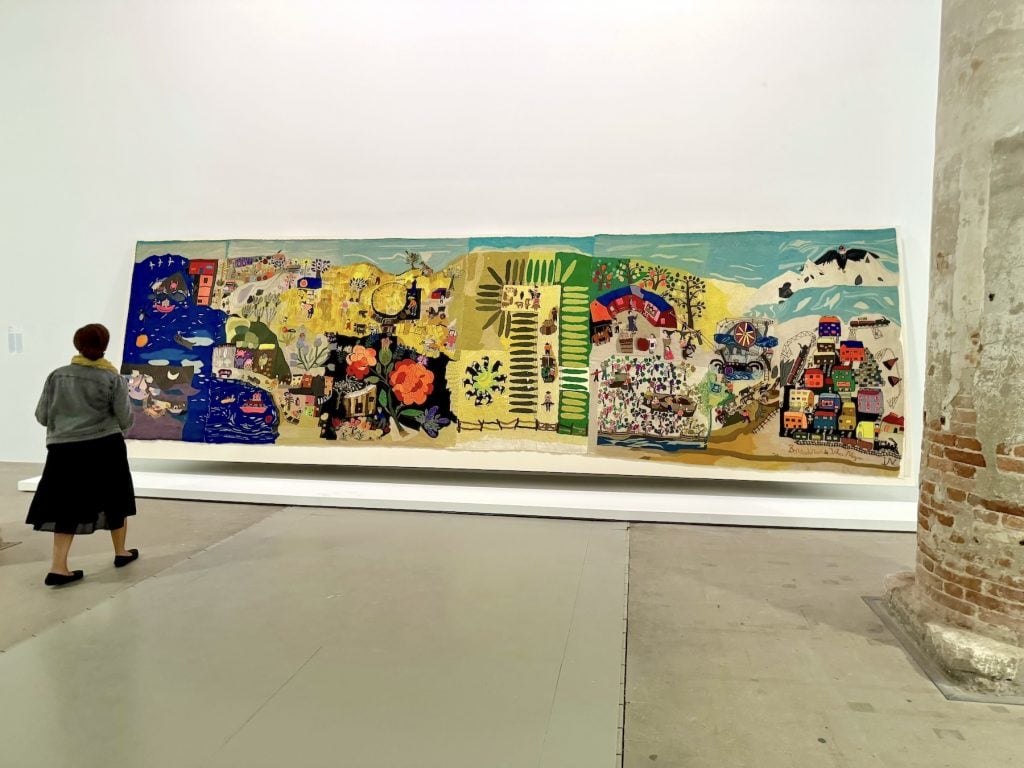
Bordadoras de Isla Negra, Untitled (1972). Photo by Ben Davis.
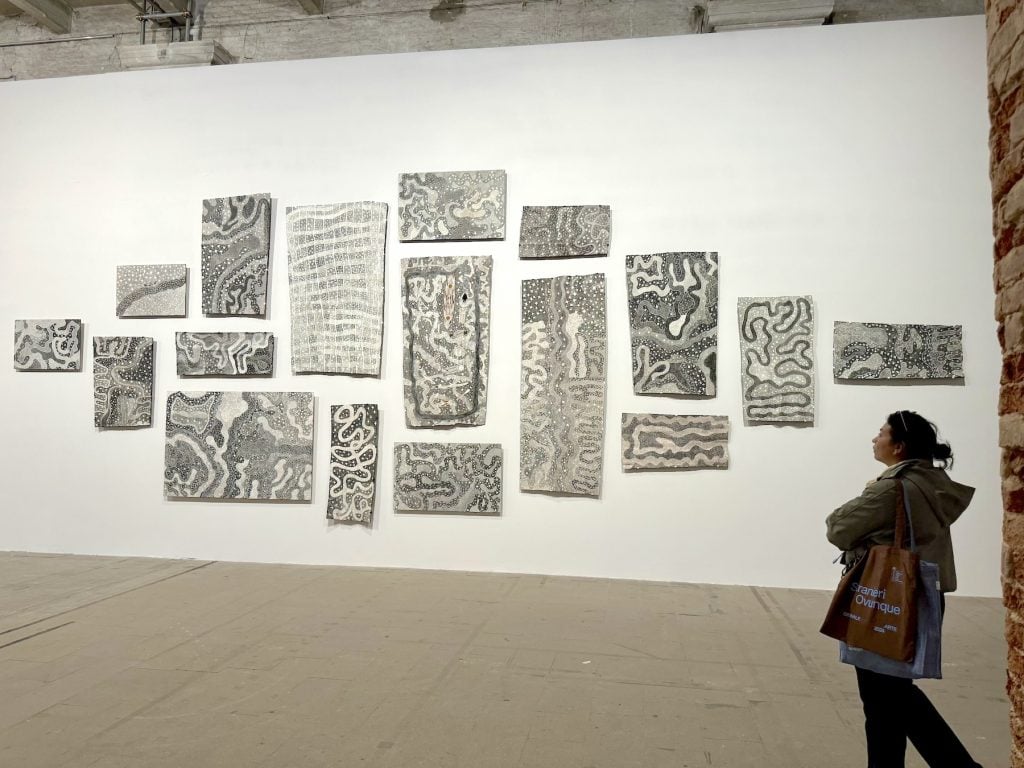
Naminapu Maymuru-White, Stars Reflected in the River (2023). Photo by Ben Davis.
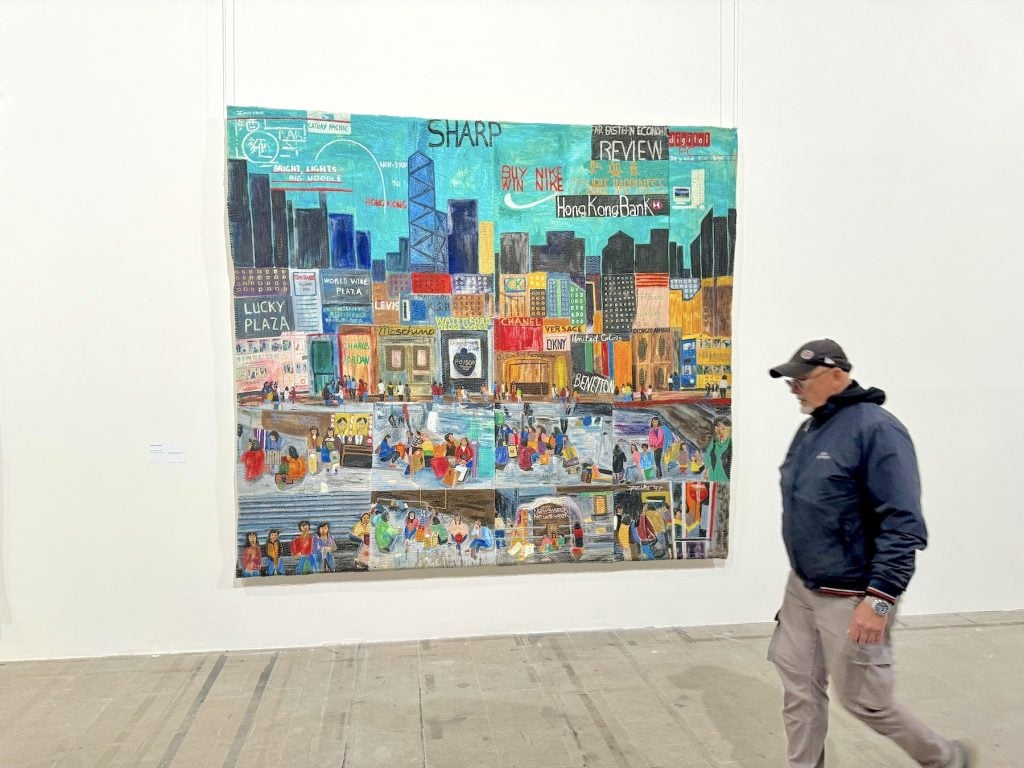
Pacita Abad, Filipinas in Hong Kong (1995). Photo by Ben Davis.
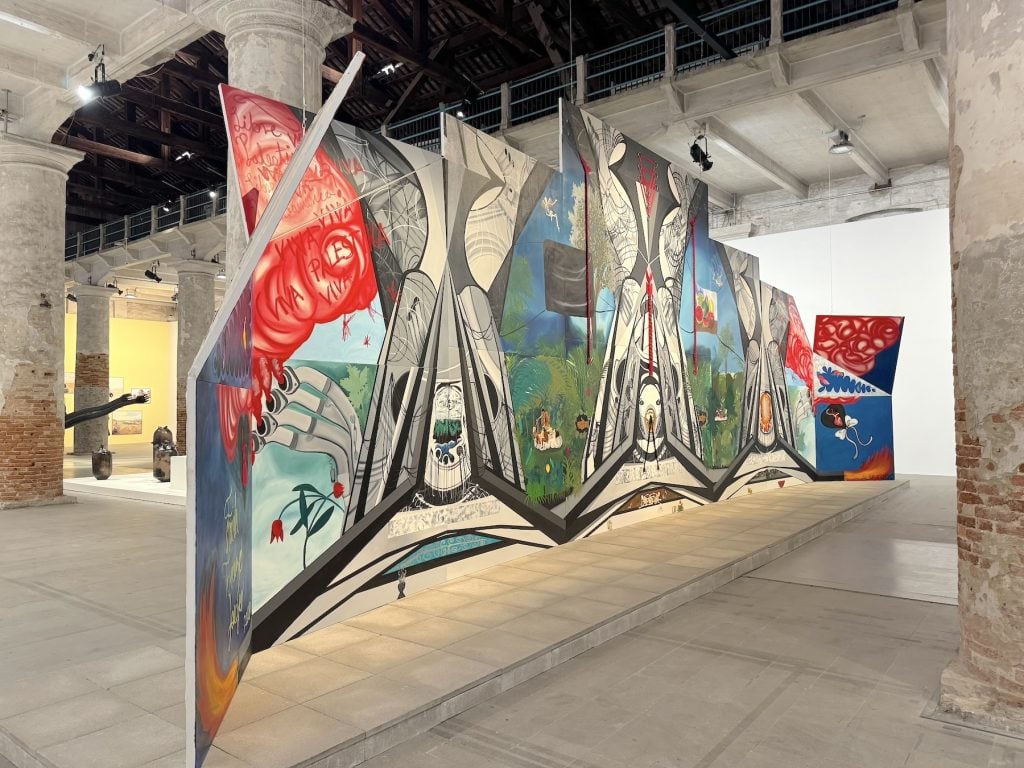
Frieda Toranzo Jaeger, Rage Is a Machine in Times of Senselessness (2024). Photo by Ben Davis.
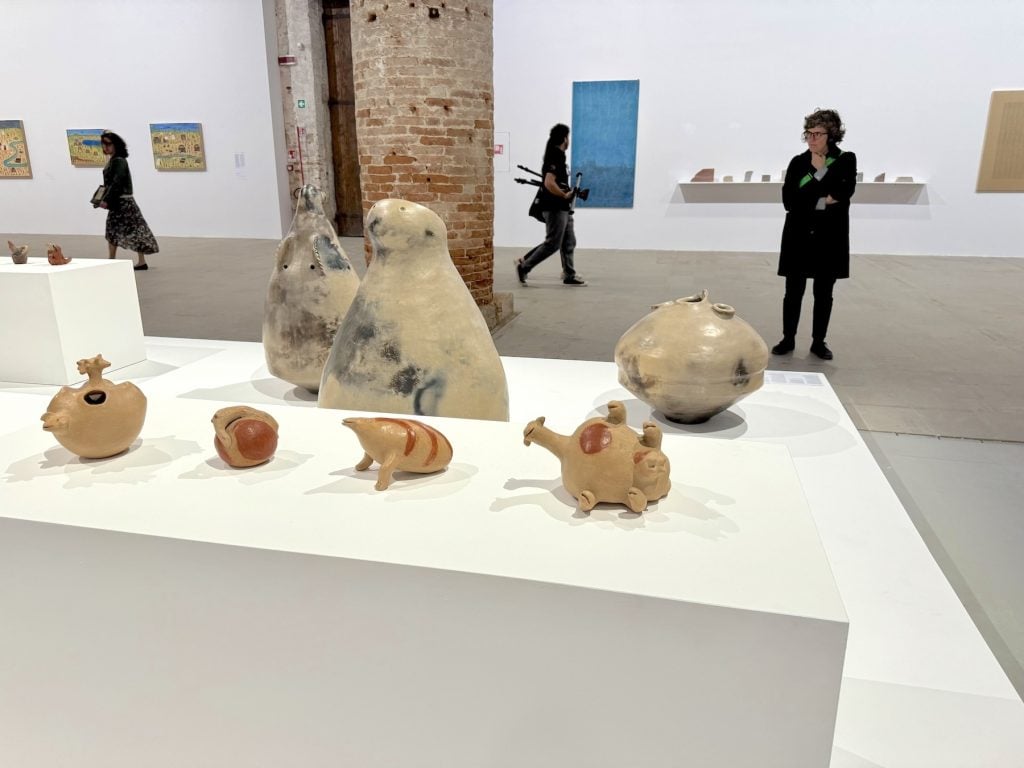
Various sculptures by Juana Marta Rodas. Photo by Ben Davis.
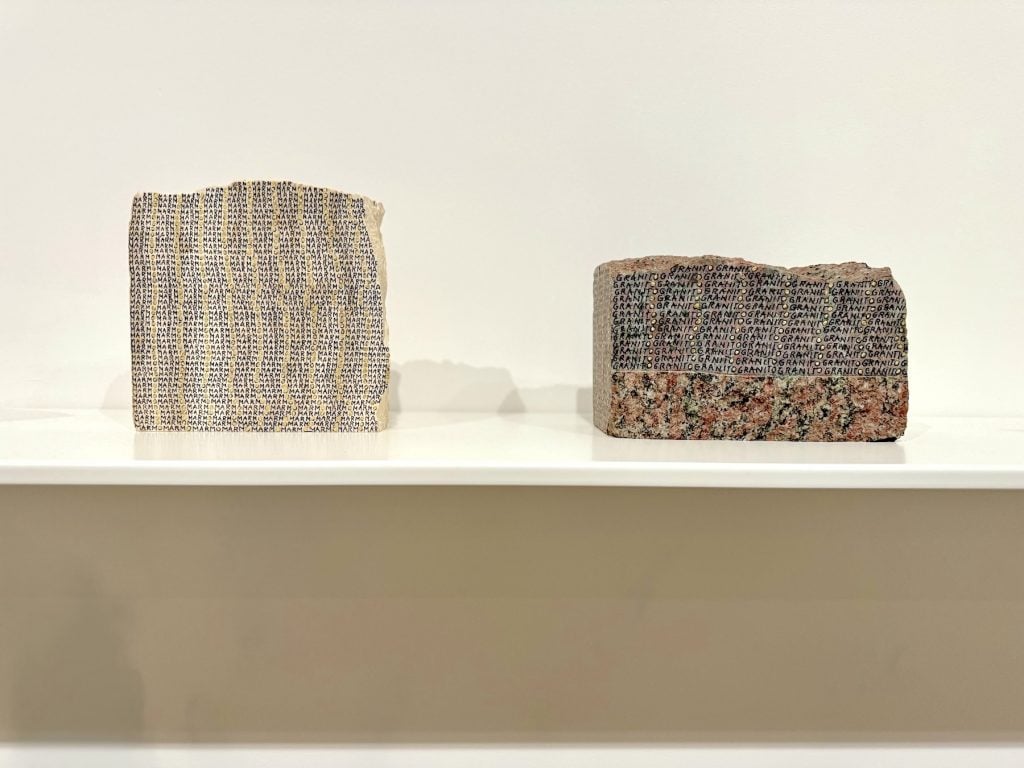
Two works by Greta Schödl. Photo by Ben Davis.
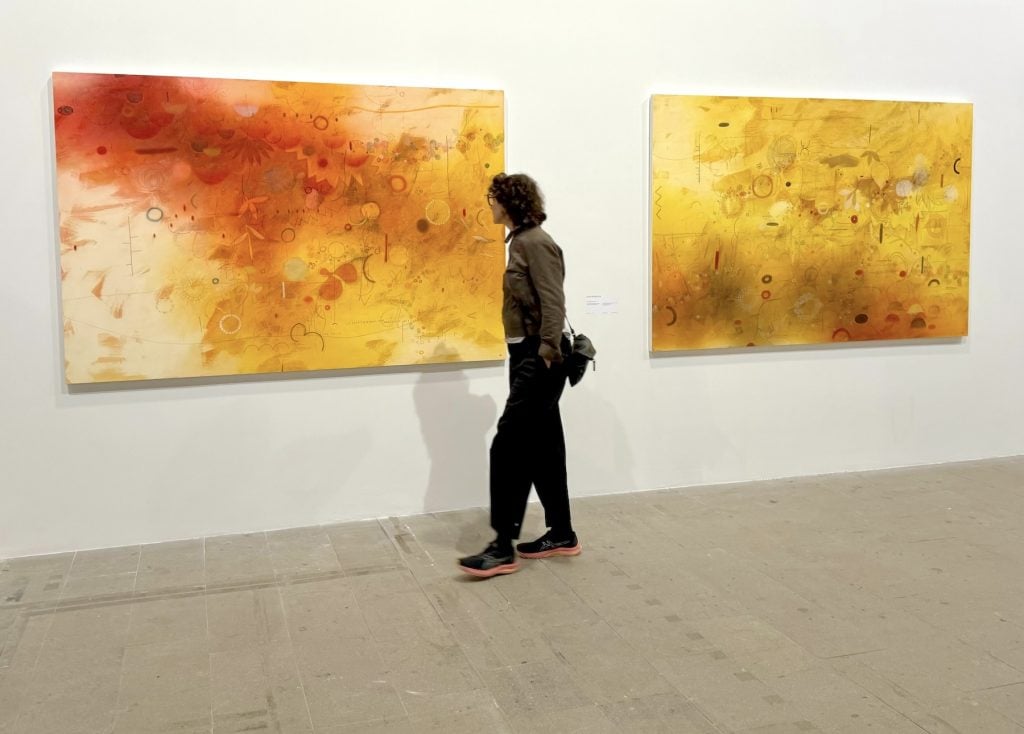
Two paintings by Emmi Whitehorse. Photo by Ben Davis.
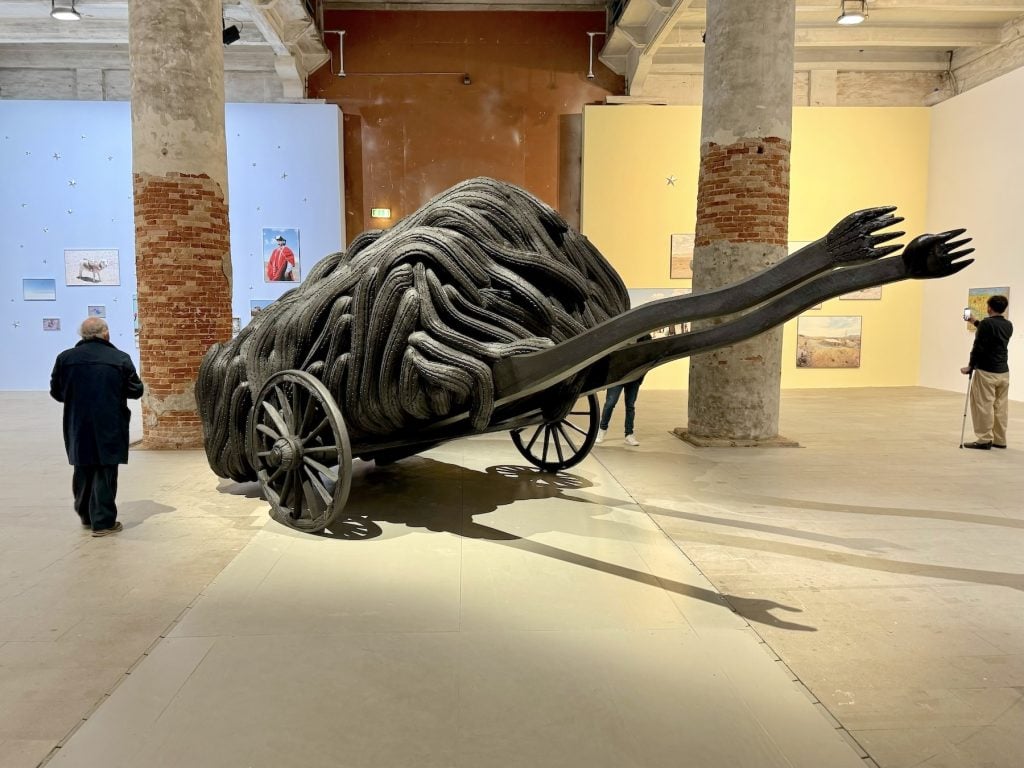
Brett Graham, Wastelands (2024). Photo by Ben Davis.
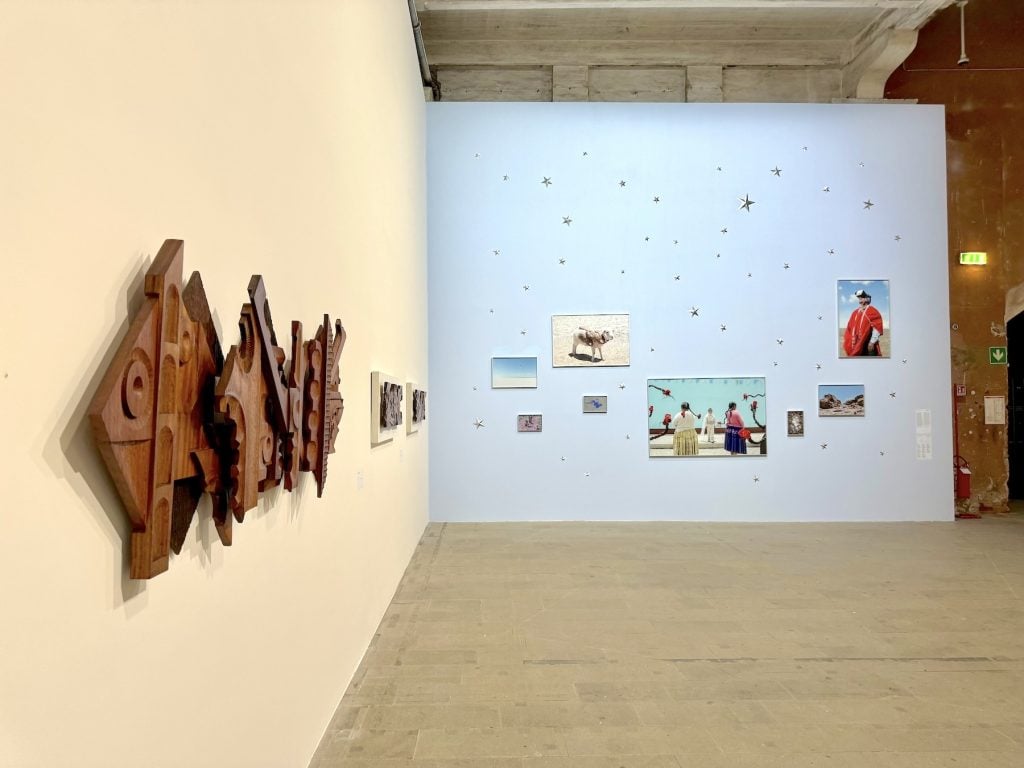
Works by Fred Graham, left, and River Claure. Photo by Ben Davis.
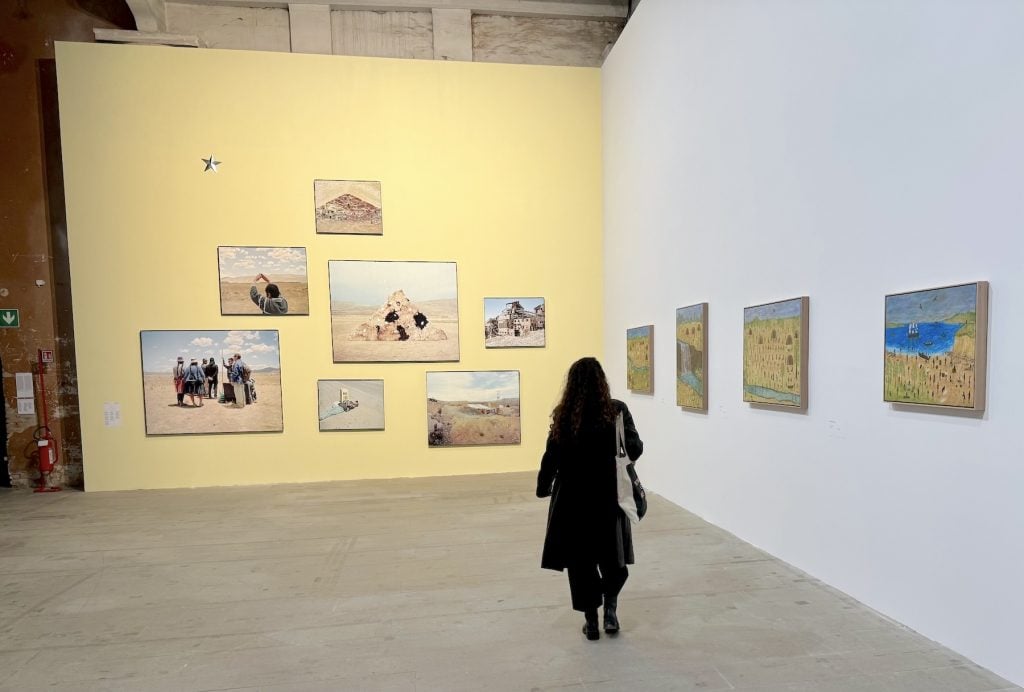
Works by River Claure and Marlene Gilson. Photo by Ben Davis.
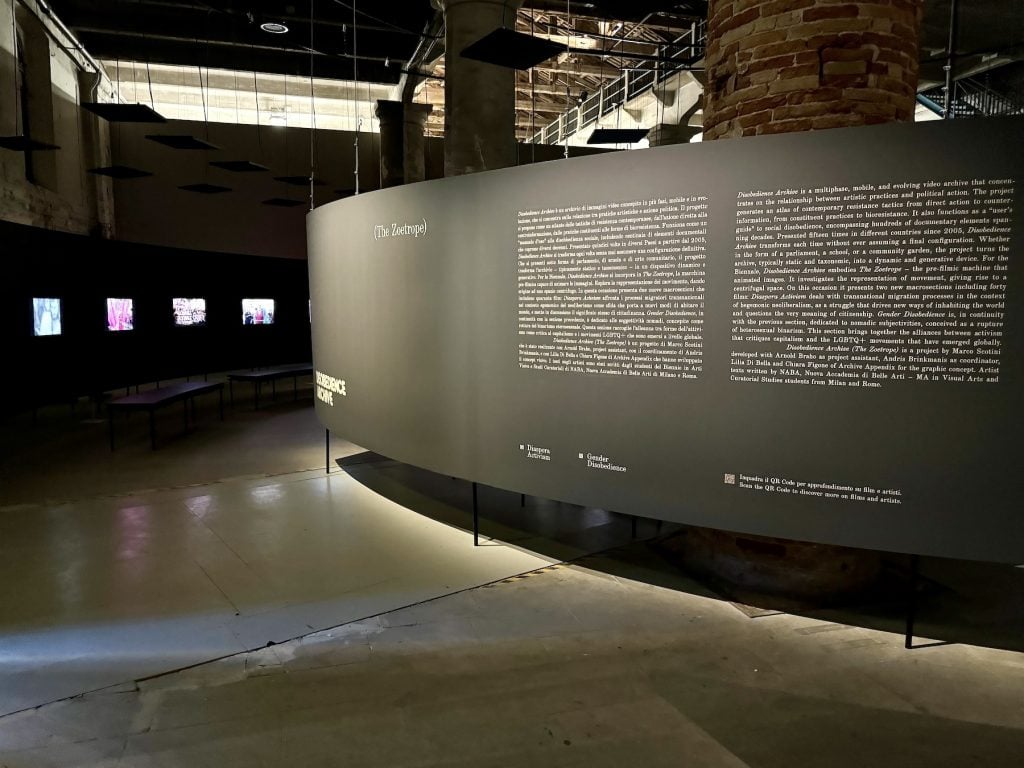
The section of the Biennale dedicated to “The Disobedience Archive,” a collection of videos about art and activism. Photo by Ben Davis.
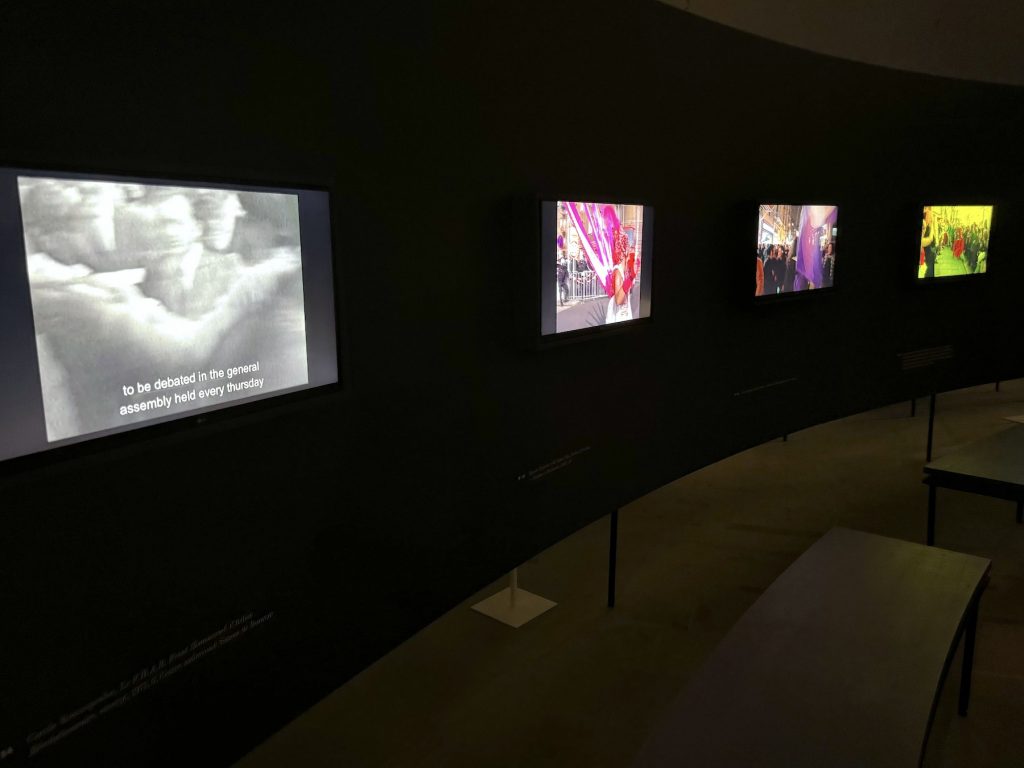
A view of various videos playing in the “Disobedience Archive” section of the Arsenale. Photo by Ben Davis.
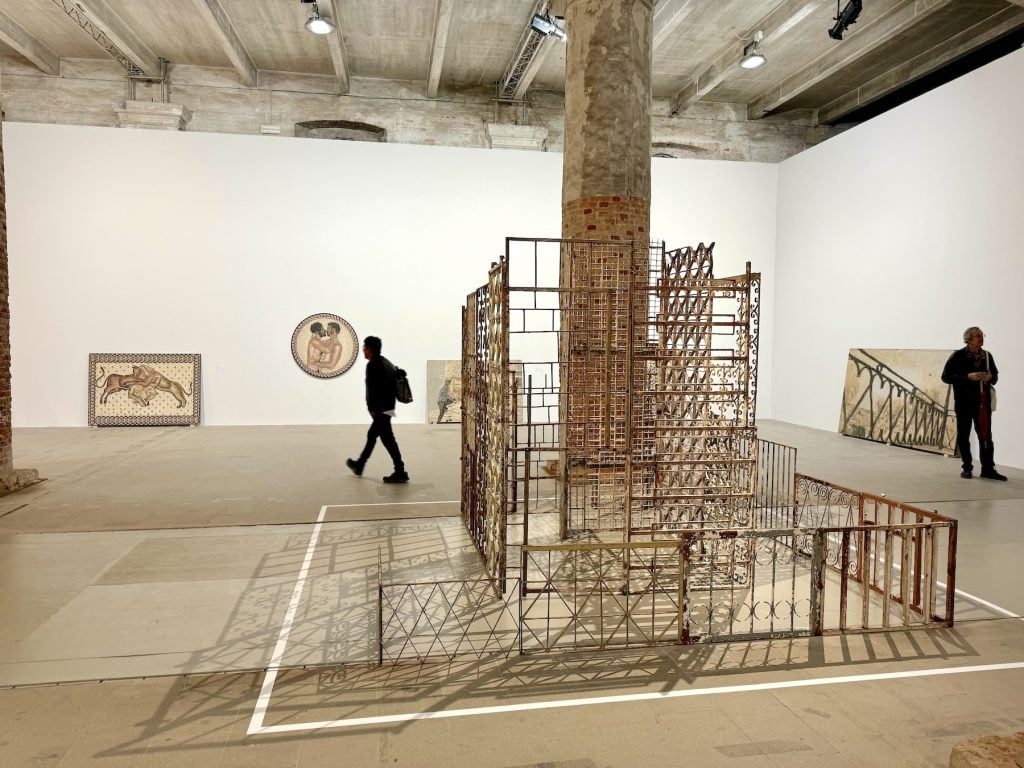
Kiluaji Kia Henda, The Spiral of Fear (2022). Photo by Ben Davis.
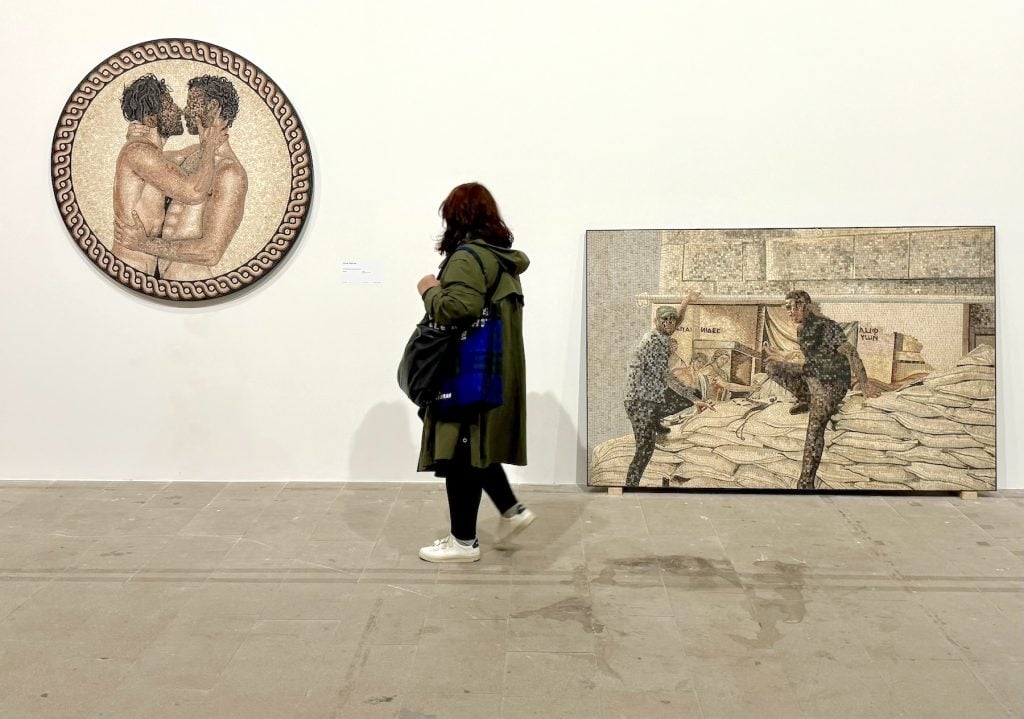
Two works by Omar Mismar. Photo by Ben Davis.
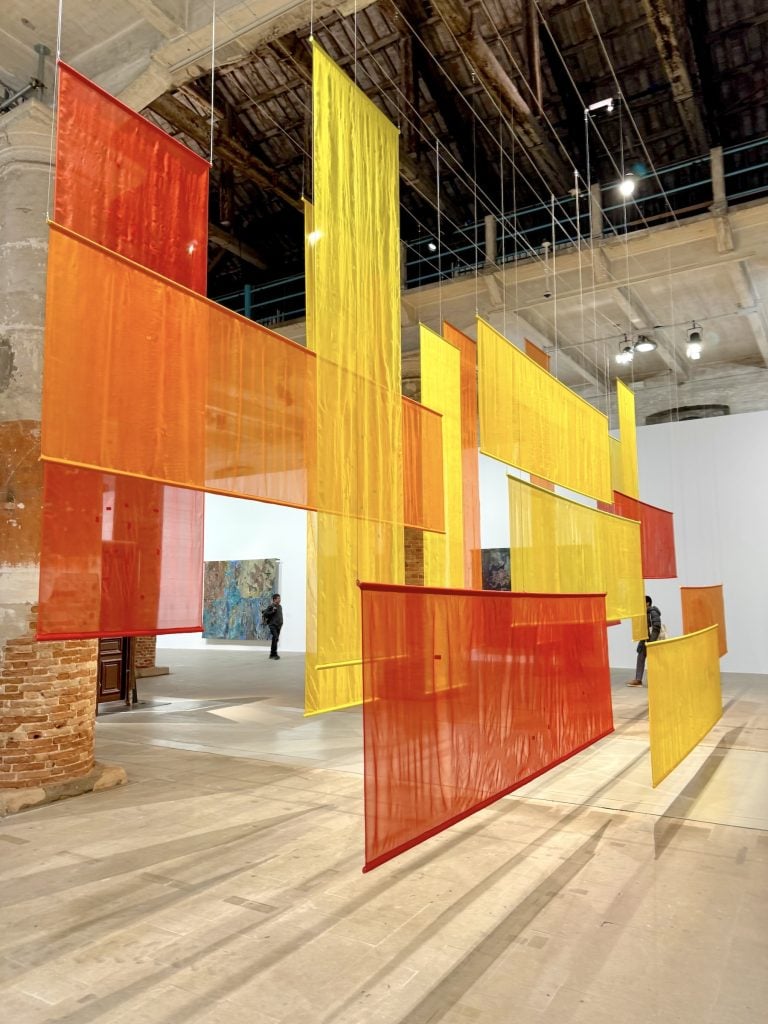
Dana Awartani, Come, Let Me Heal Your Wounds. Let Me Mend Your Broken Bones (2024). Photo by Ben Davis.
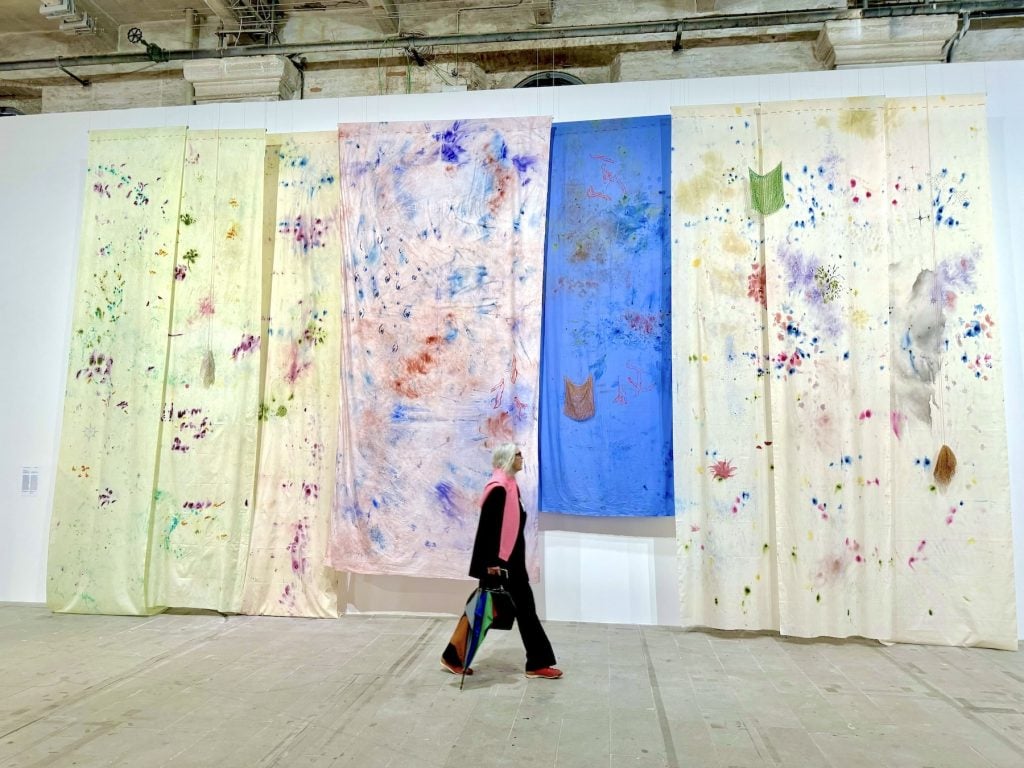
Agnes Waruguru, Incomprehensible Weather in the Head (2024). Photo by Ben Davis.
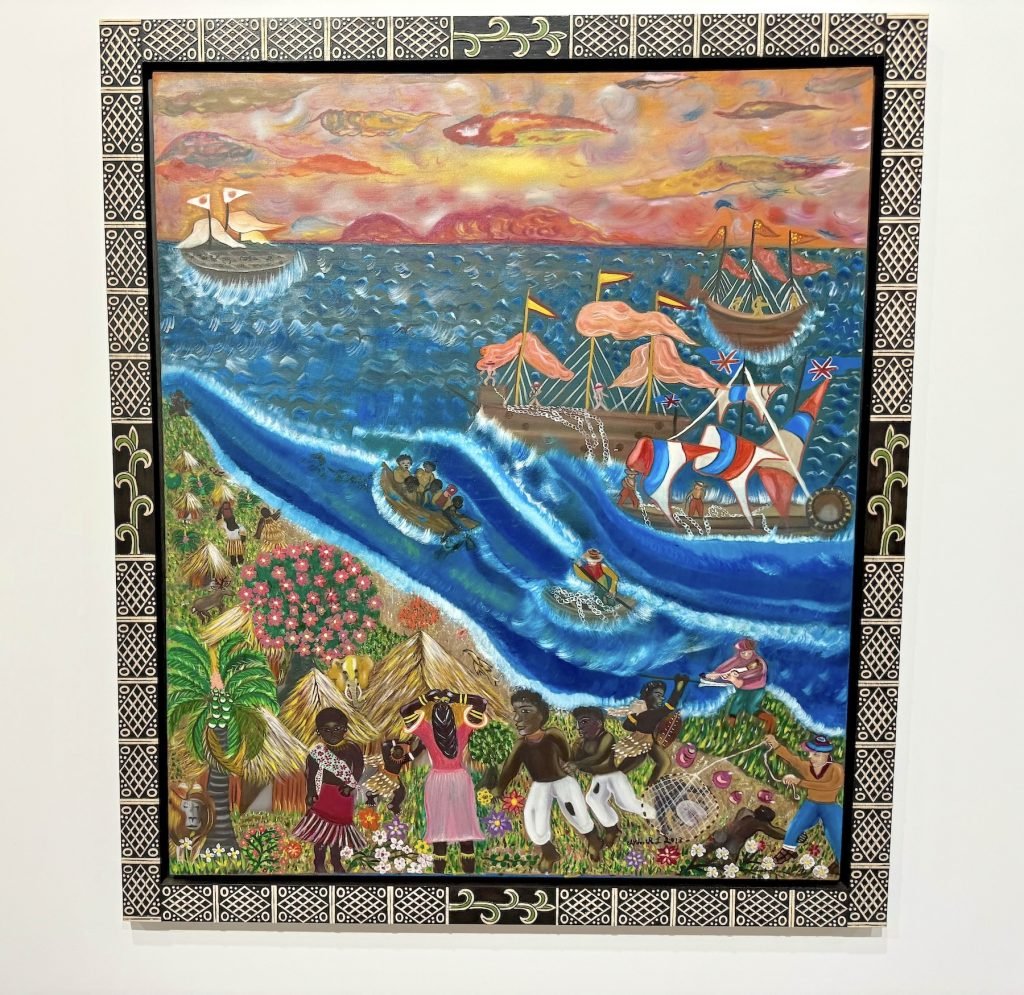
Aydeé Rodríguez López, Cazadores de hombres (2013). Photo by Ben Davis.
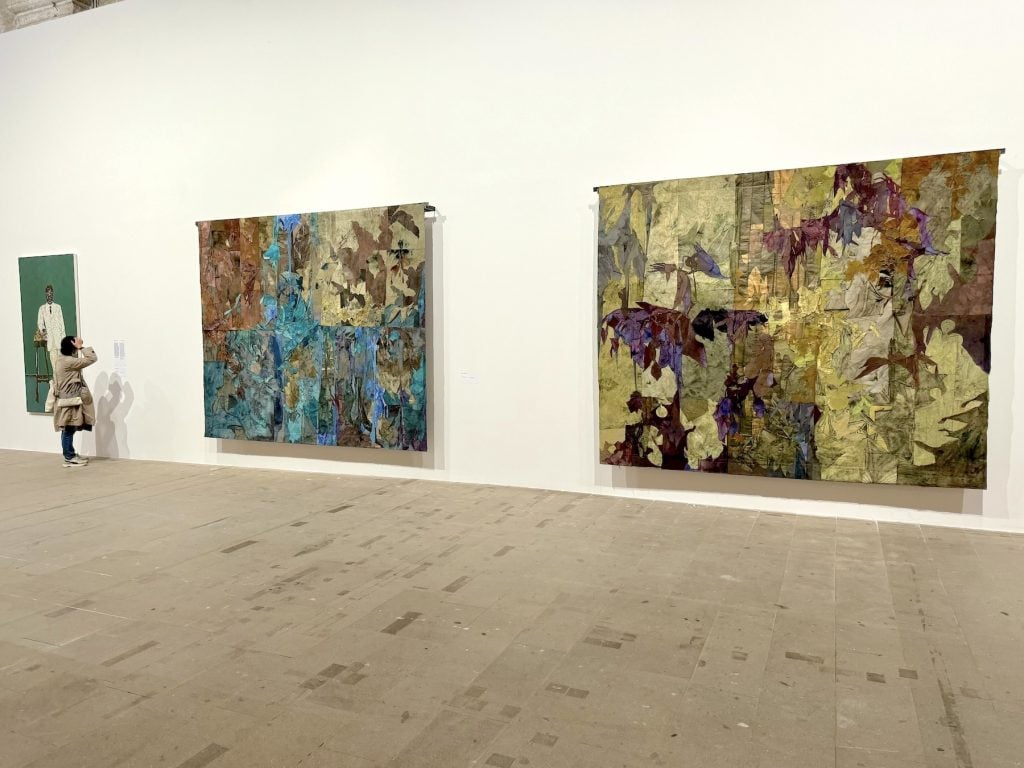
Works by Nour Jaouda. Photo by Ben Davis.
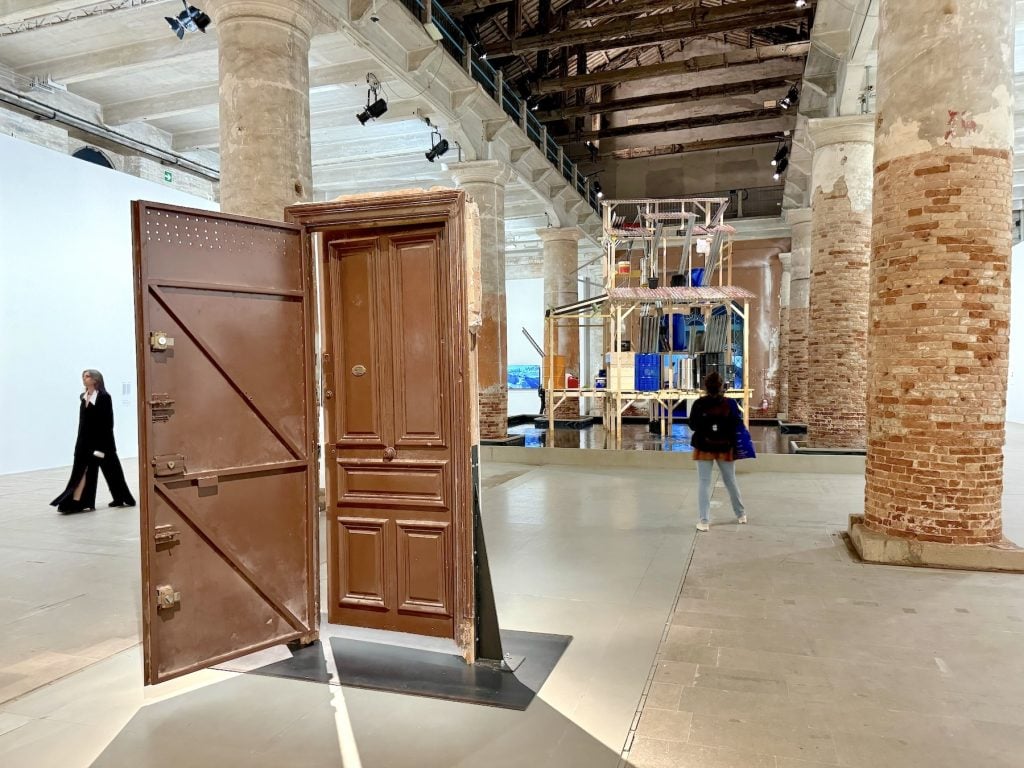
Lydia Ourahmane, 21 Boulevard mustapha Benboulaid (entrance), 1901–2021, in the foreground, with Daniel Otero Torres, Aguacero (2024) in the background. Photo by Ben Davis.
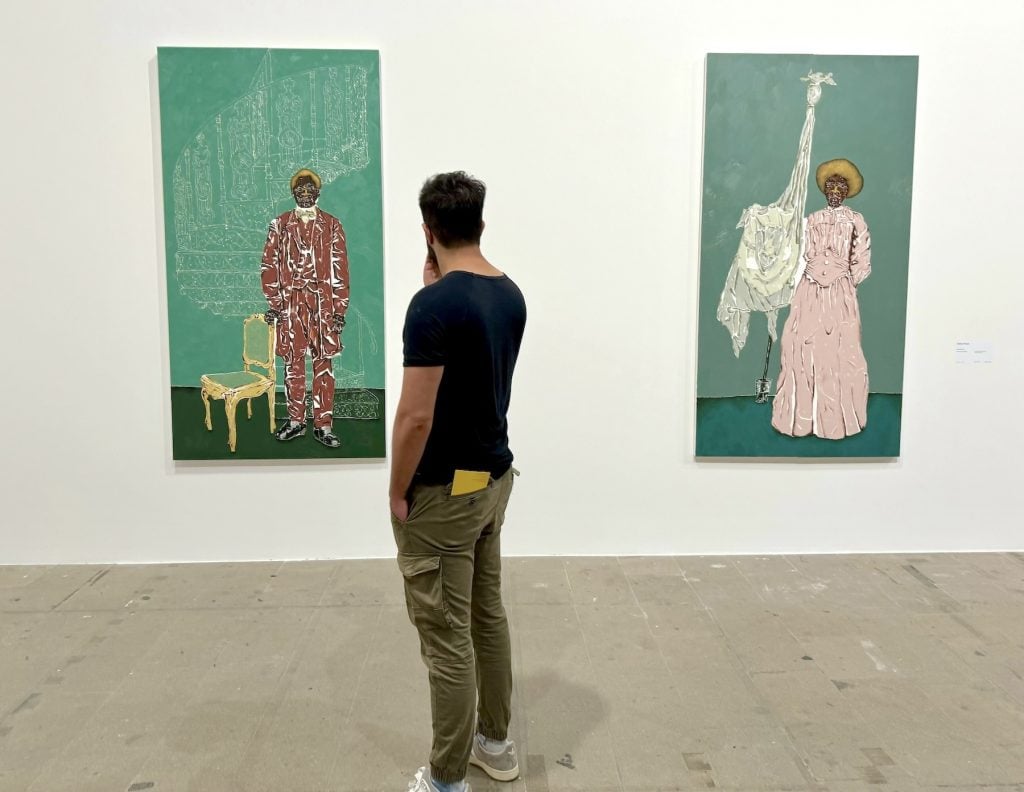
Two paintings by Dalton Paula. Photo by Ben Davis.
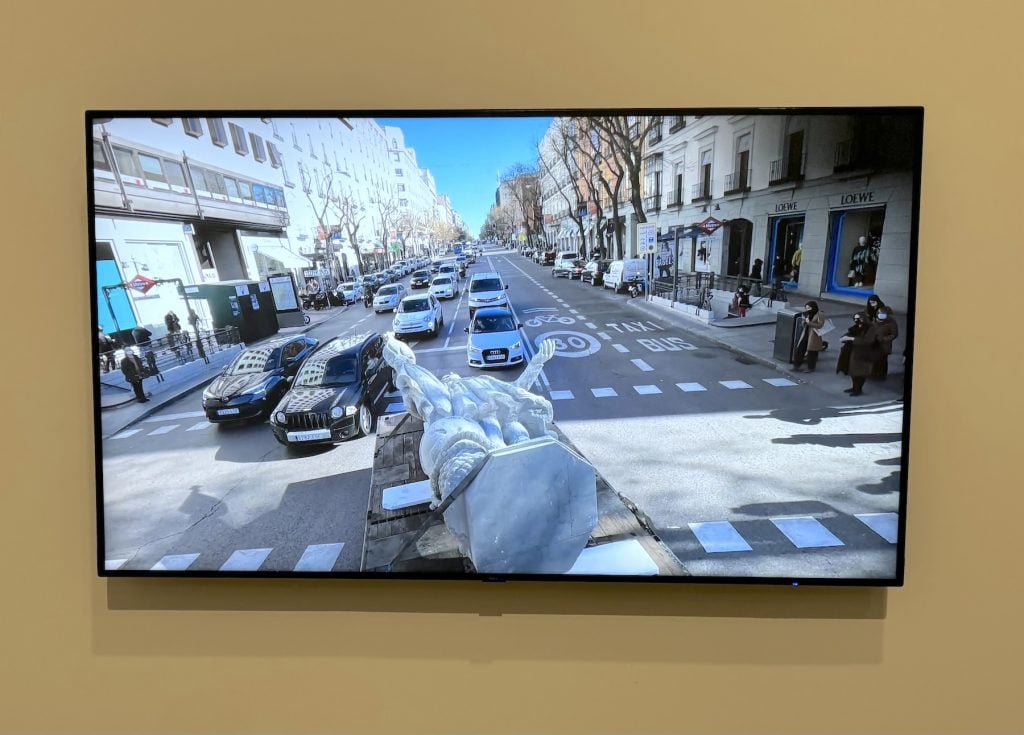
Iván Argote, Paseo (2022). Photo by Ben Davis.
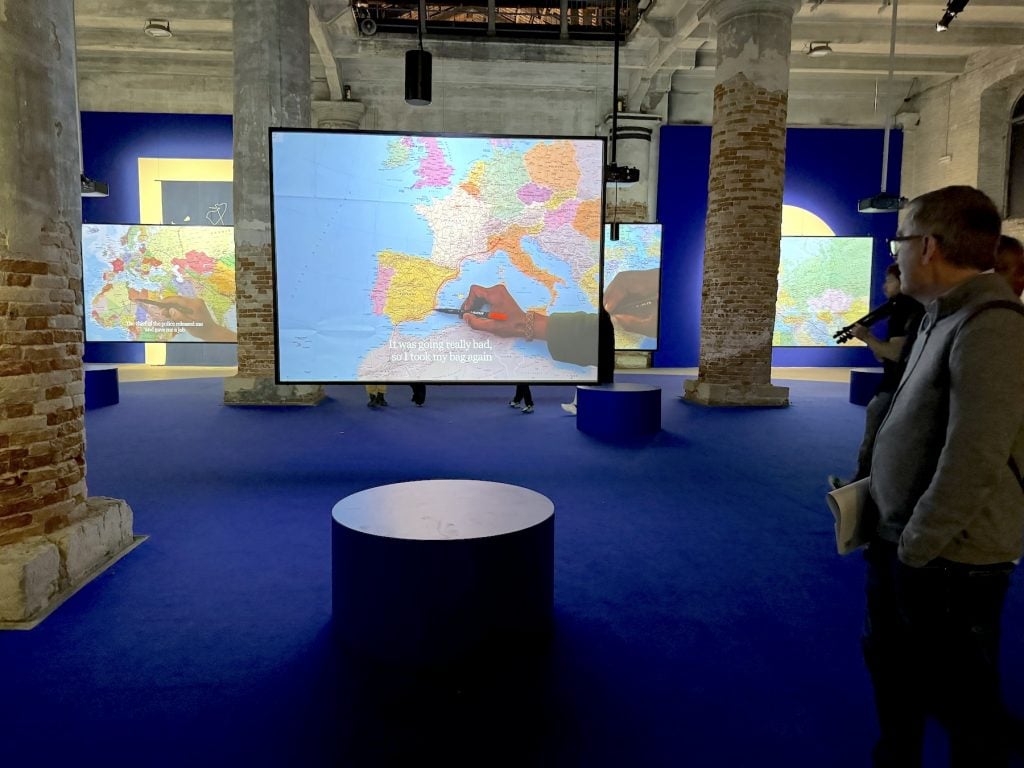
Bouchra Khalili, The Mapping Journey Project (2008–11). Photo by Ben Davis.
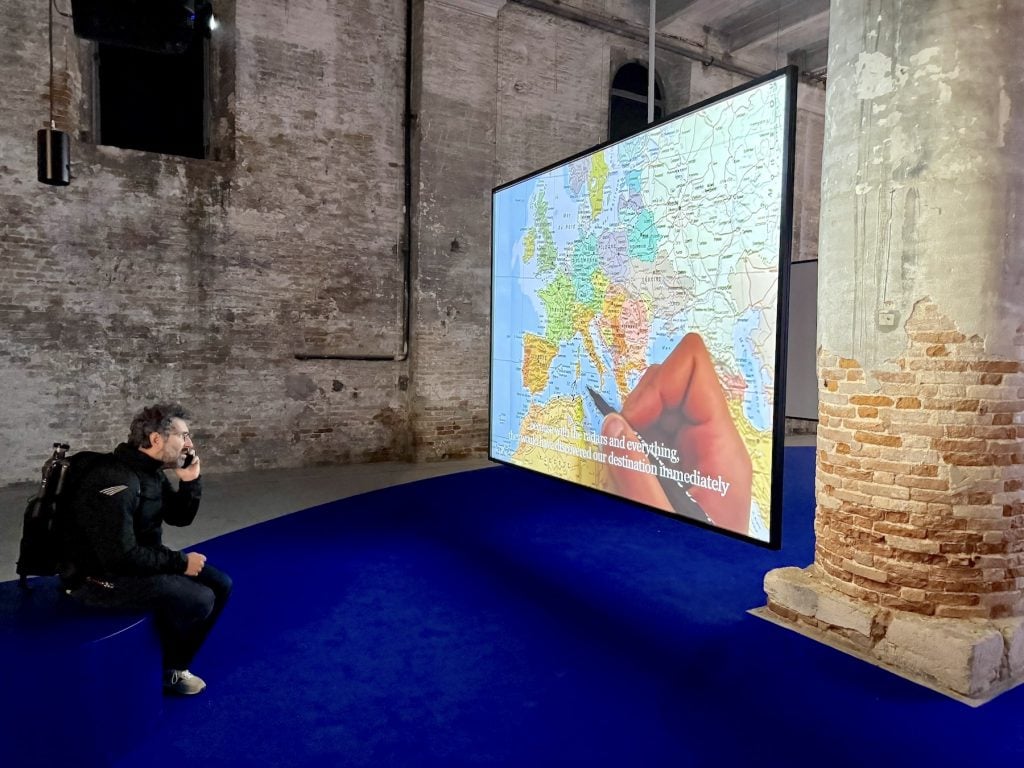
Bouchra Khalili, The Mapping Journey Project (2008–11). Photo by Ben Davis.
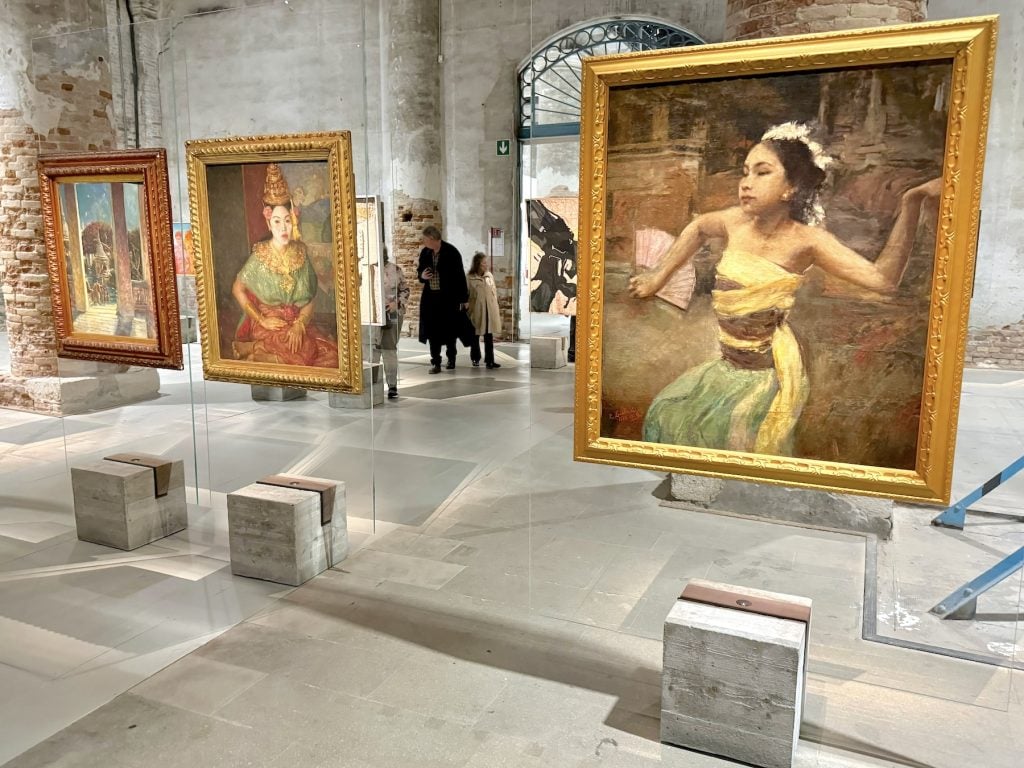
The “Nucleo Storico: Italians Everywhere” section of the Biennale, inspired by Lina Bo Bardi. Photo by Ben Davis.
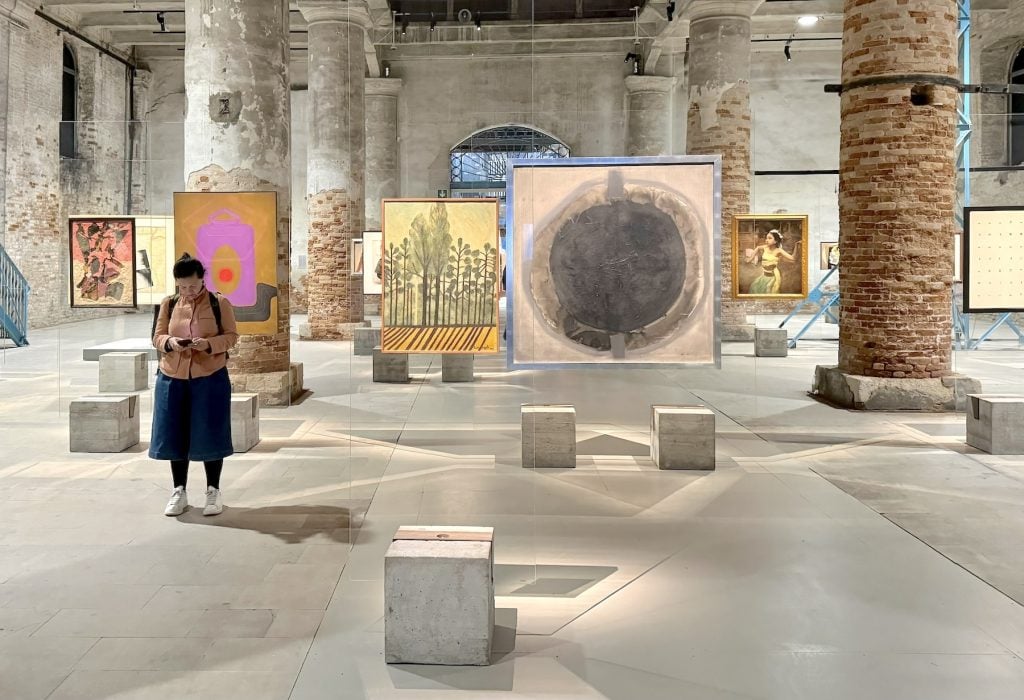
The “Nucleo Storico: Italians Everywhere” section of the Biennale, inspired by Lina Bo Bardi. Photo by Ben Davis.
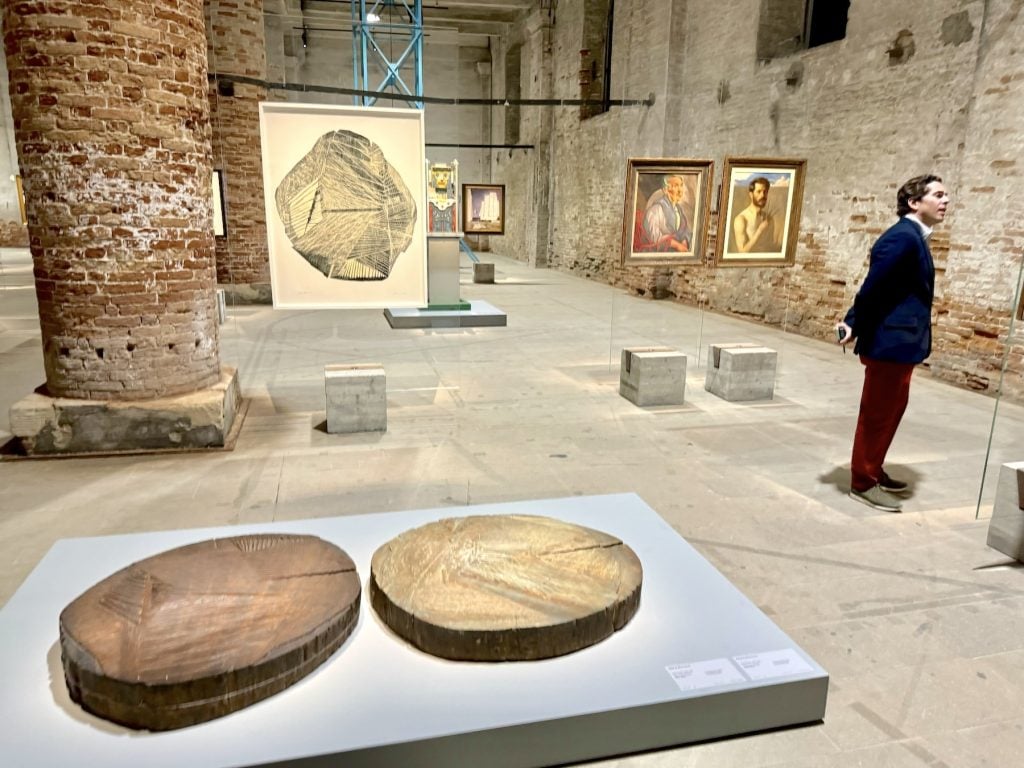
The “Nucleo Storico: Italians Everywhere” section of the Biennale, inspired by Lina Bo Bardi. Photo by Ben Davis.
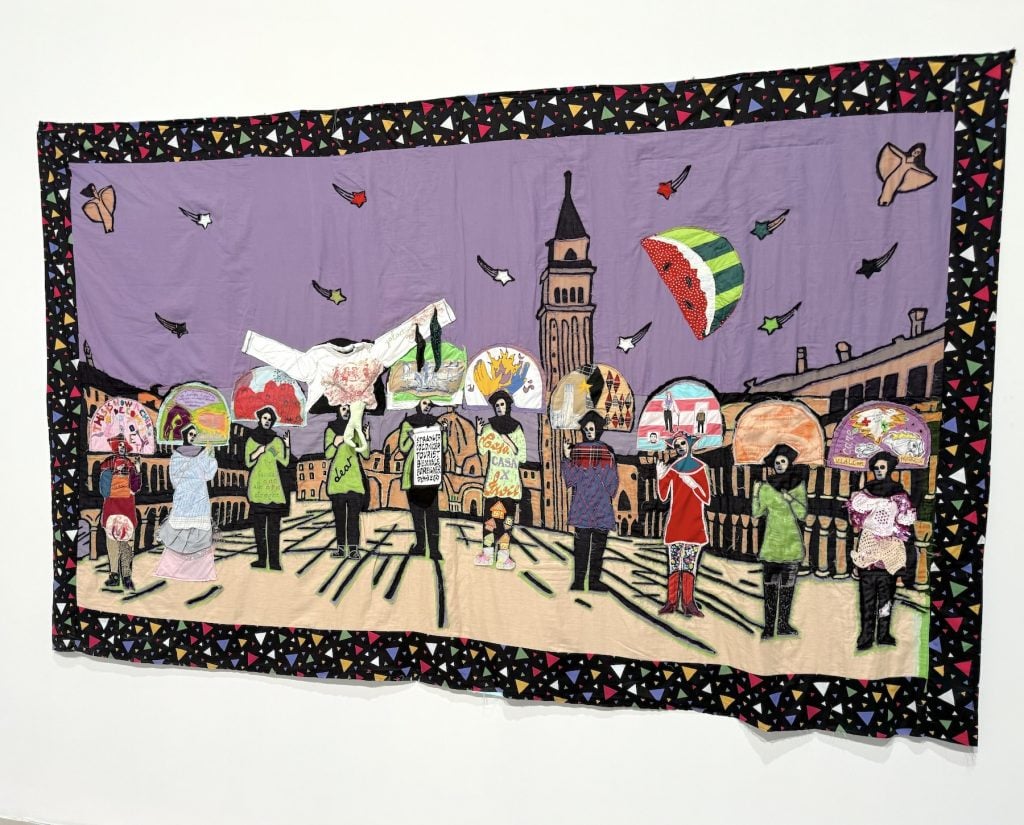
Güneş Terkol, A song to the world -2 (2024). Photo by Ben Davis.
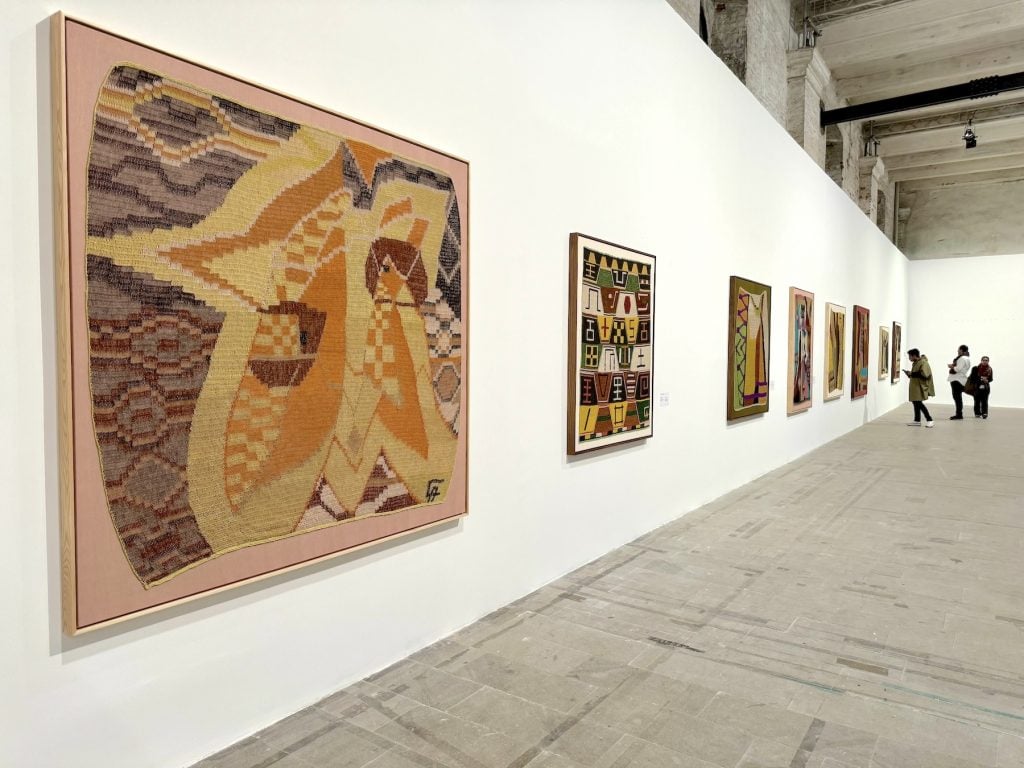
Various works by Claudia Alarcón. Photo by Ben Davis.
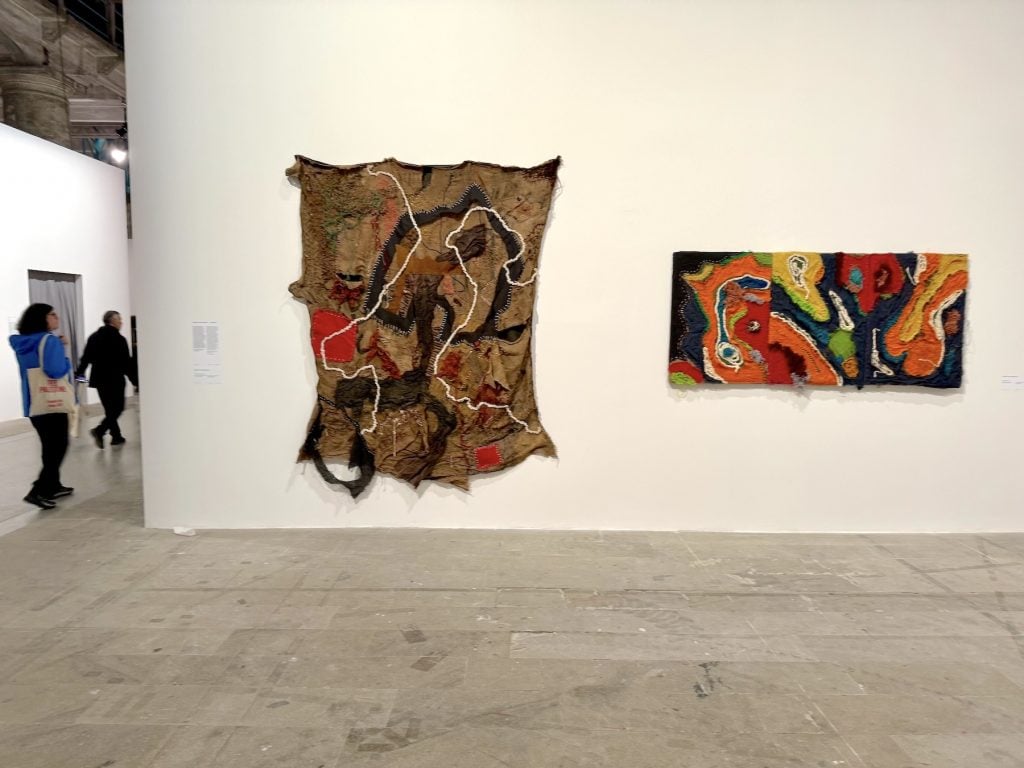
Two works by Shalom Kufakwatenzi. Photo by Ben Davis.
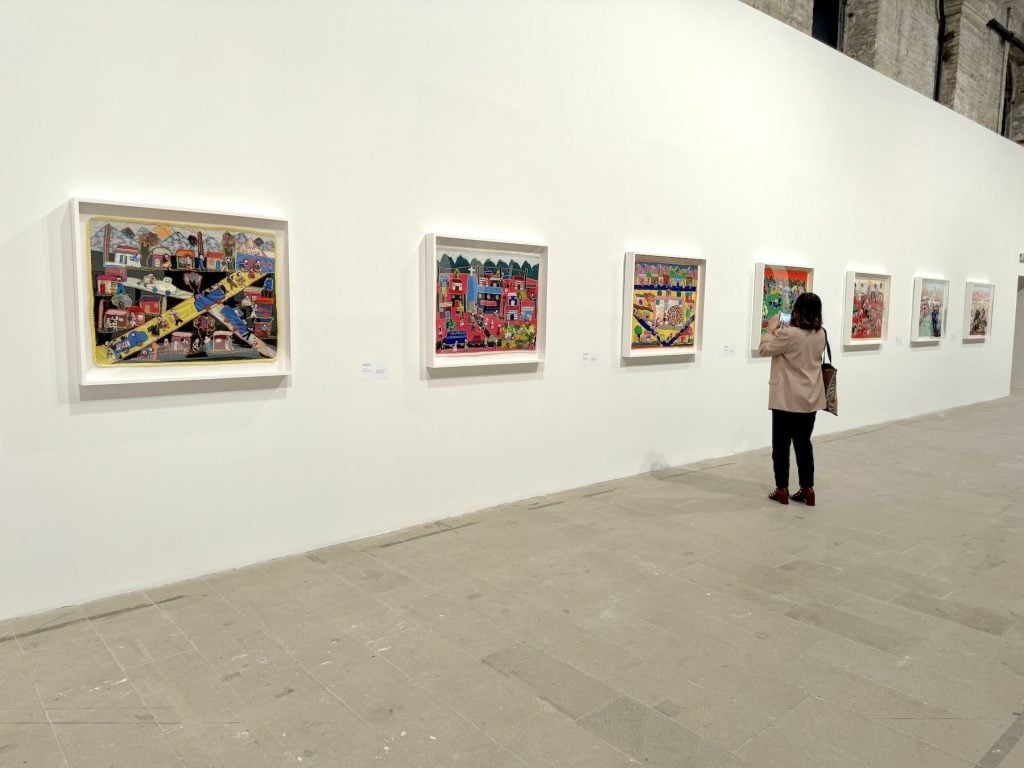
Various ‘arpilleras,’ anonymous embroidered textiles on burlap created during the Pinochet regime in Chile. Photo by Ben Davis.
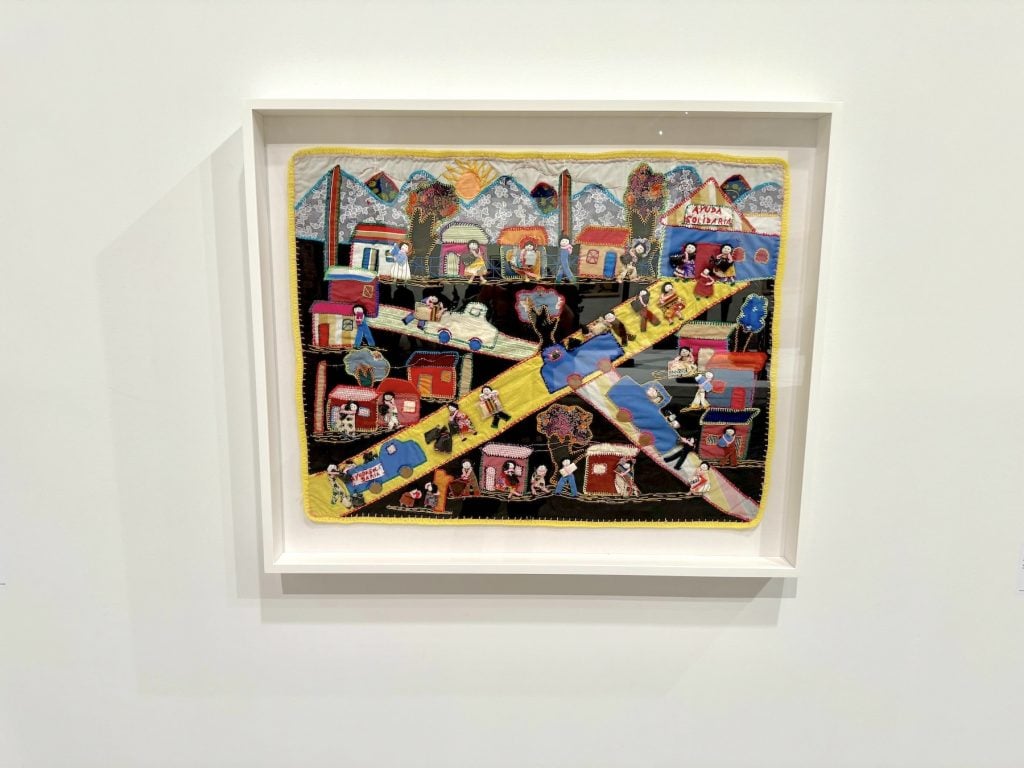
Unidentified Chilean artists, Arpillera (1980s). Photo by Ben Davis.
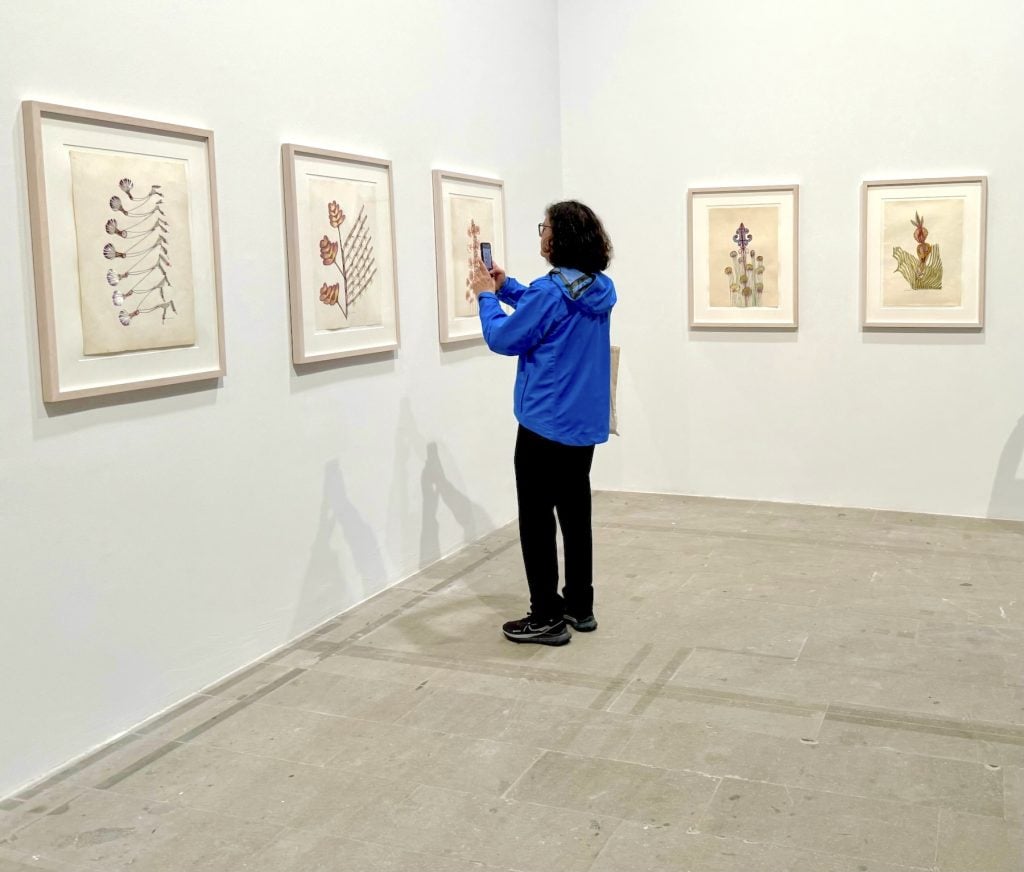
Works by Anna Zemánková. Photo by Ben Davis.
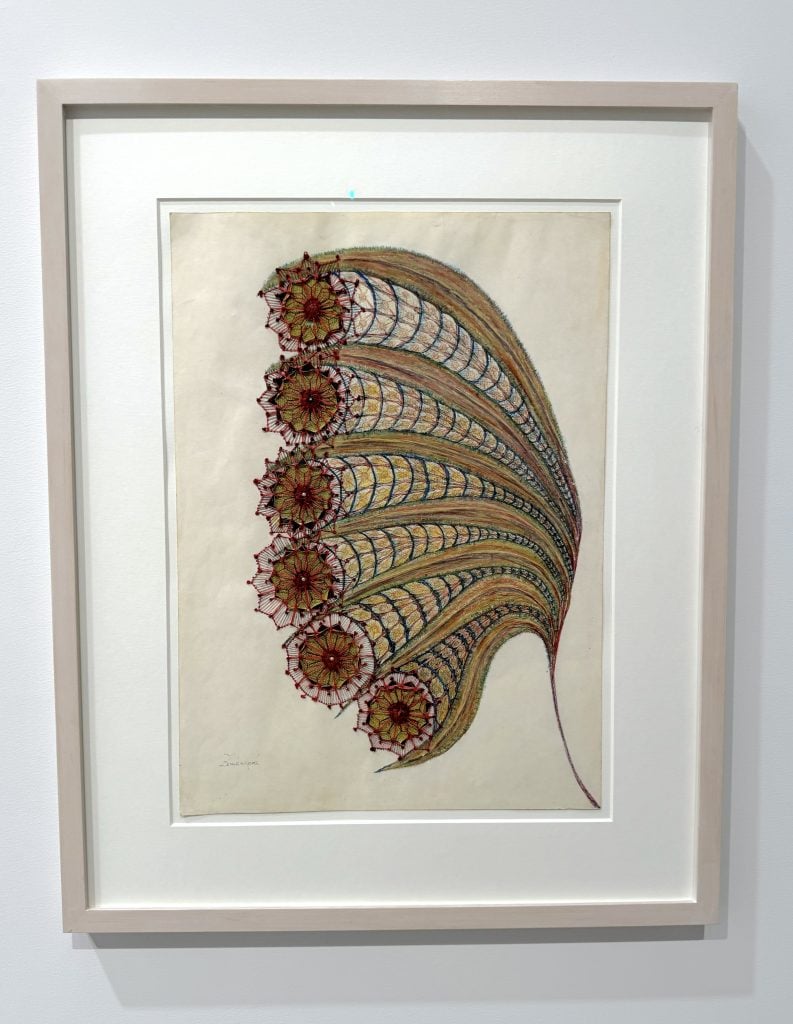
Anna Zemánková, Untitled. Photo by Ben Davis.
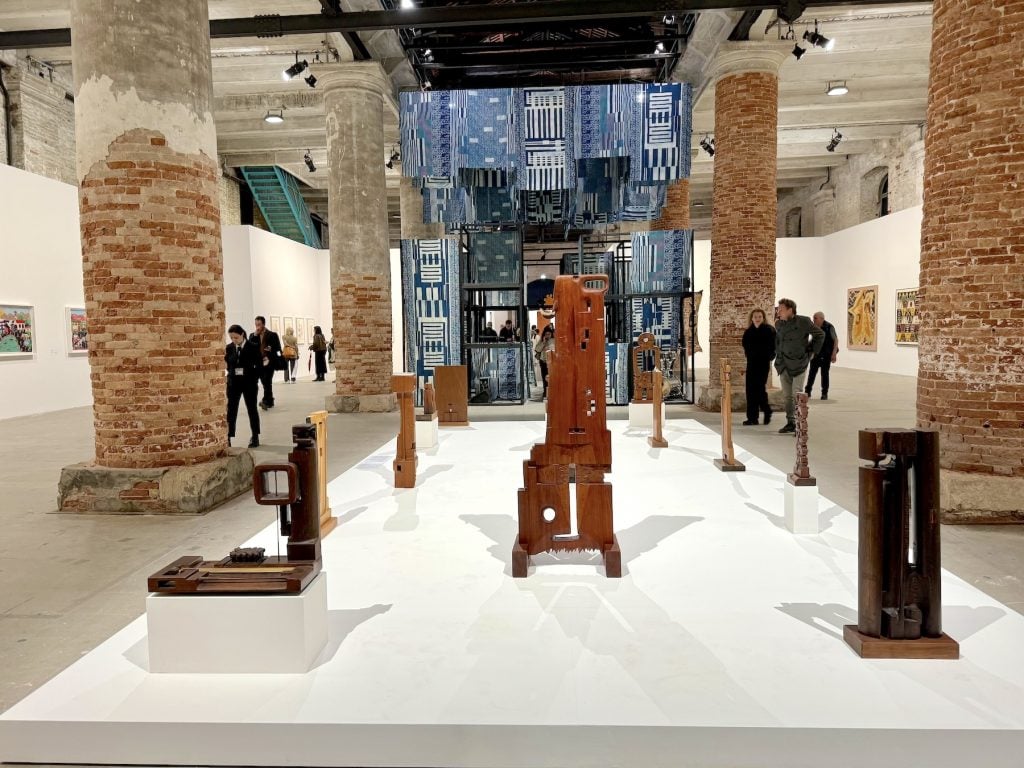
Various sculptures by Chaouki Choukini. Photo by Ben Davis.
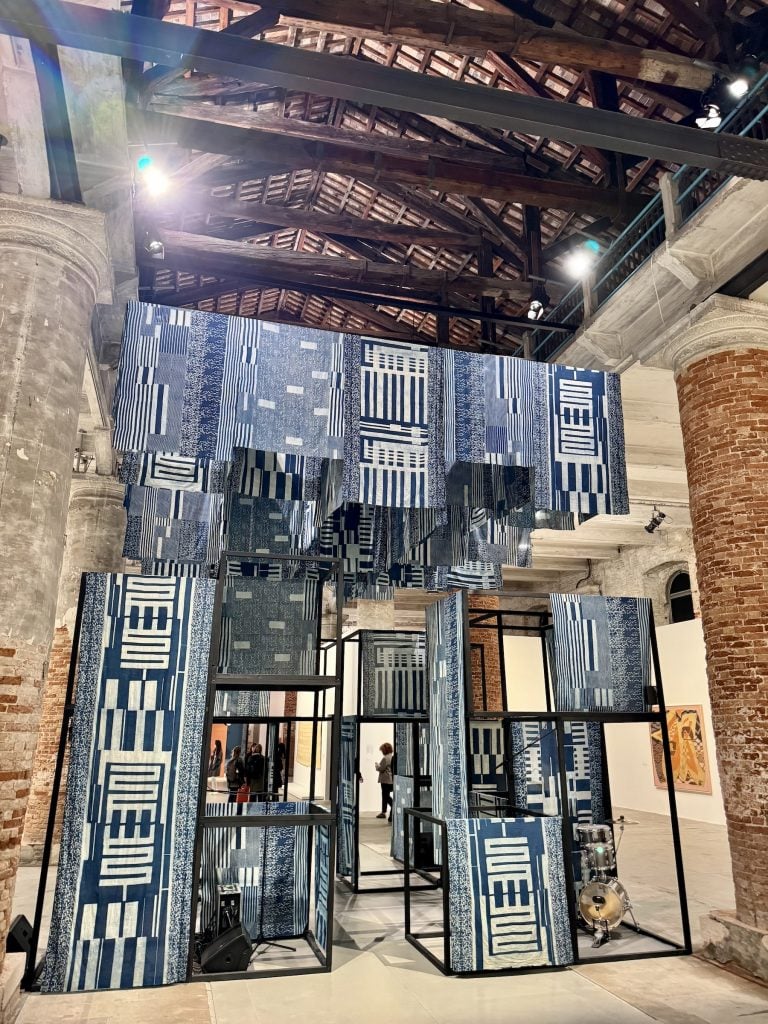
Antonio Jose Guzman and Iva Jankovic, Orbitan Mechanics (2024). Photo by Ben Davis.
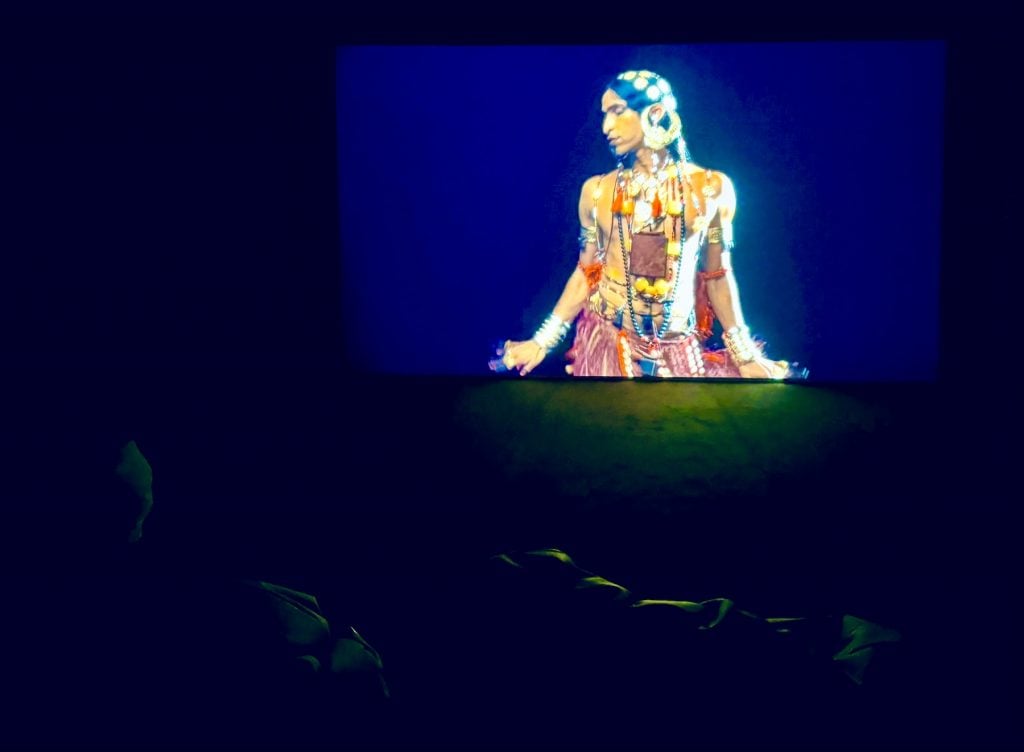
Ahmed Umar, Talitin (The Third) (2023-24). Photo by Ben Davis.
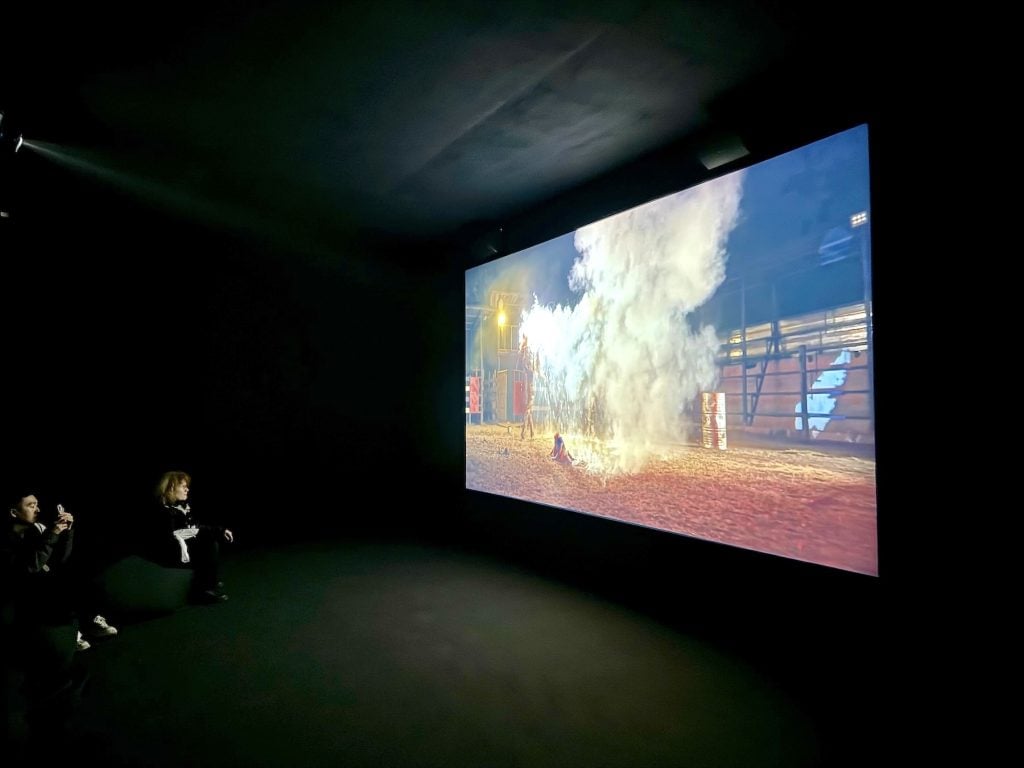
Elyla, Torita-encuentada (2023). Photo by Ben Davis.
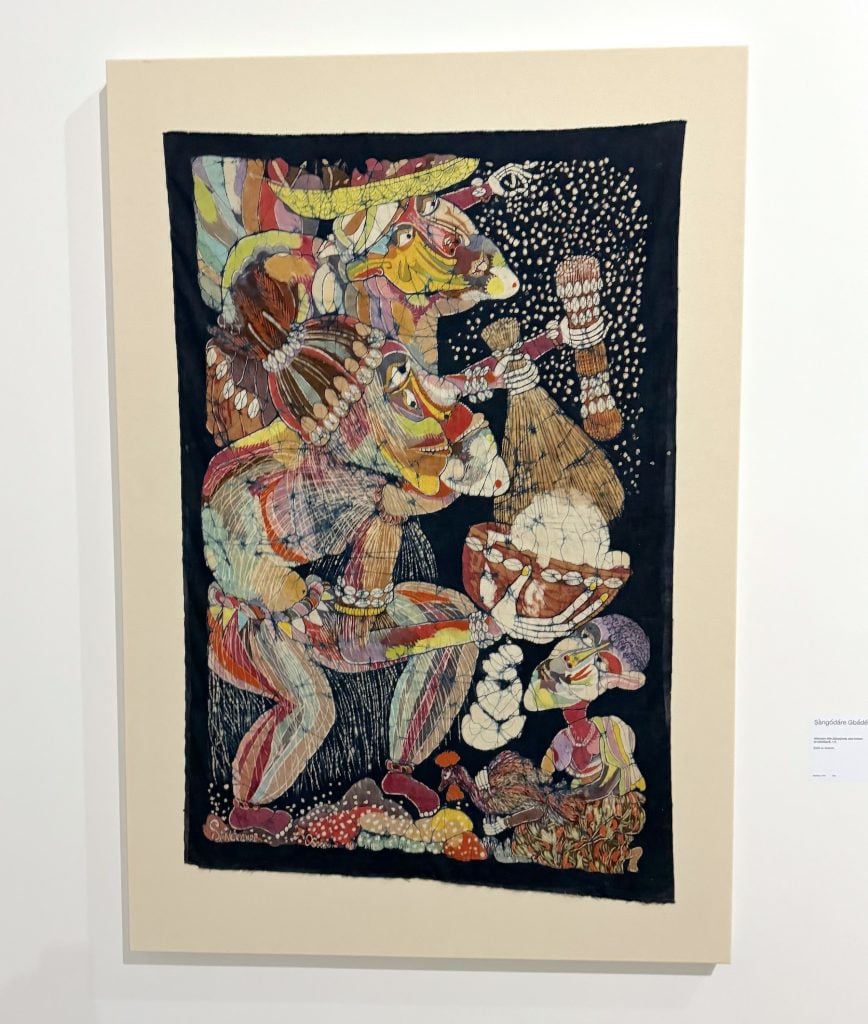
Sangodare Gbadegesin Ajala, unknown title (n.d.) Photo by Ben Davis.
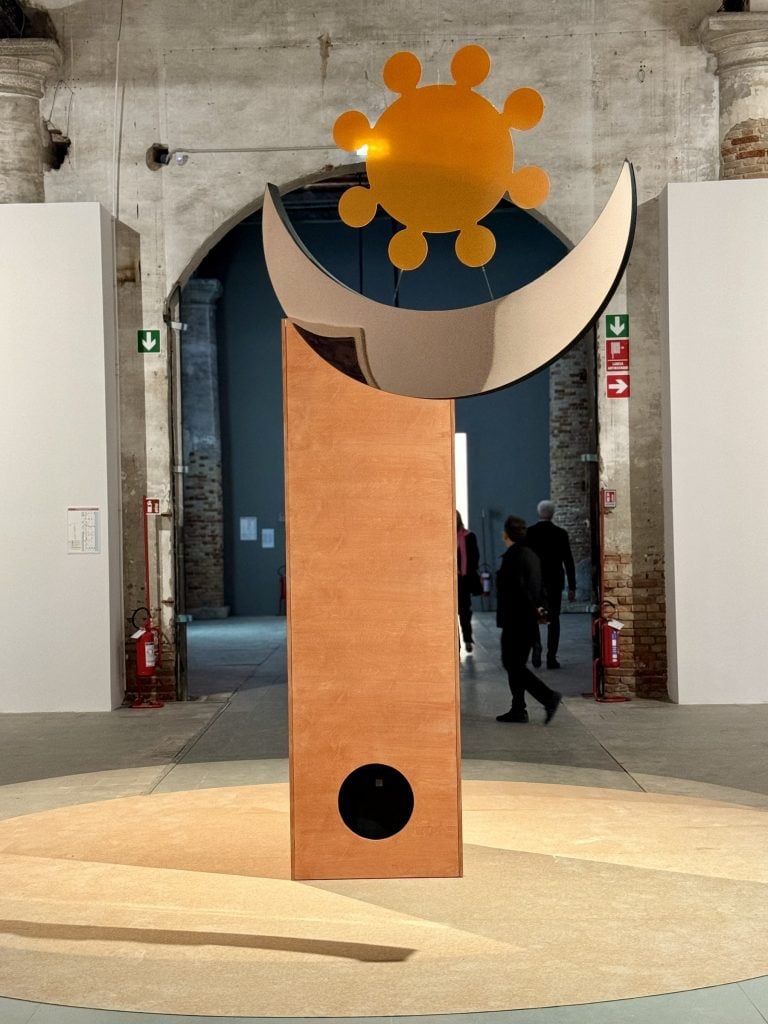
Evan Ifekoya, The Central Sun (2022). Photo by Ben Davis.
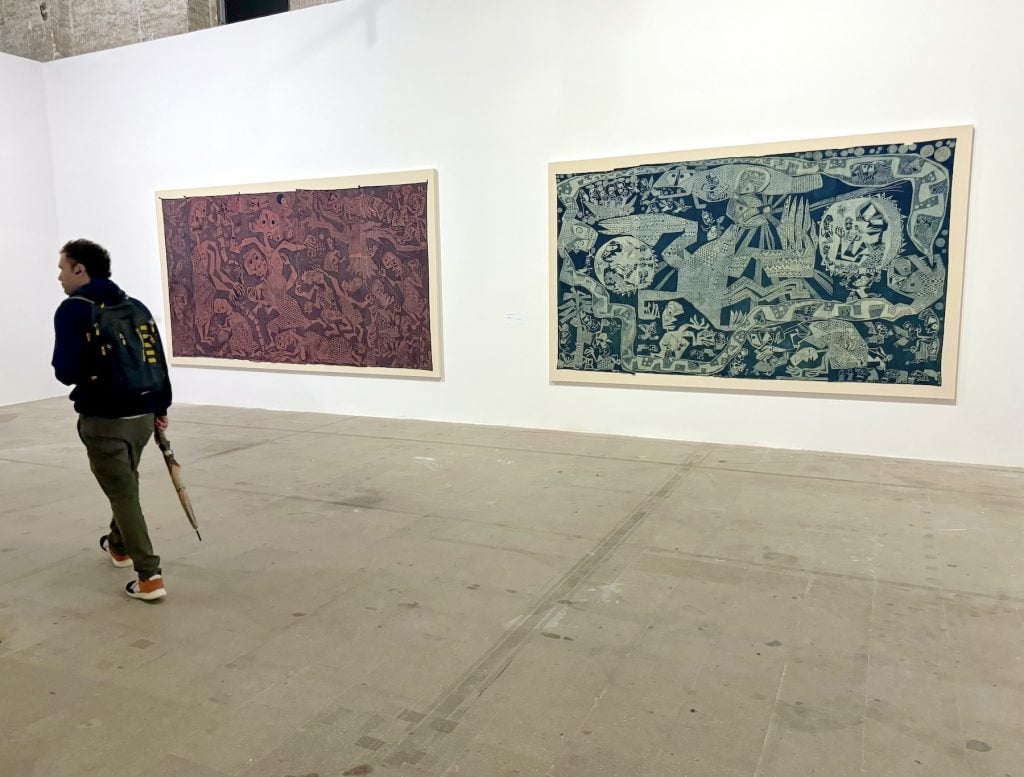
Works by Susanne Wenger. Photo by Ben Davis.
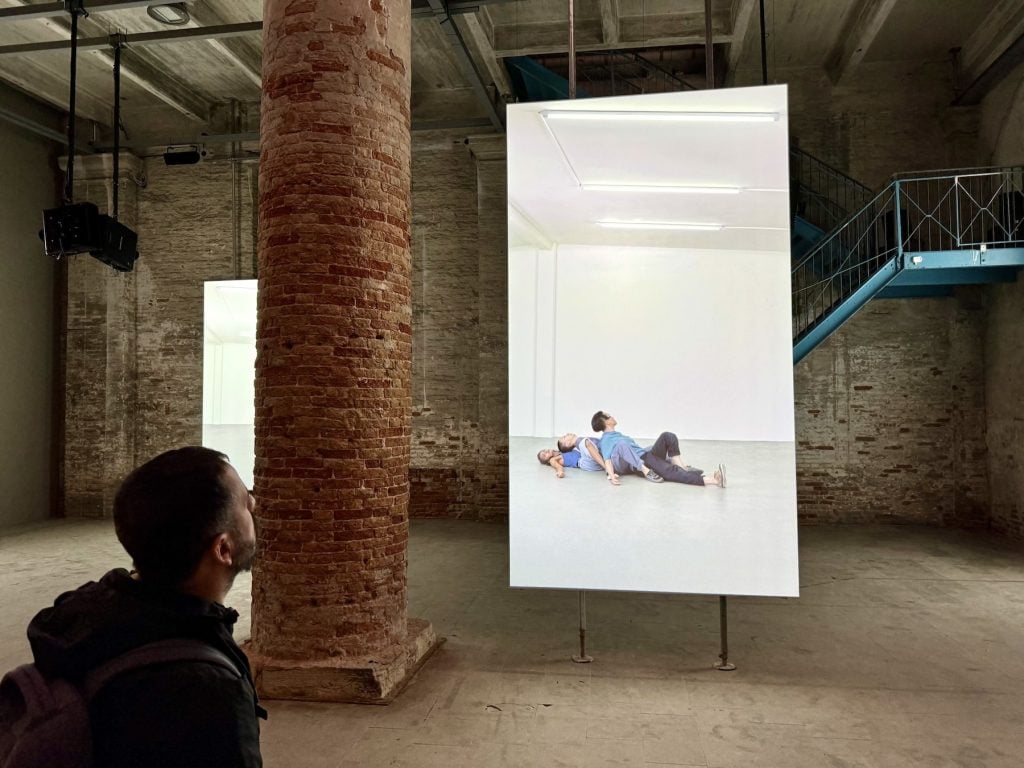
Isaac Chong Wai, Falling Reversely (2021–24). Photo by Ben Davis.
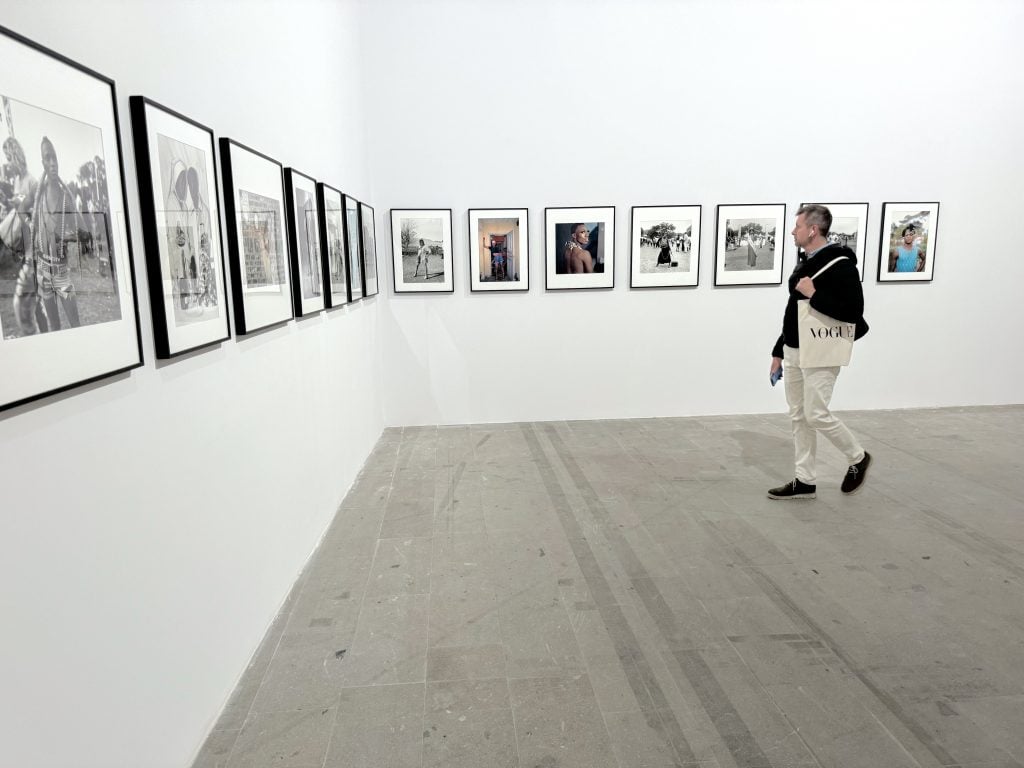
Photo by Sabelo Mlangeni. Photo by Ben Davis.
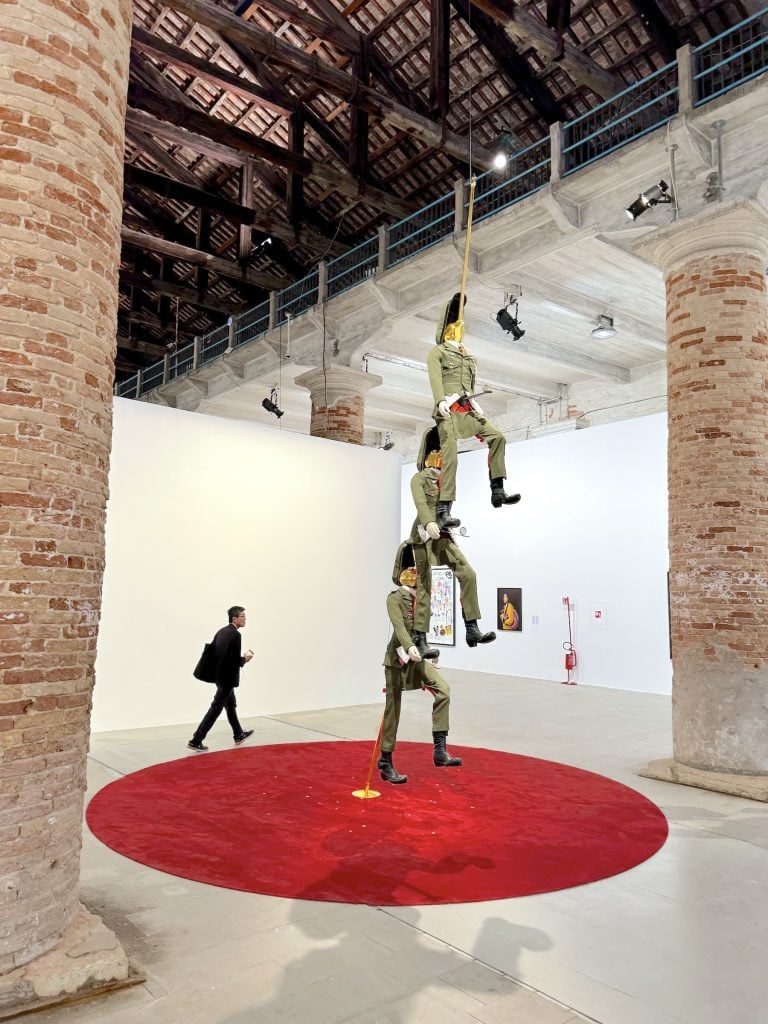
Bárbara Sánchez-Kane, Prêt-à-Patria (2021). Photo by Ben Davis.
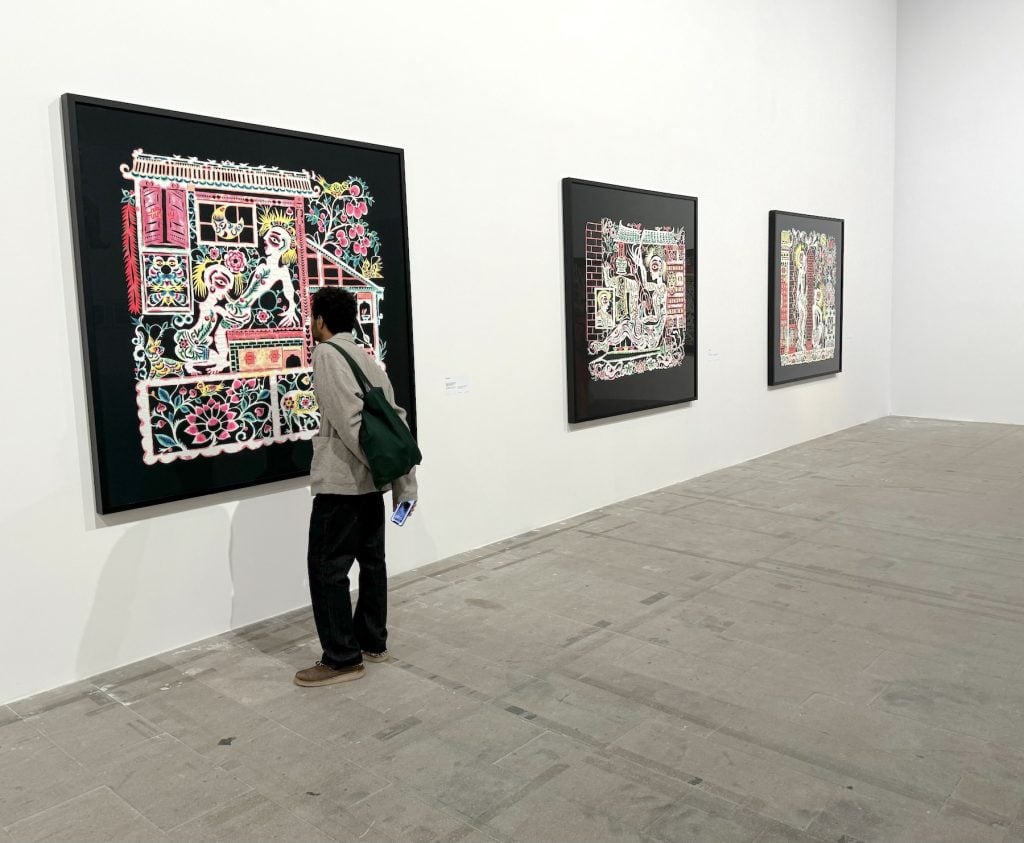
Various works by Xiyadie. Photo by Ben Davis.
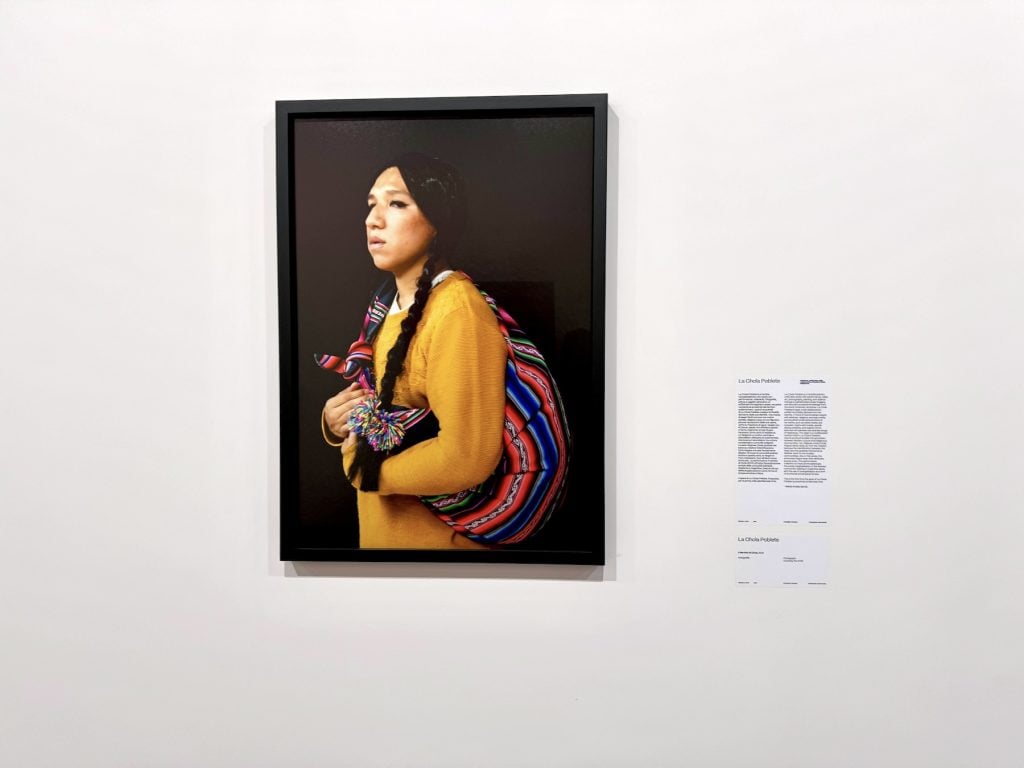
La Chola Poblete, Il Martirio de Chola (2014). Photo by Ben Davis.
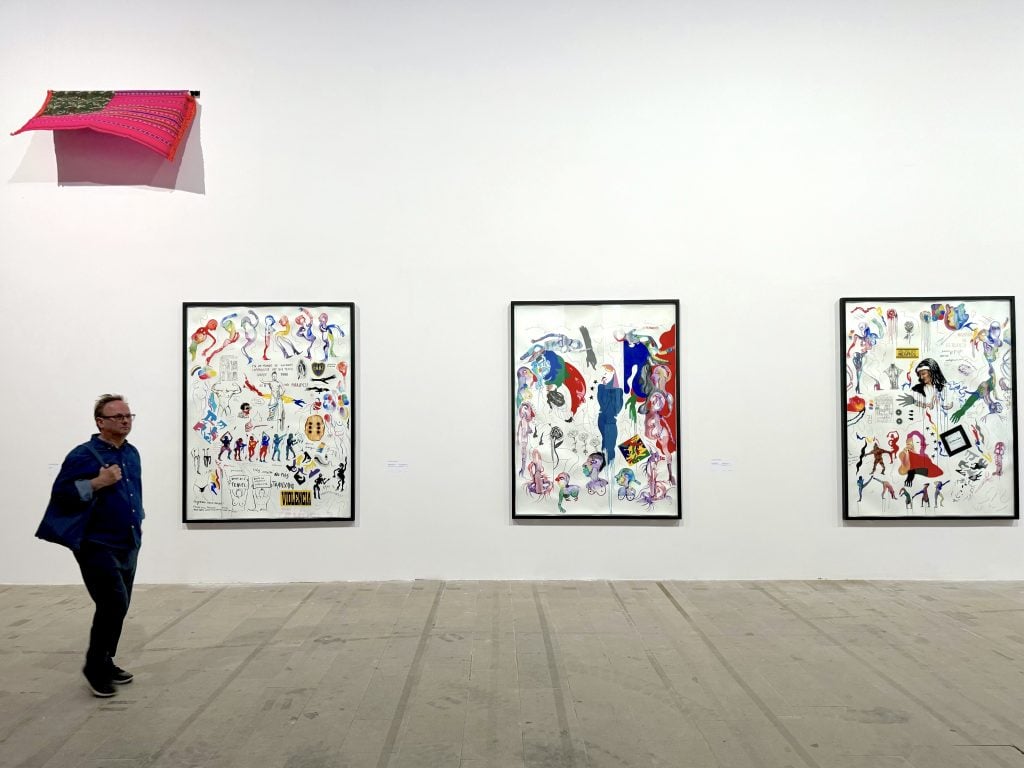
Various works by La Chola Poblete. Photo by Ben Davis.
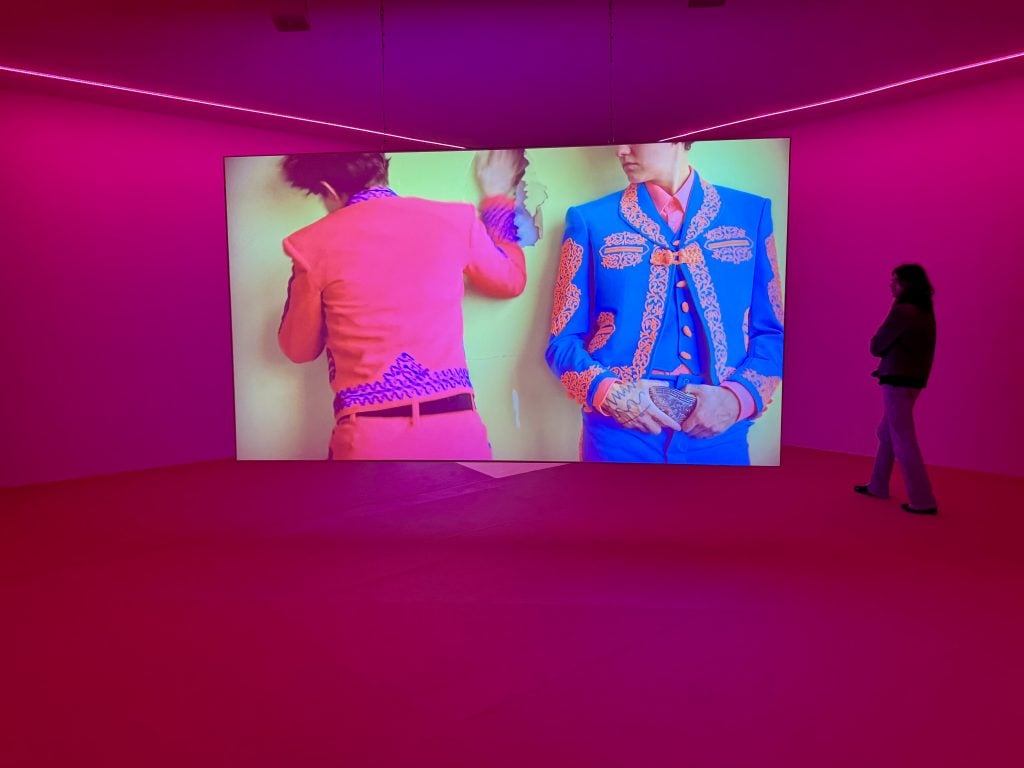
Ana Segovia, Pos′ se acabó este cantar (2021). Photo by Ben Davis.
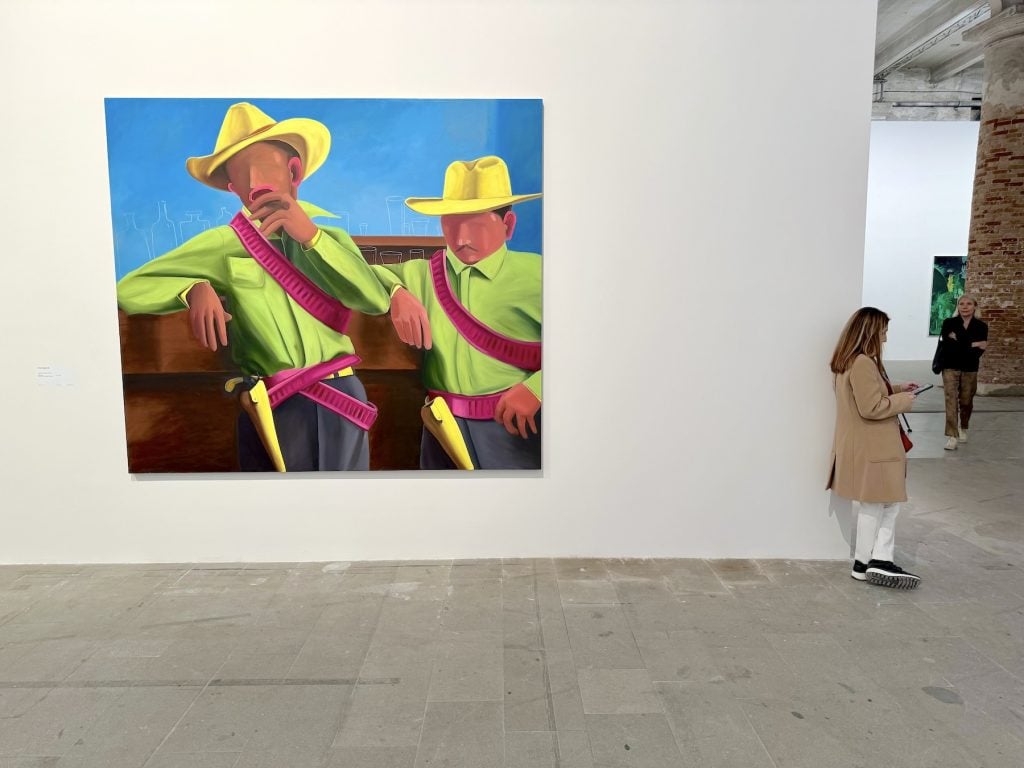
Ana Segovia, Vámonos con Pancho Villa! (2020). Photo by Ben Davis.
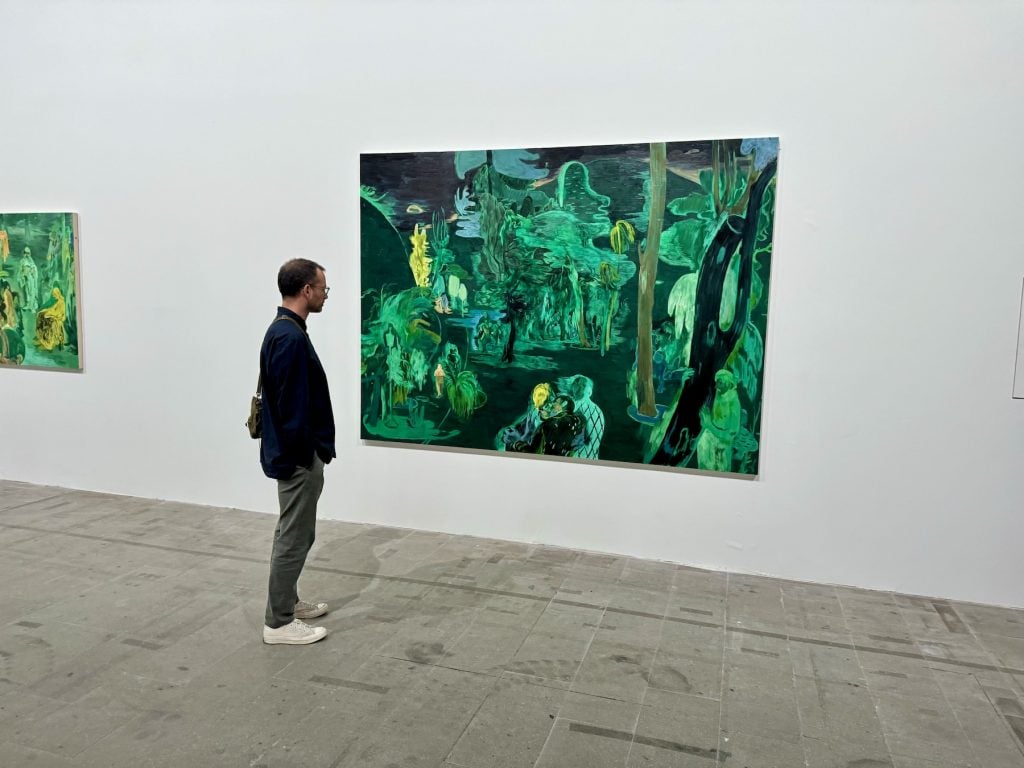
Salman Toor, Night Grove (2024). Photo by Ben Davis.
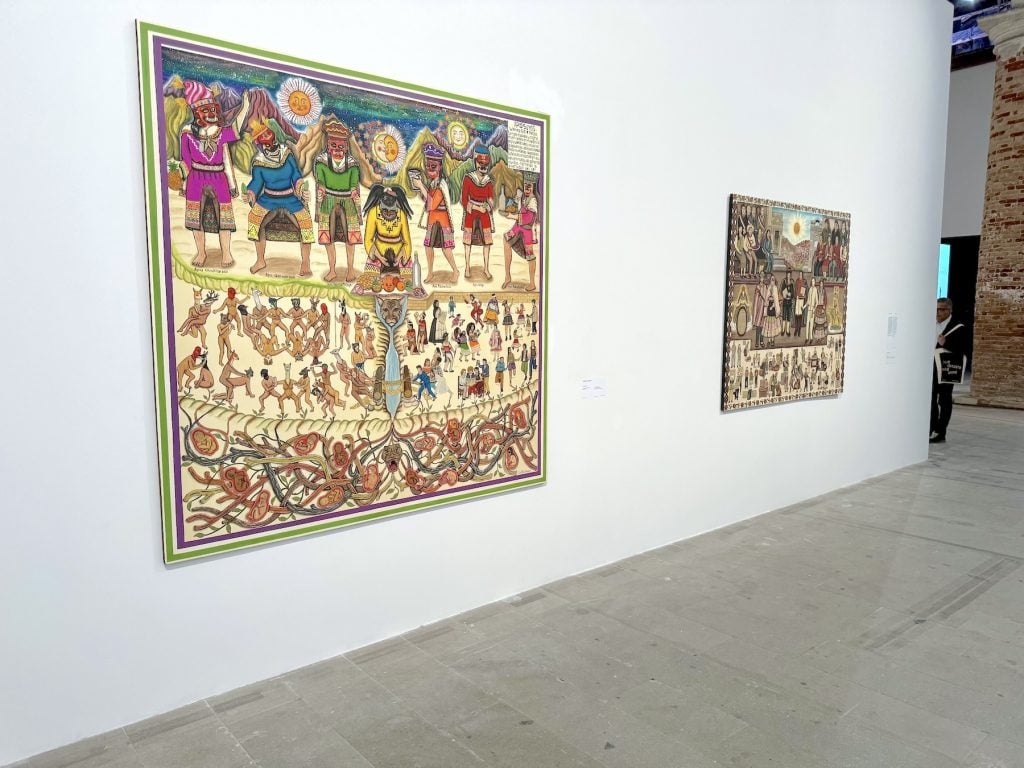
Various works by Violeta Quispe. Photo by Ben Davis.
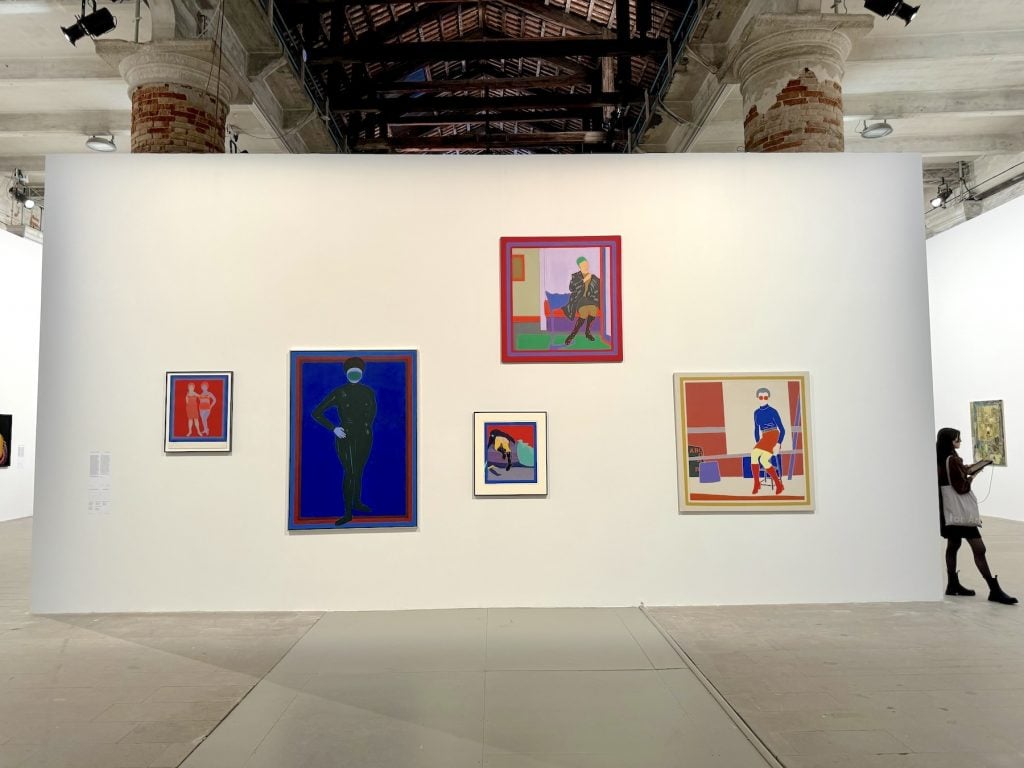
Paintings by Erica Rutherford. Photo by Ben Davis.
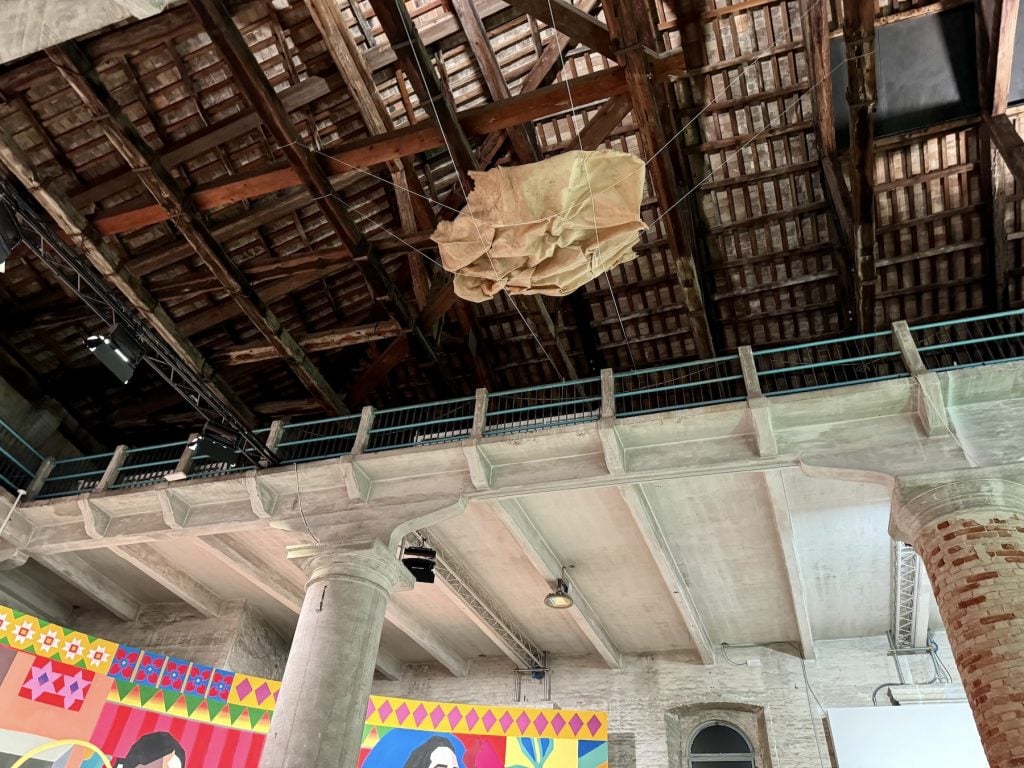
Rindon Johnson, For Example, Collect the Water Just to See It Pool There Above Your Head. Don’t be a Fucking Hero! (2021-ongoing). Photo by Ben Davis.
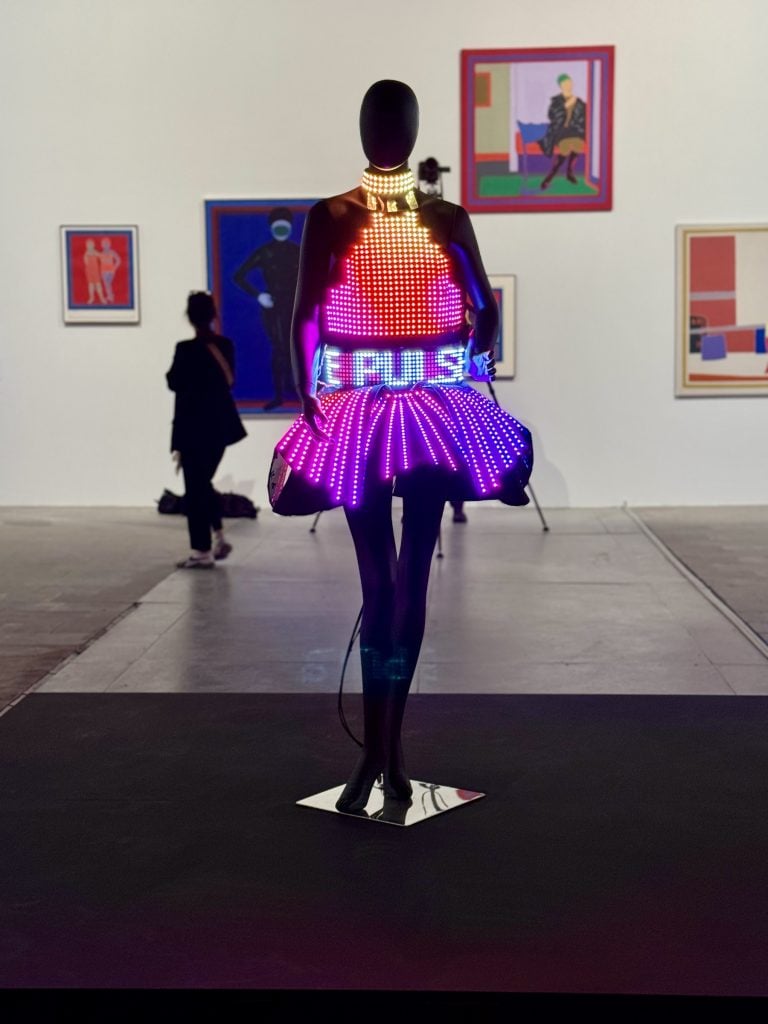
Puppies Puppies, Electric Dress (Atsuko Tanaka), 2022. Photo by Ben Davis.
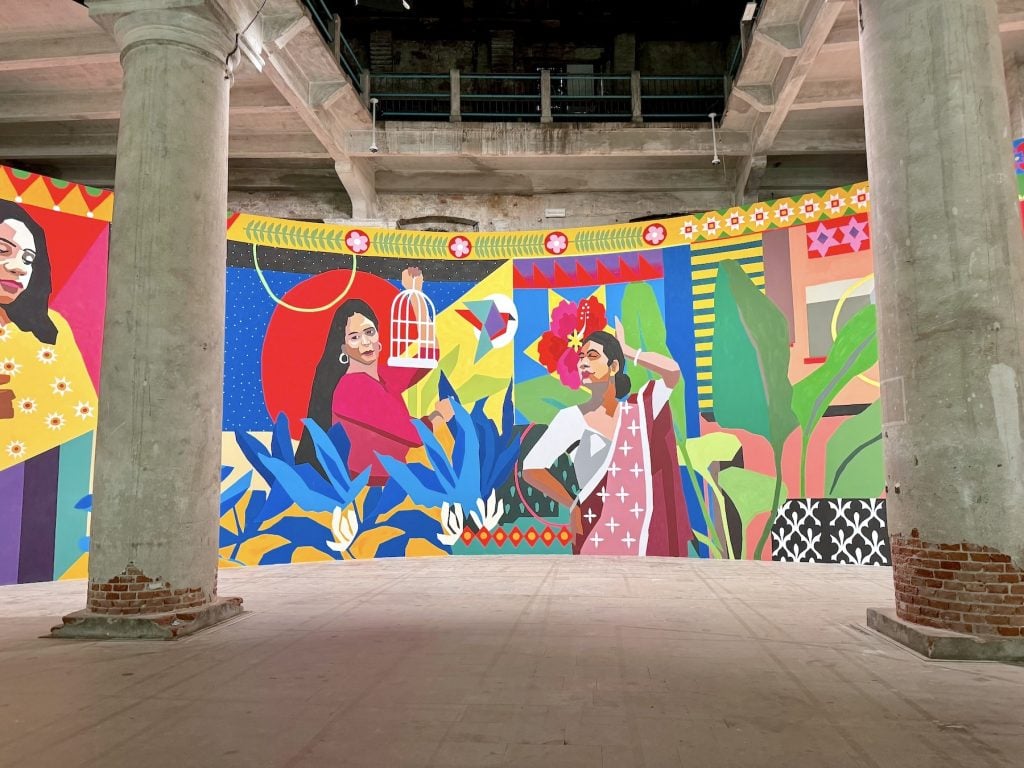
Aravani Art Project, Diaspore (2024). Photo by Ben Davis.

Joshua Serafin, VOID (2022). Photo by Ben Davis.
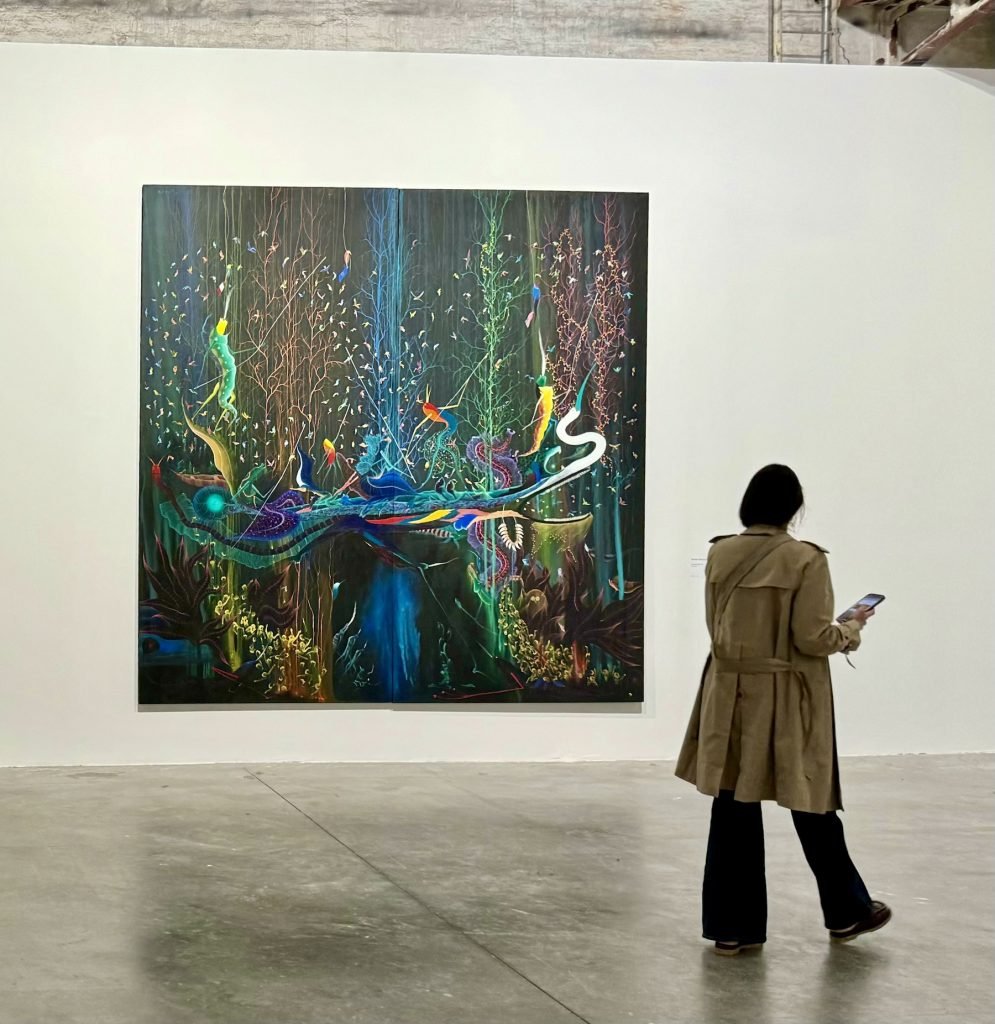
A painting by Rember Yahuarcani. Photo by Ben Davis.
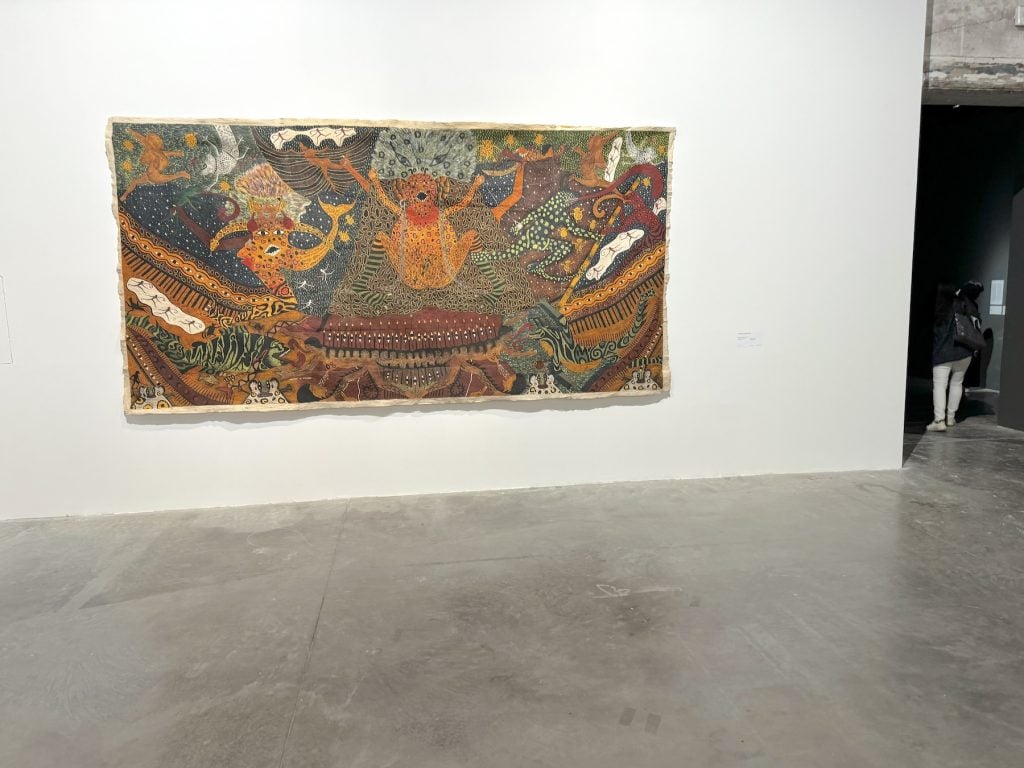
Santiago Yahuarcani, Shiminbro, el Hacedor del sonido (2024). Photo by Ben Davis.
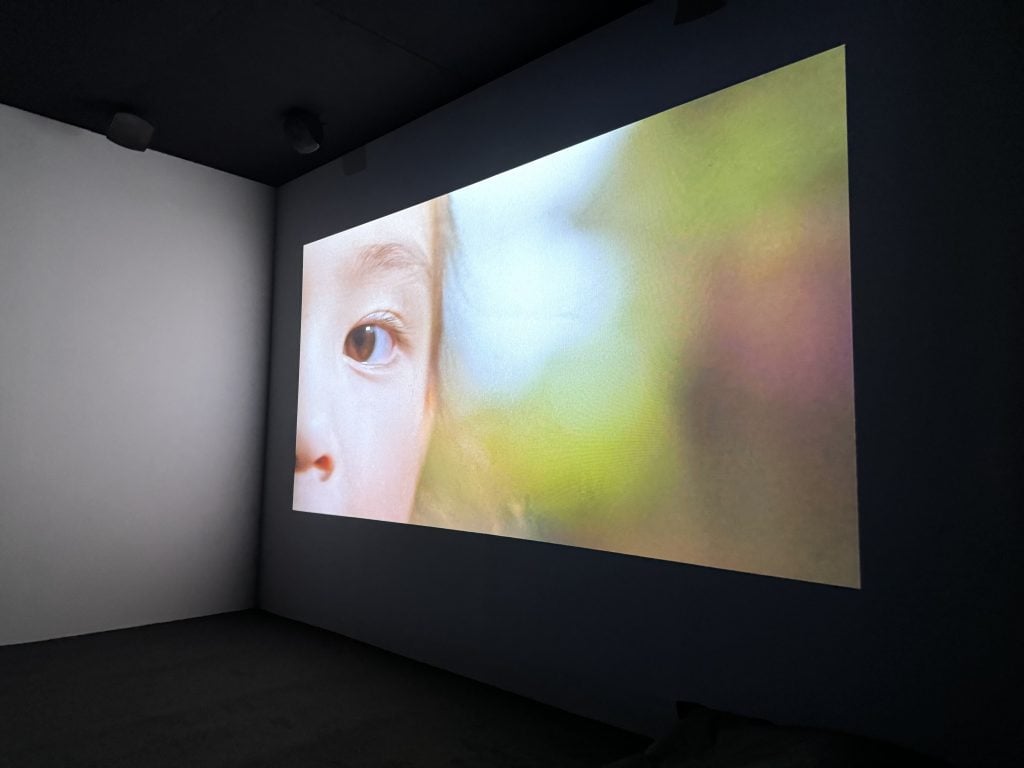
Charmaine Poh, what’s softest in the world rushes and runs over what’s hardest in the world (2024). Photo by Ben Davis.
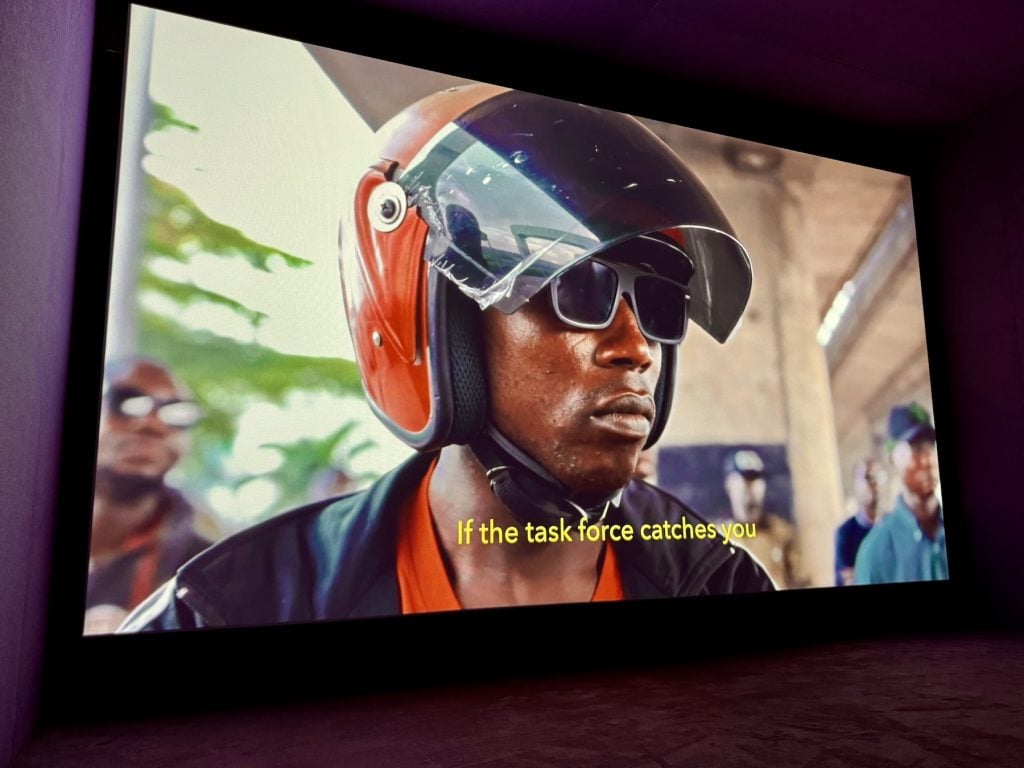
Karimah Ashadu, Machine Boys (2024). Photo by Ben Davis.
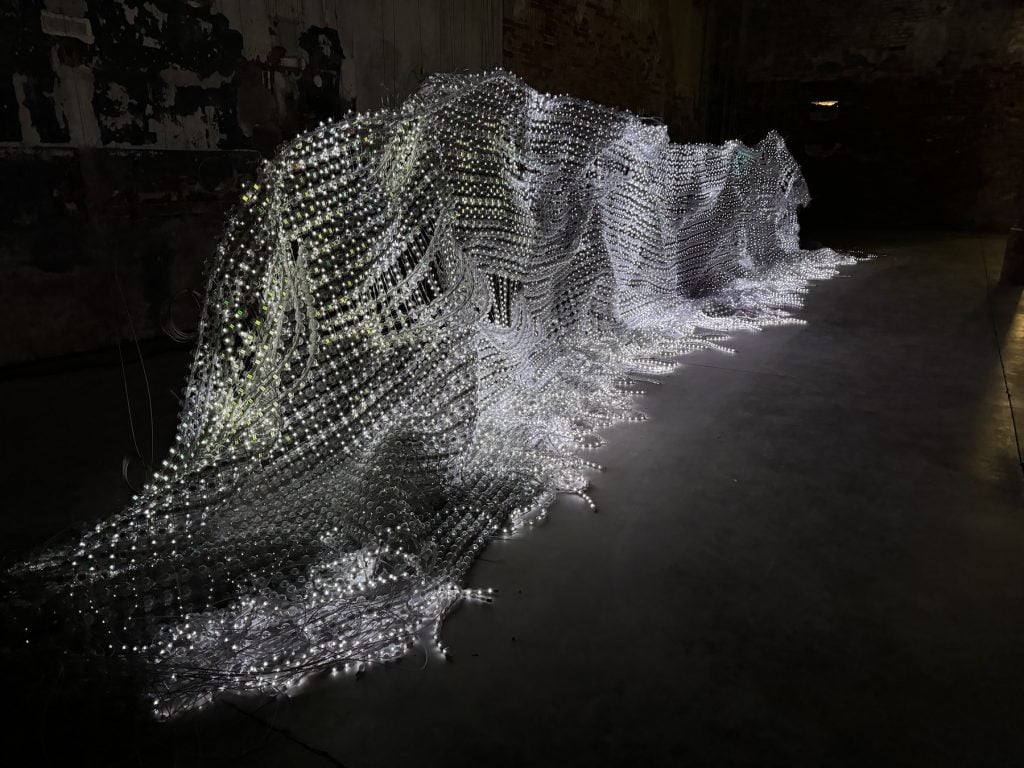
WangShui, Lipid Muse (2024). Photo by Ben Davis.
Oh yes, and just when you think you are done and can start to process it all, someone will say to you, “Did you see the works out back?”
As is usual, multiple works are sited in the gardens and Arsenale warehouses. While the Arsenale show feels like it tells a story, these spaces always feel like an awkward coda. This time around, these spaces include multiple lengthy film works, as well an installation by Anna Maria Maiolino that features several tons of soft clay objects. Make no mistake, Maiolino is not peripheral to this show: She won the 60th Biennale’s Golden Lion for Lifetime Achievement alongside Nil Yalter—so it’s actually fitting she closes the show, where Yalter opened it.
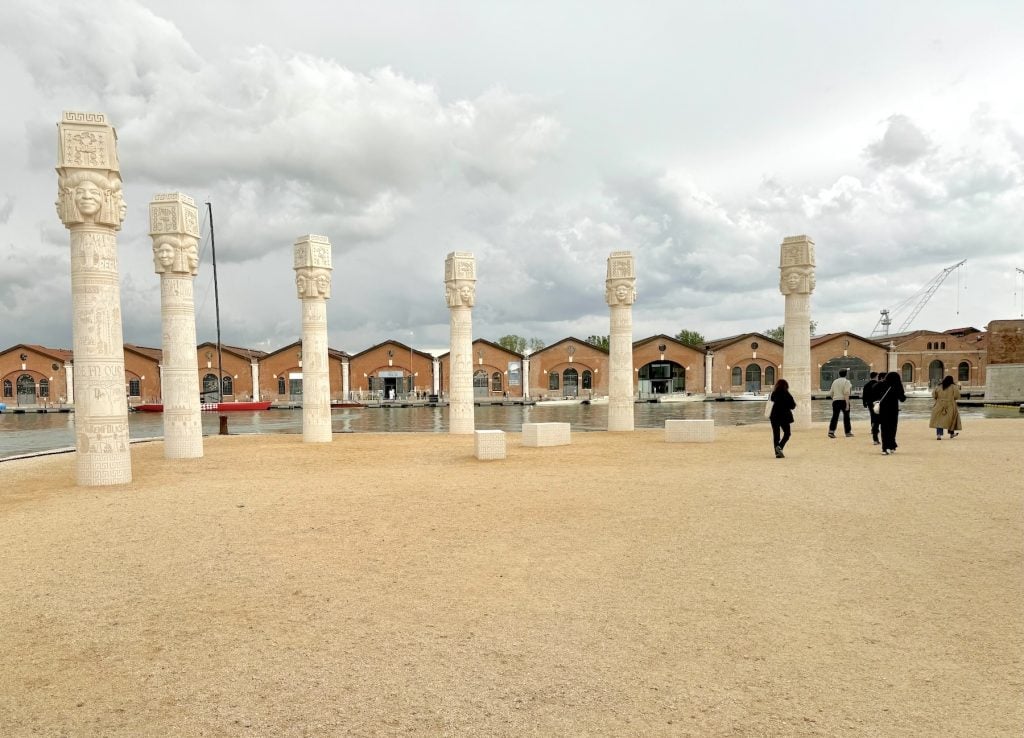
Lauren Halsey, keepers of the known (2024). Photo by Ben Davis.
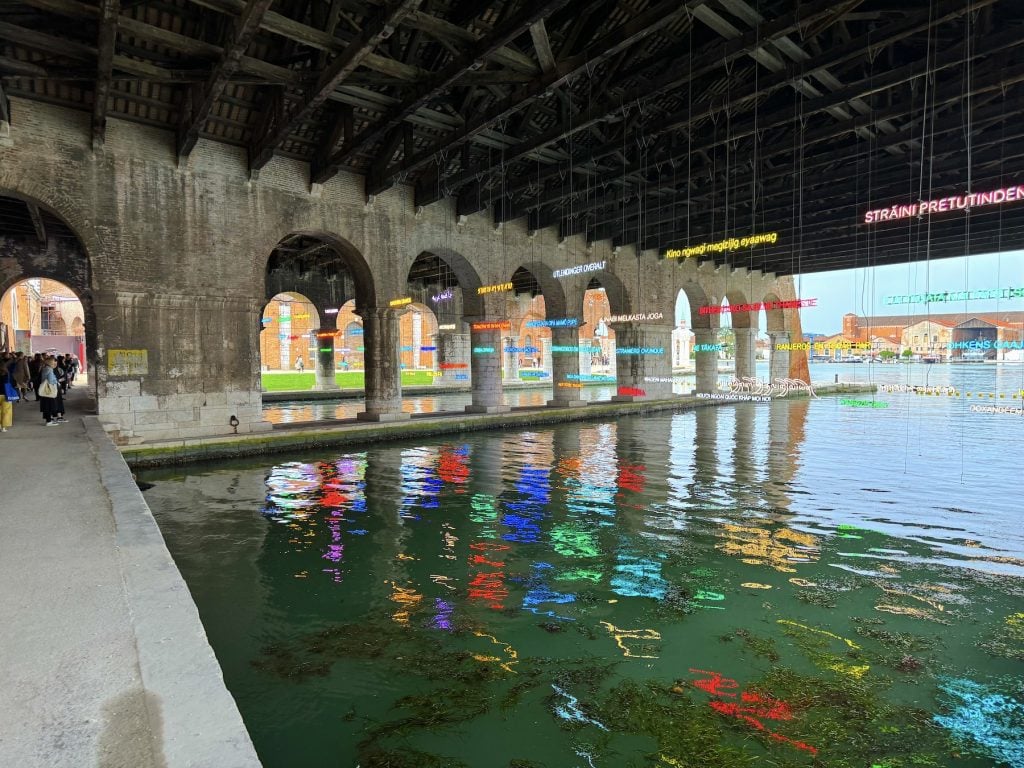
Claire Fontaine, Foreigners Everywhere (2024). Photo by Ben Davis.
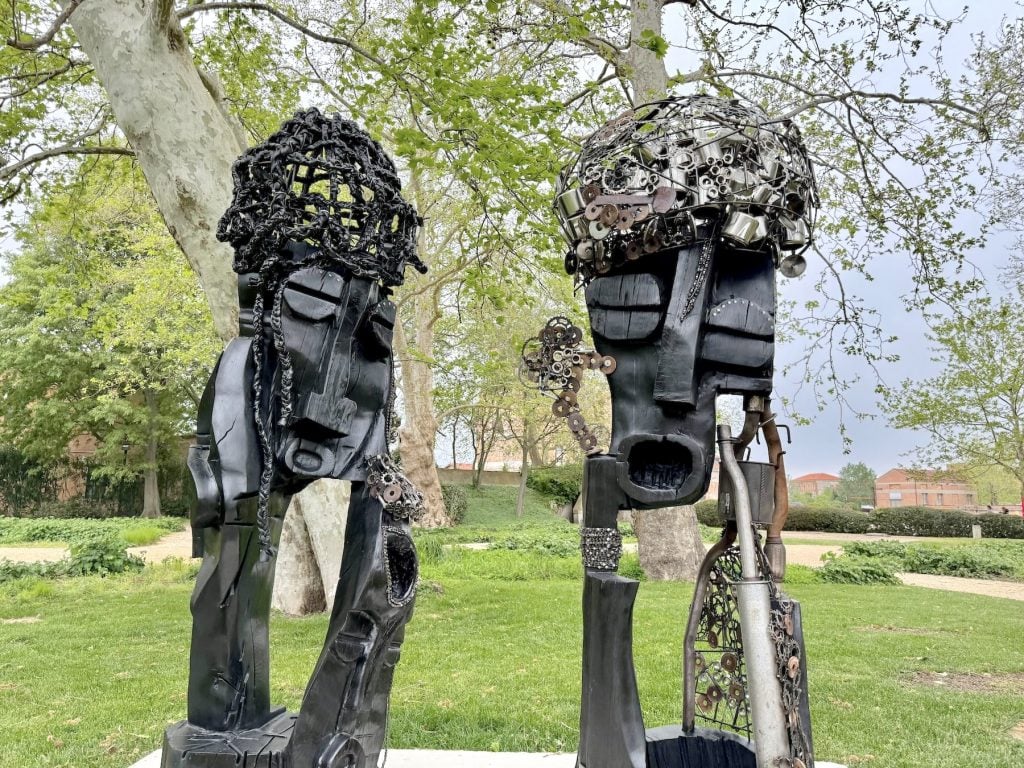
Two sculptures by Leilah Babirye. Photo by Ben Davis.
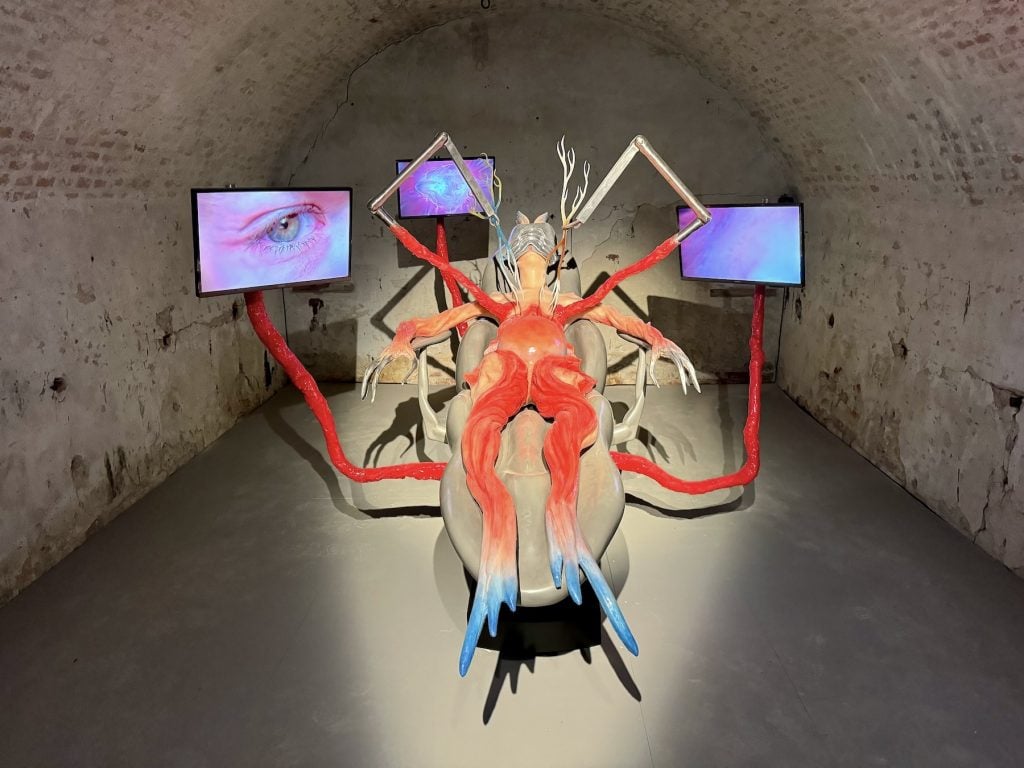
Agnes Questionmark, Cyber-Teratology Operation (2024). Photo by Ben Davis.
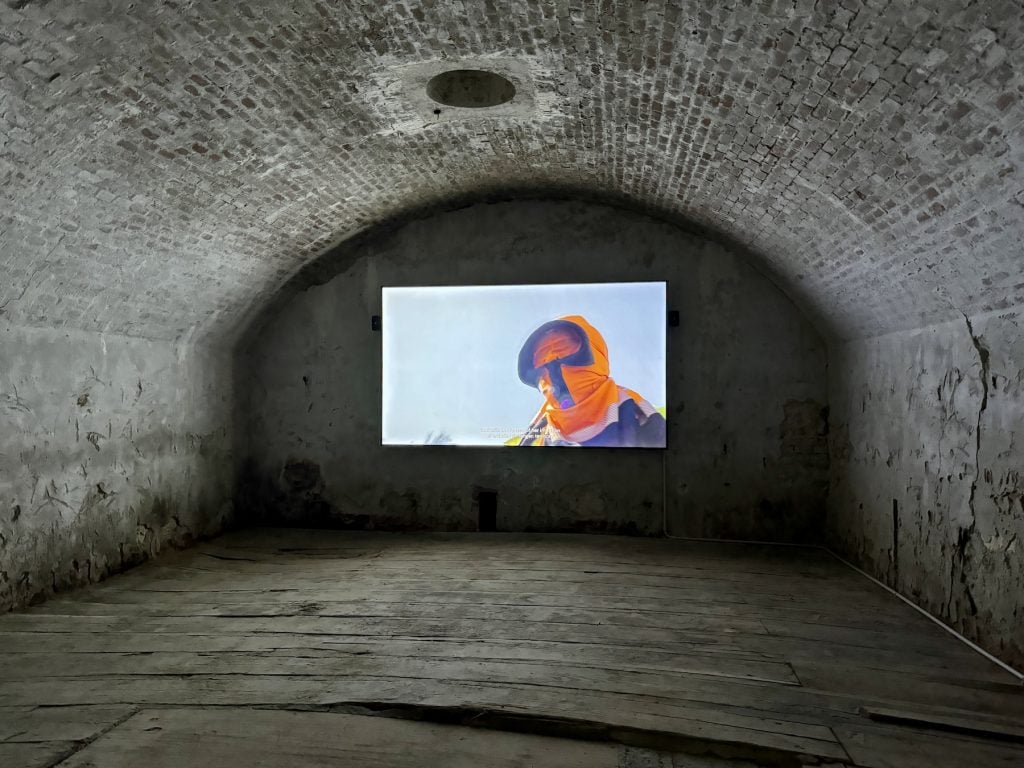
Manauara Clandestina, Migranta (2020–23). Photo by Ben Davis.
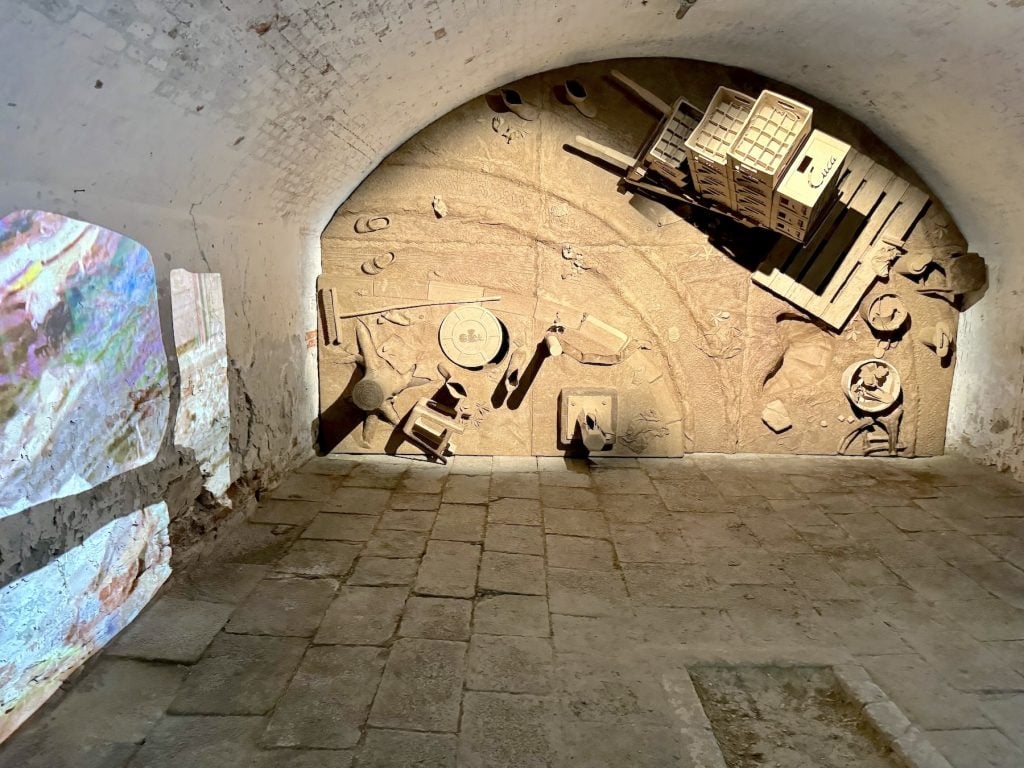
Sandra Poulson, Onde o Asfalto Termina, e a Terra Batida Começa (2024). Photo by Ben Davis.
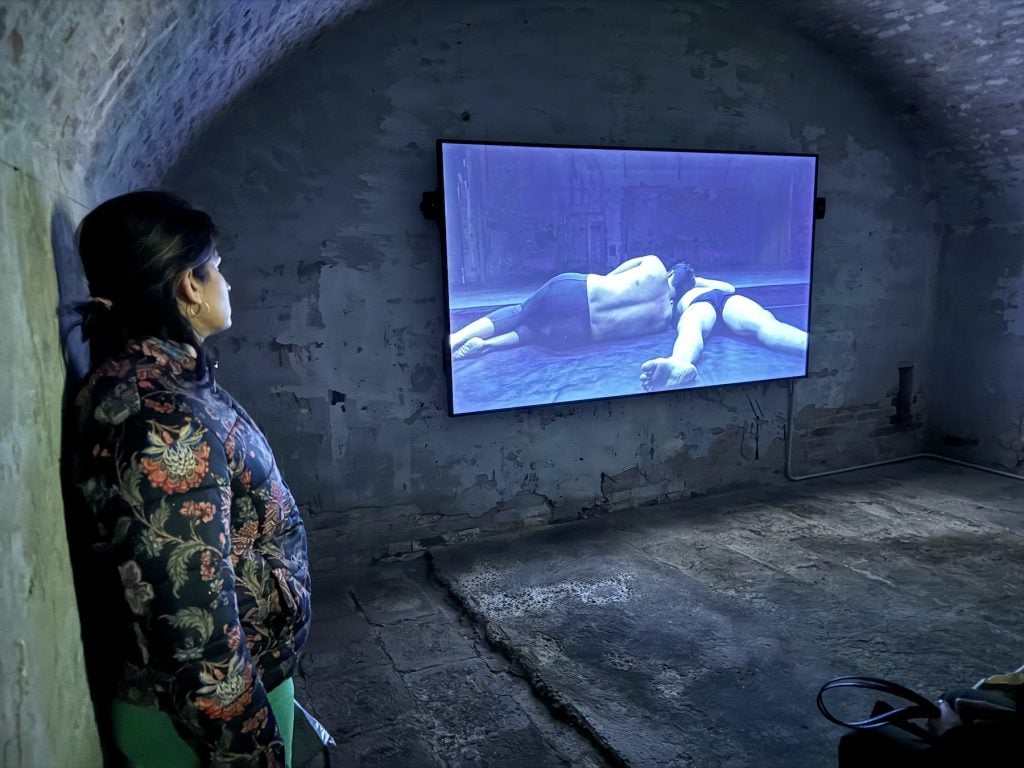
Kang Seung Lee, Lazarus (2023). Photo by Ben Davis.
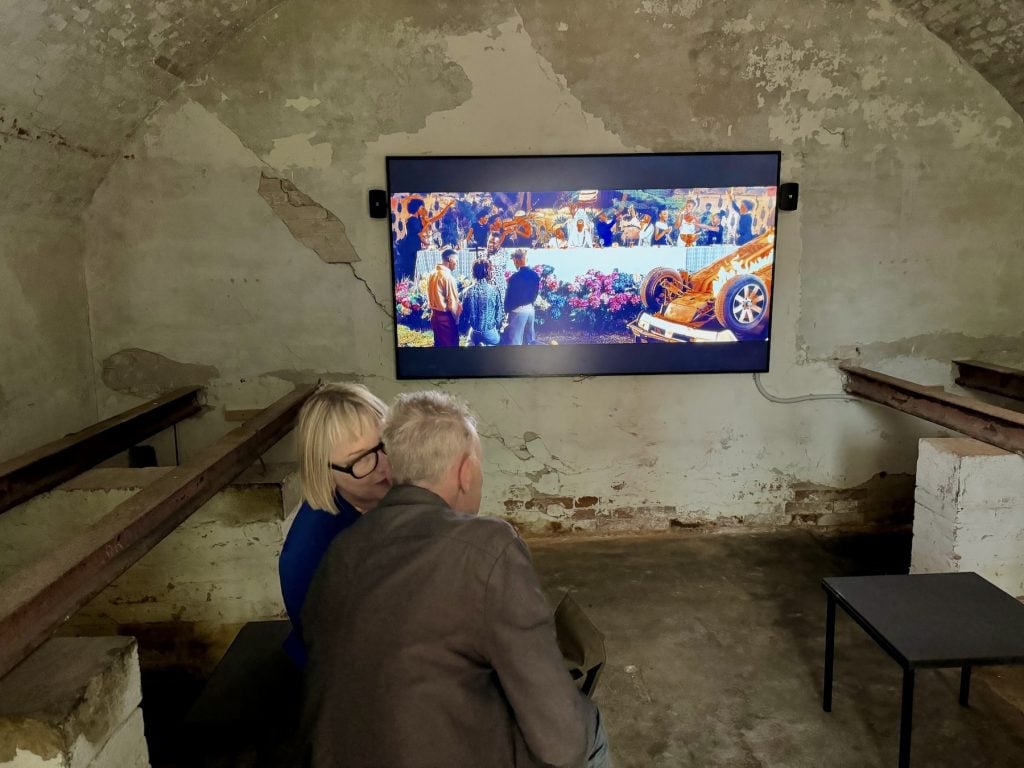
Kudzanai Chiurai, We Live in Silence (2017). Photo by Ben Davis.
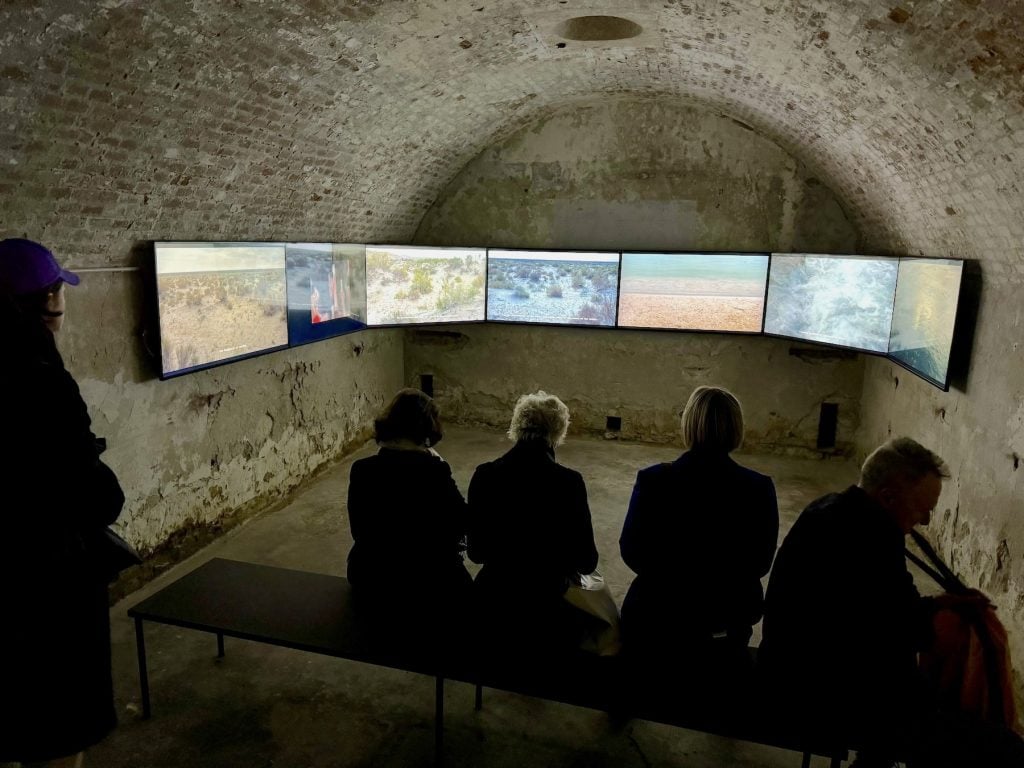
Nazira Karimi, Hafta (2024). Photo by Ben Davis.
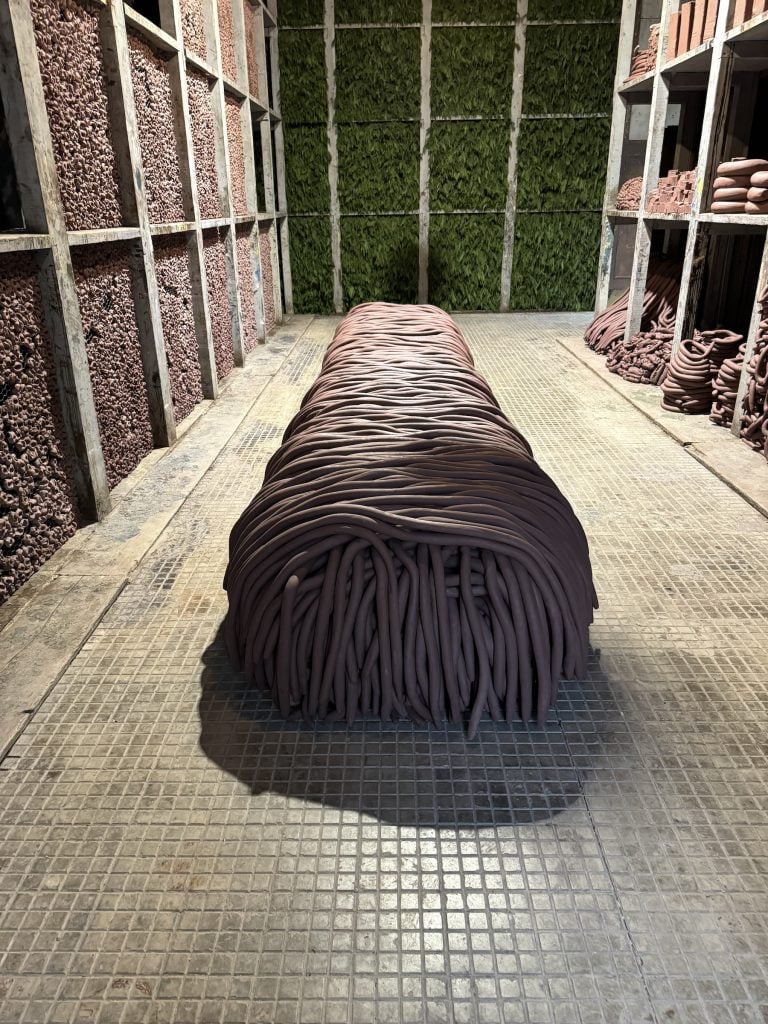
Anna Maria Maiolino, INDO & VINDO (2024). Photo by Ben Davis.
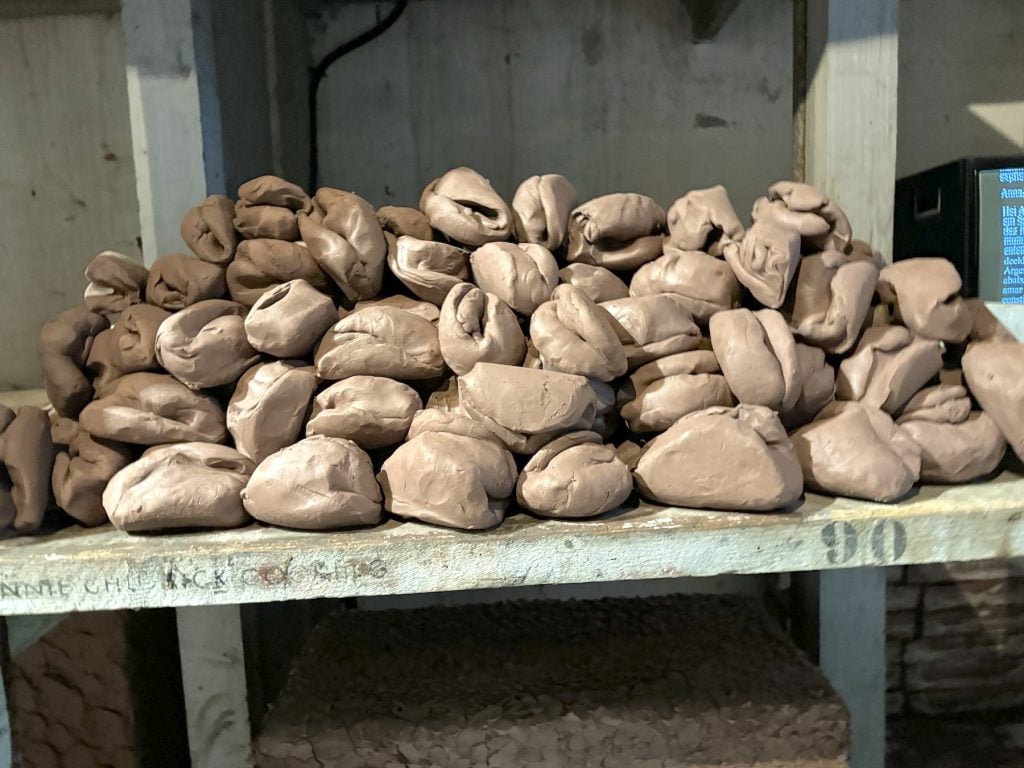
Detail of Anna Maria Maiolino installation outside the Arsenale. Photo by Ben Davis.
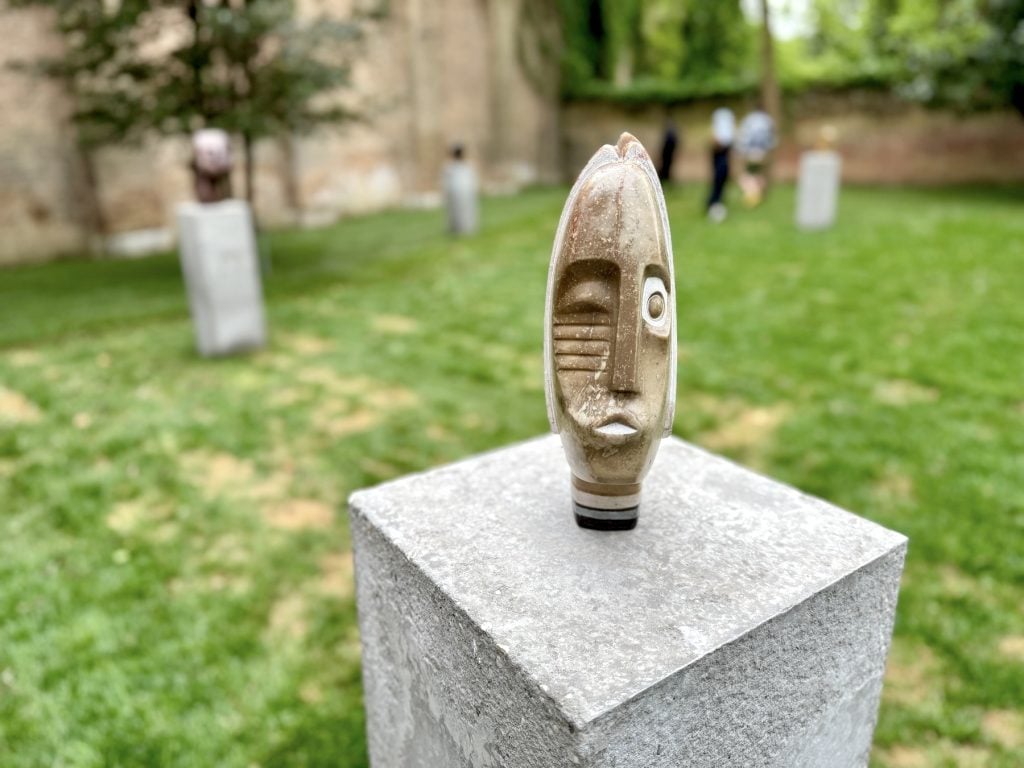
Taylor Nkomo, Fashion Girl (2023). Photo by Ben Davis.
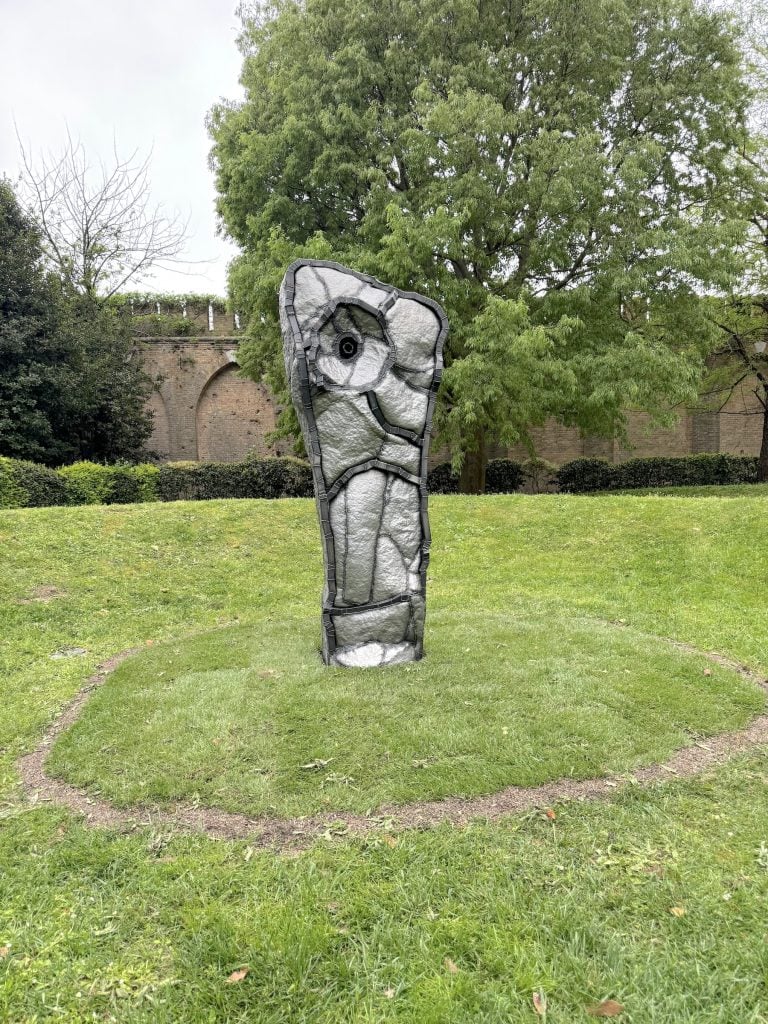
Beatriz Cortez, Stele XX (Absence), 2024. Photo by Ben Davis.
The 60th Venice Biennale, “Foreigners Everywhere,” curated by Adriano Pedrosa, is on view in Venice, Italy, through November 24, 2024.





